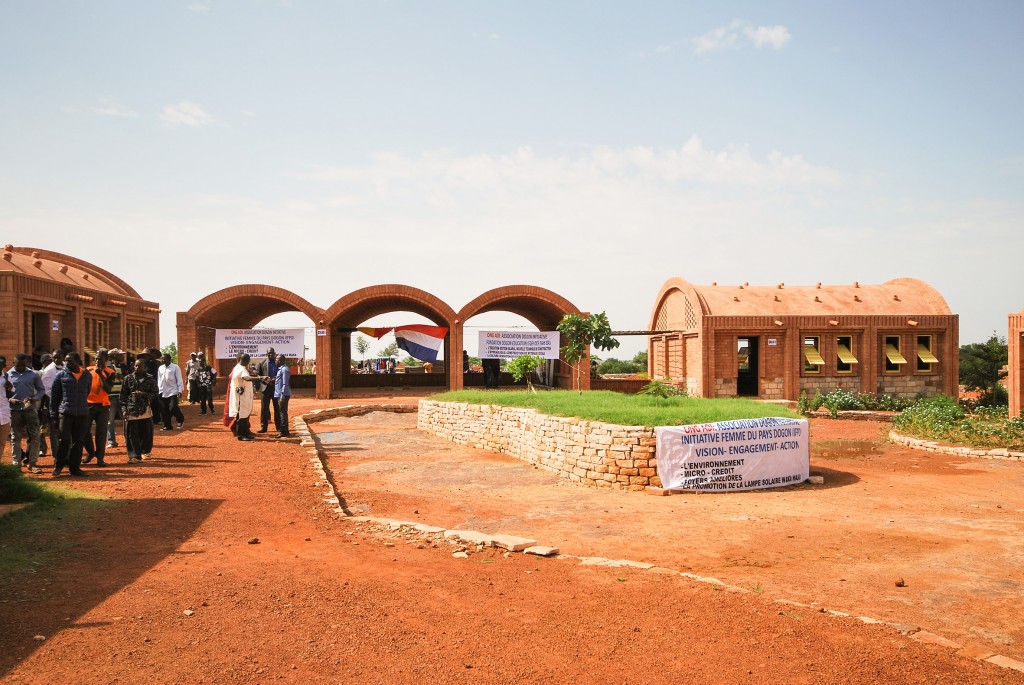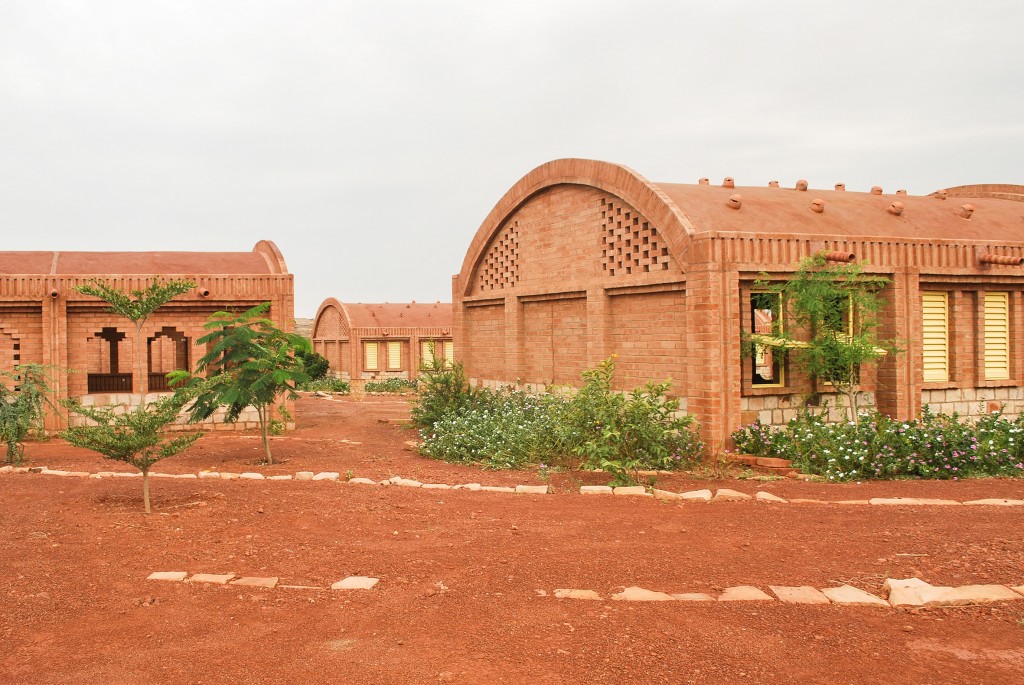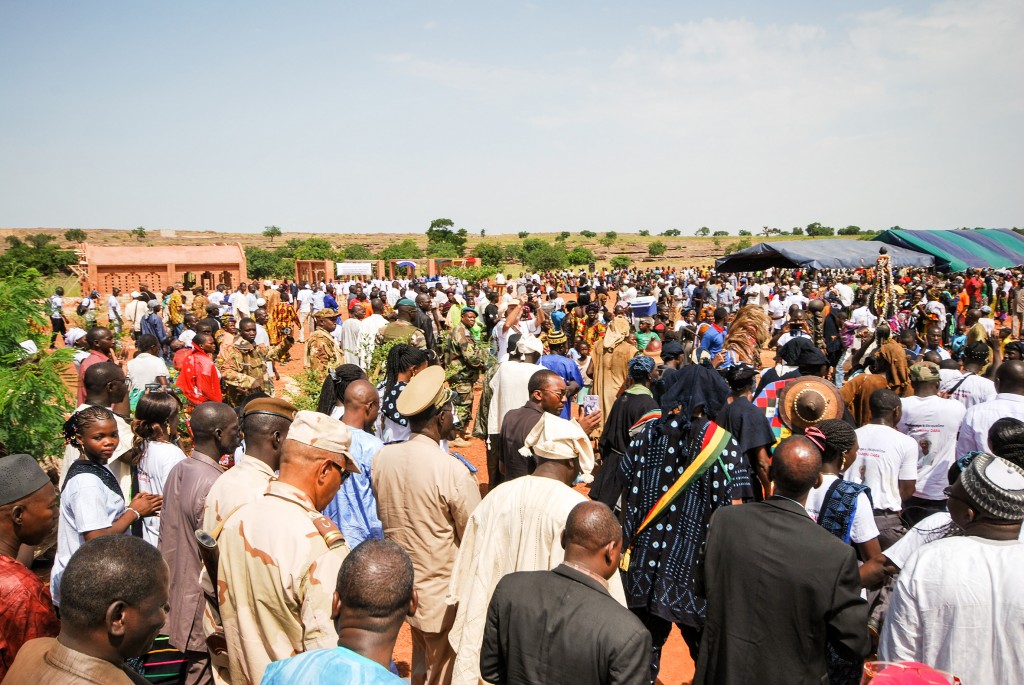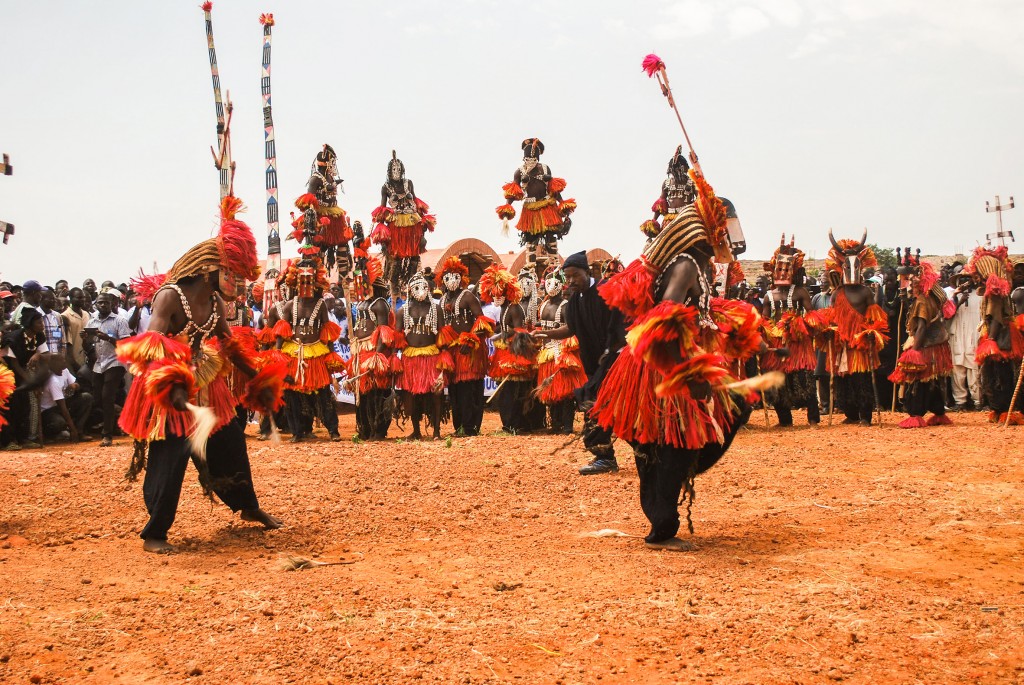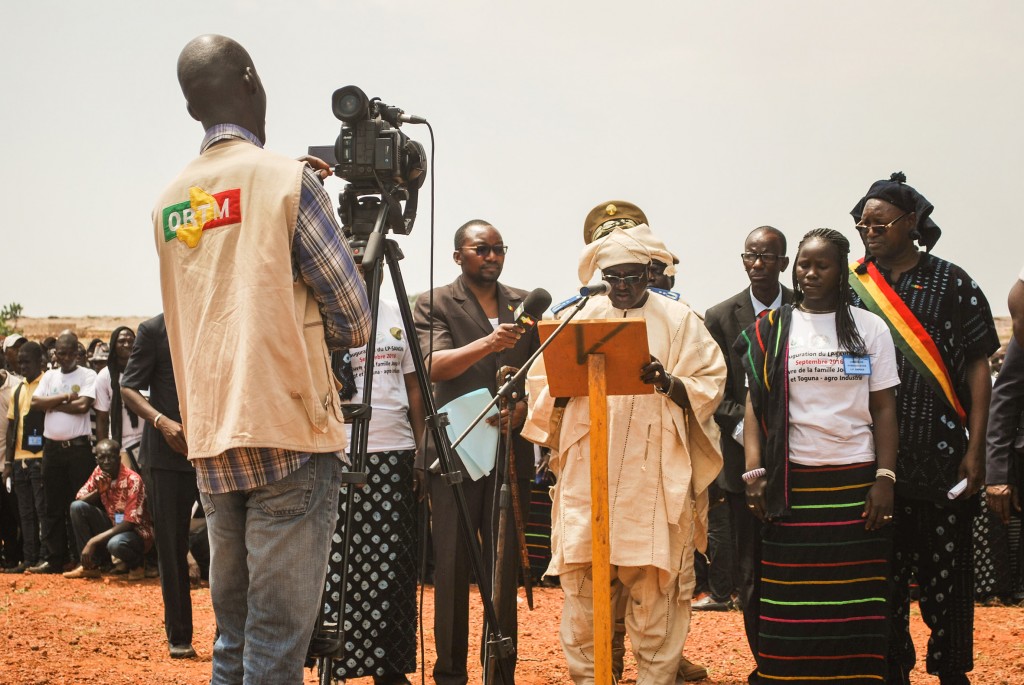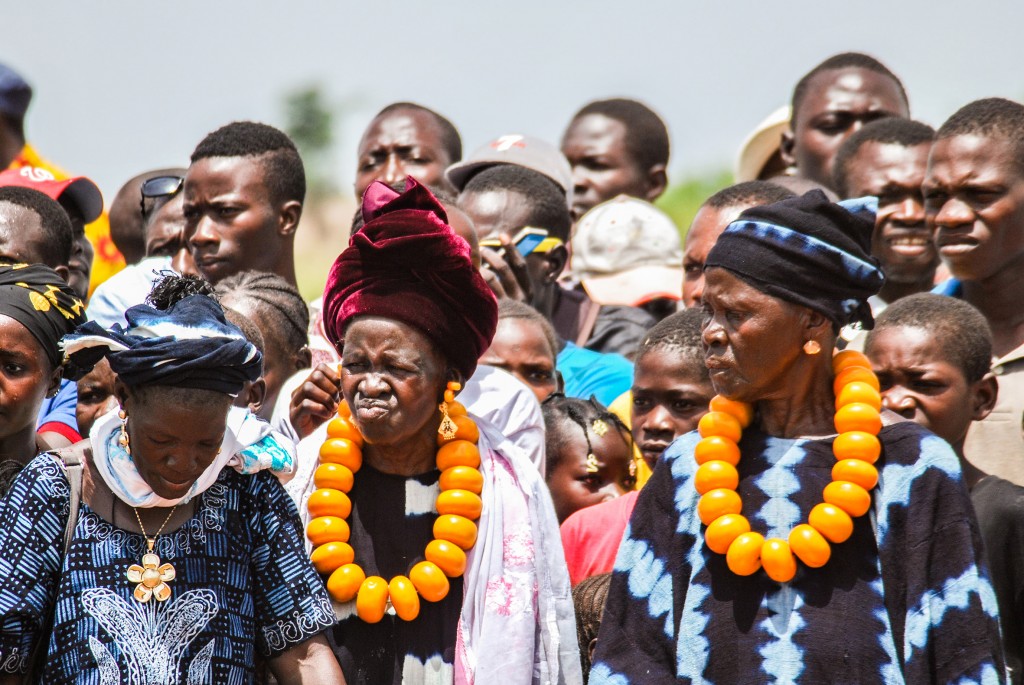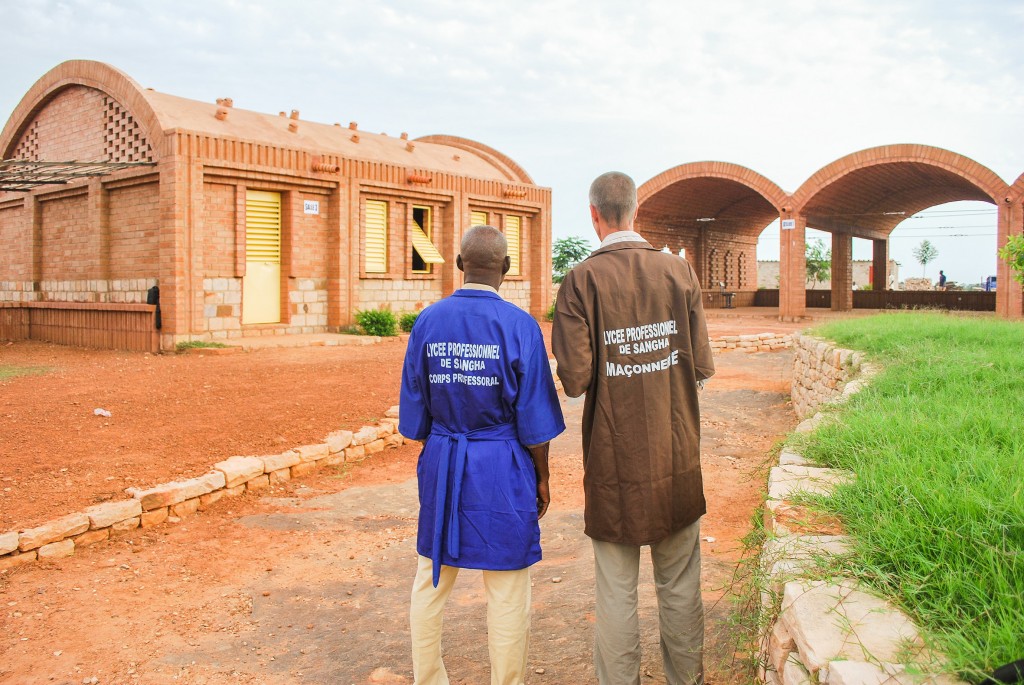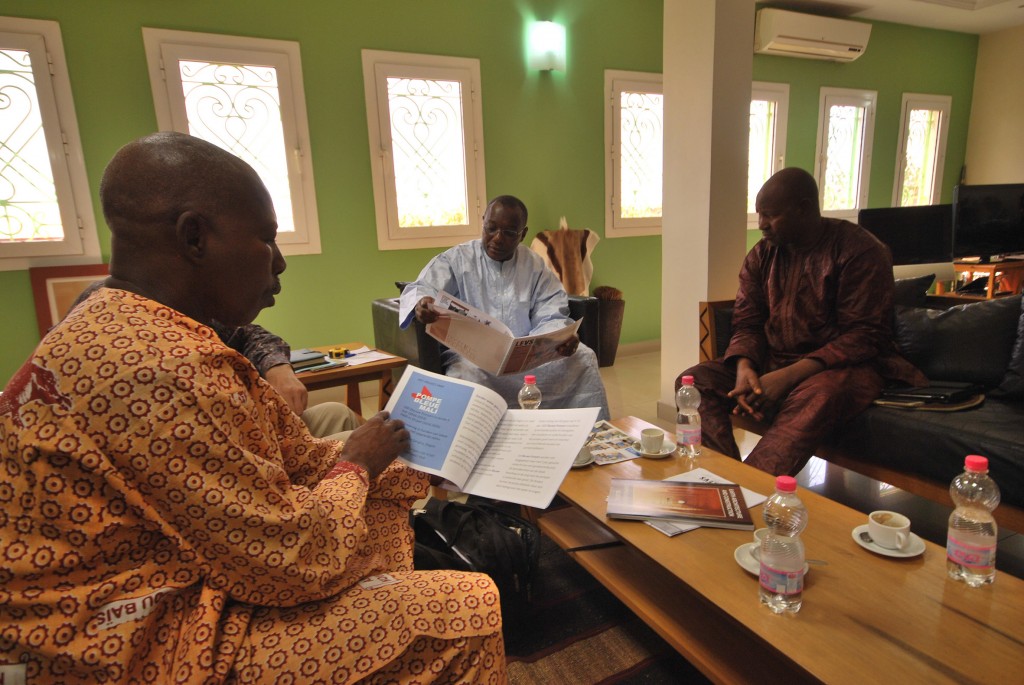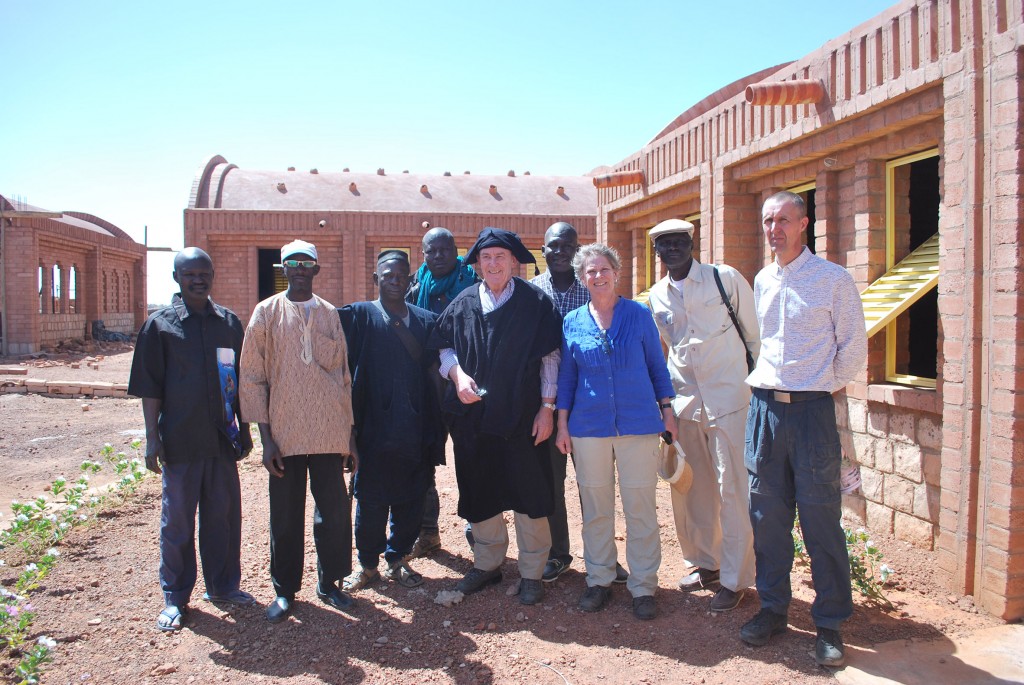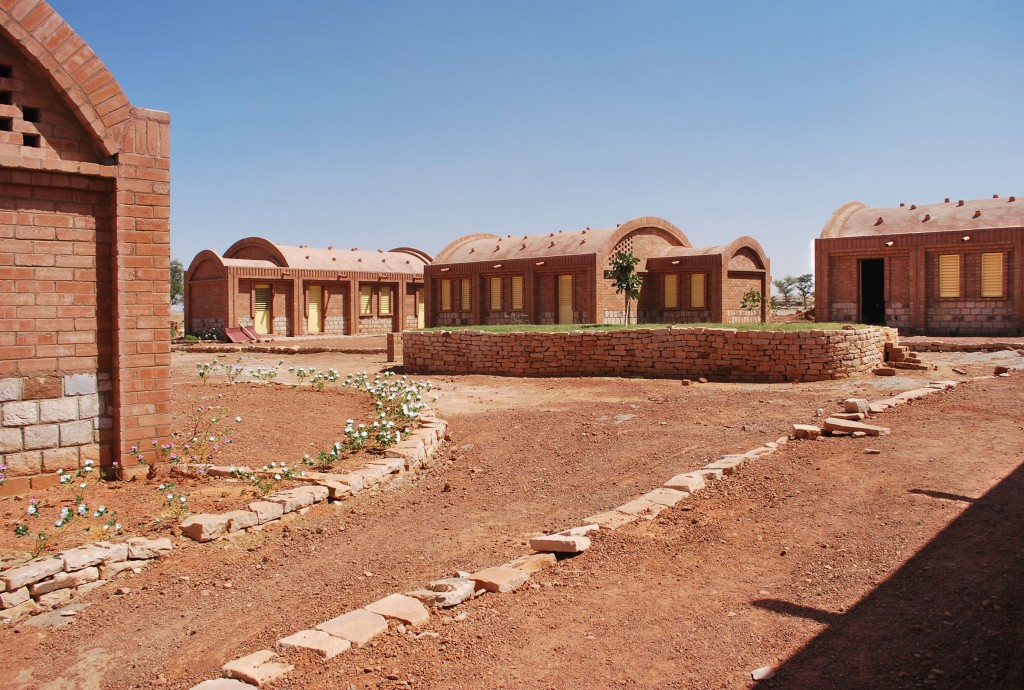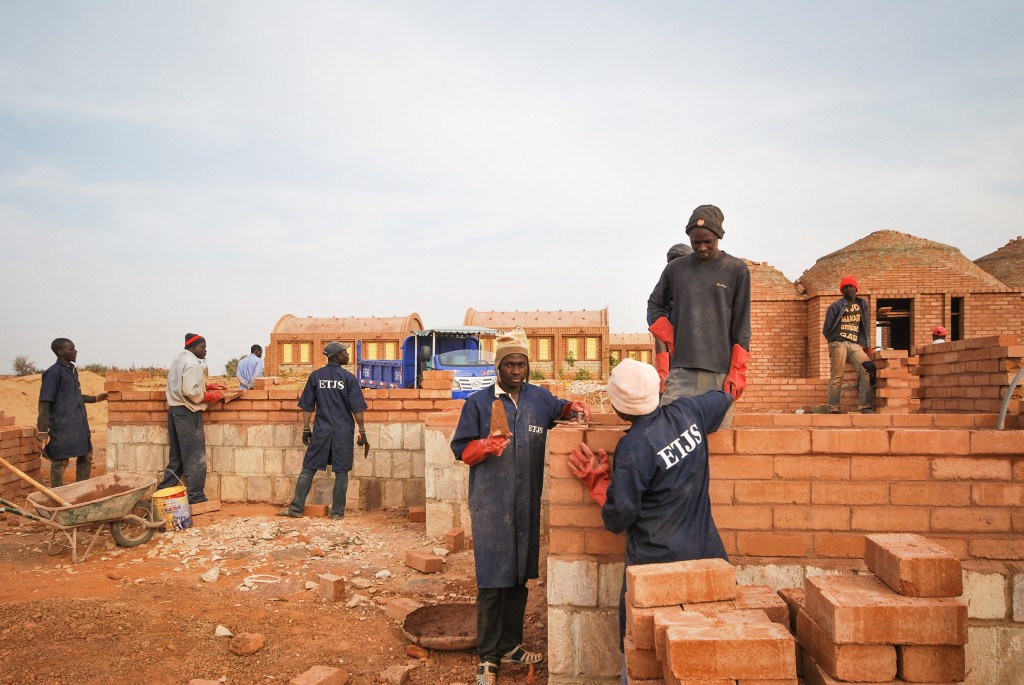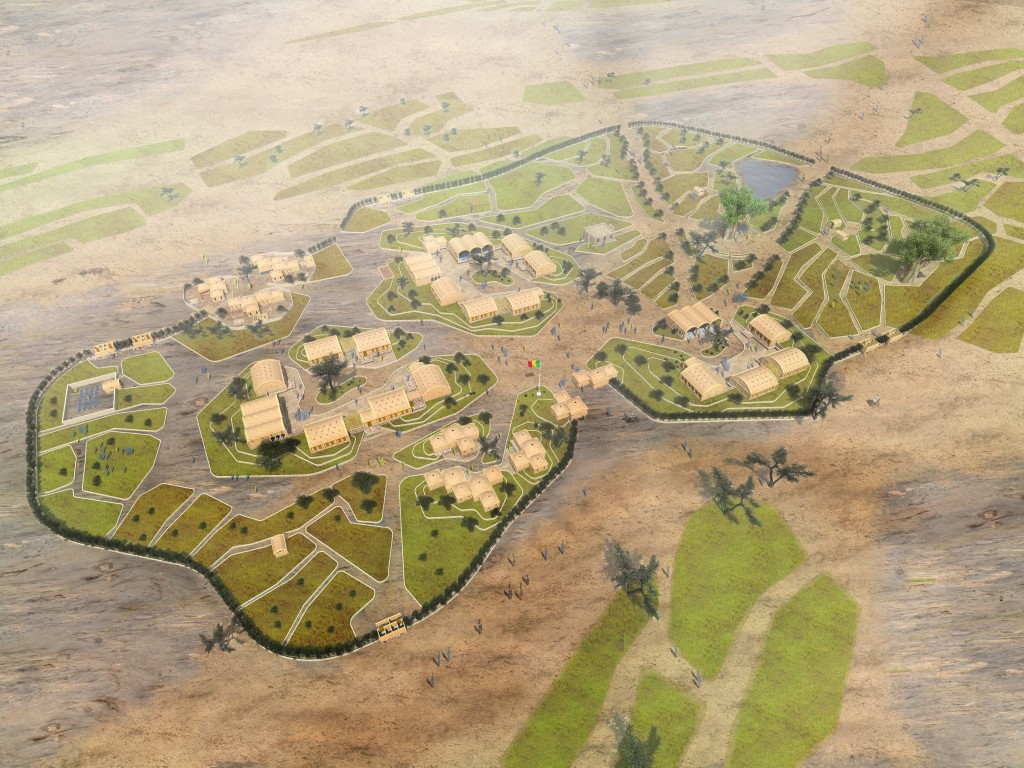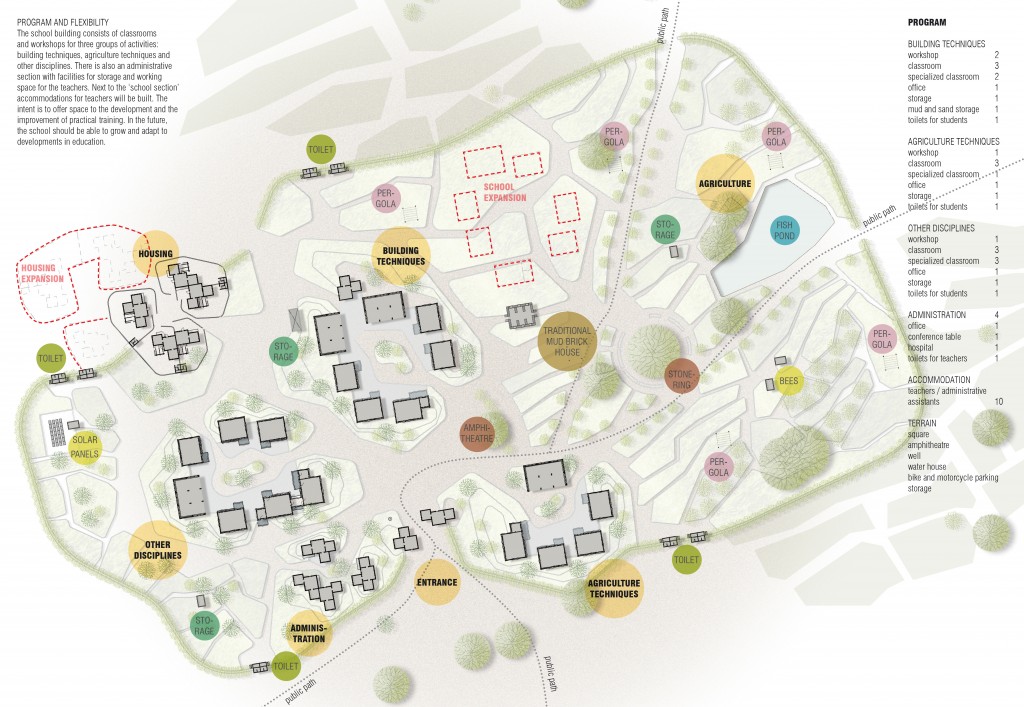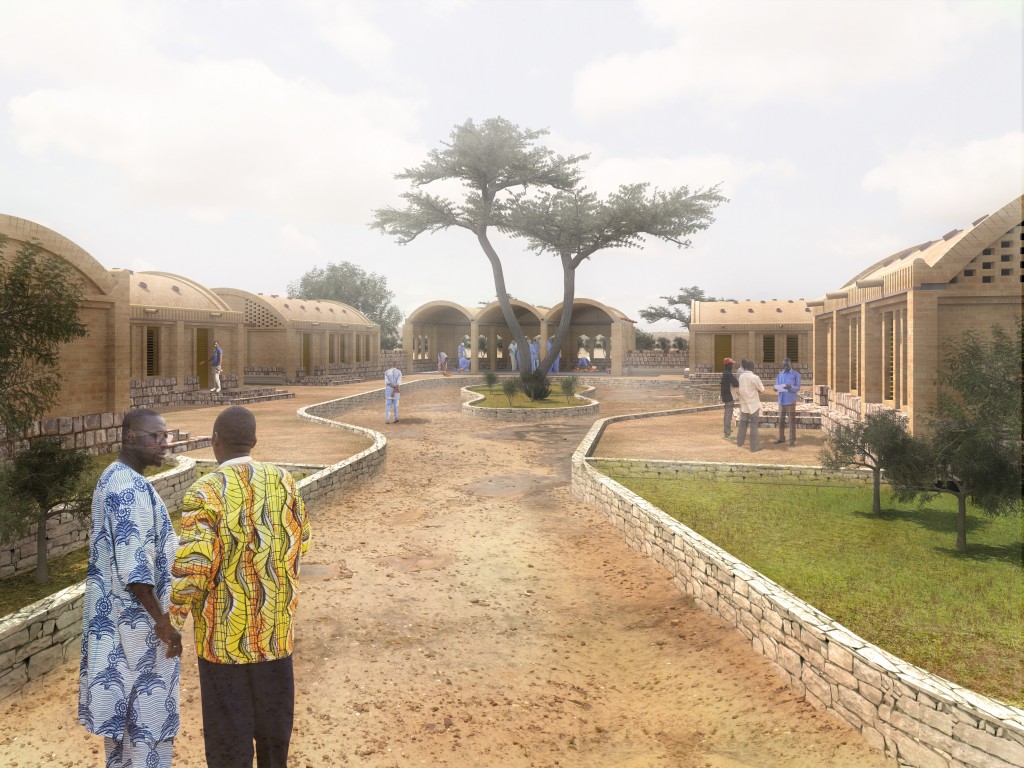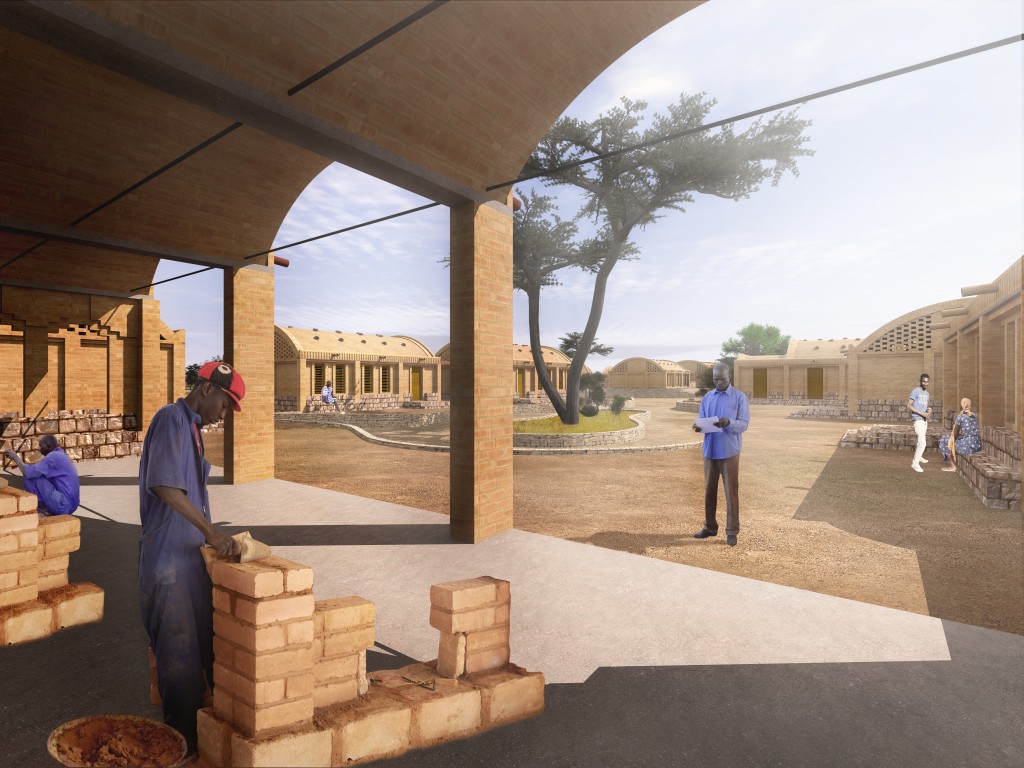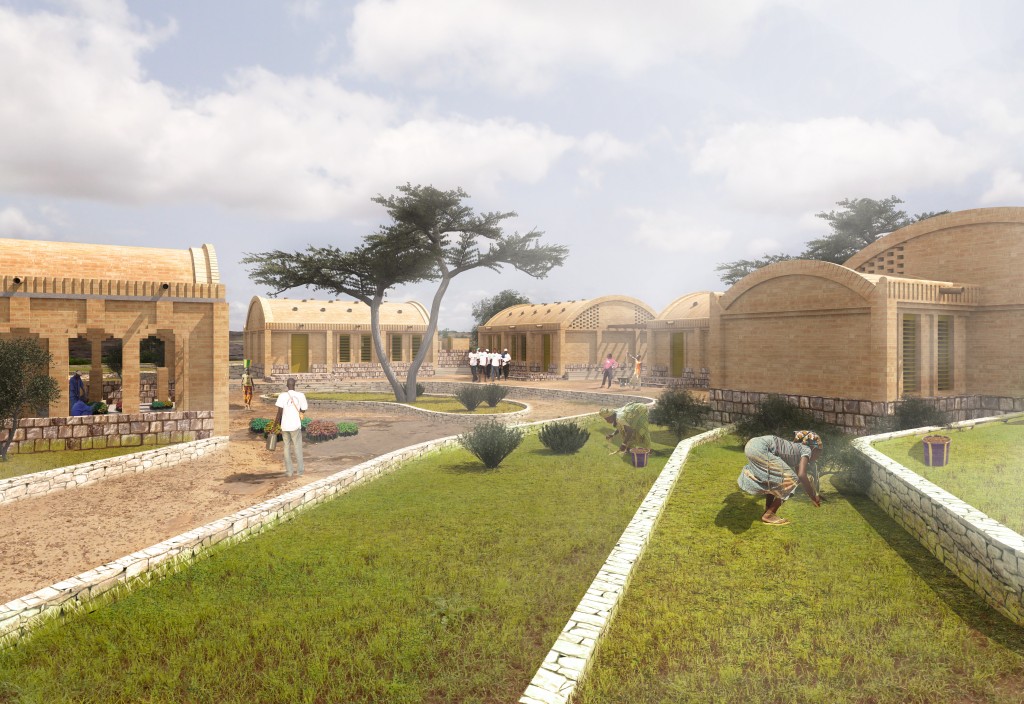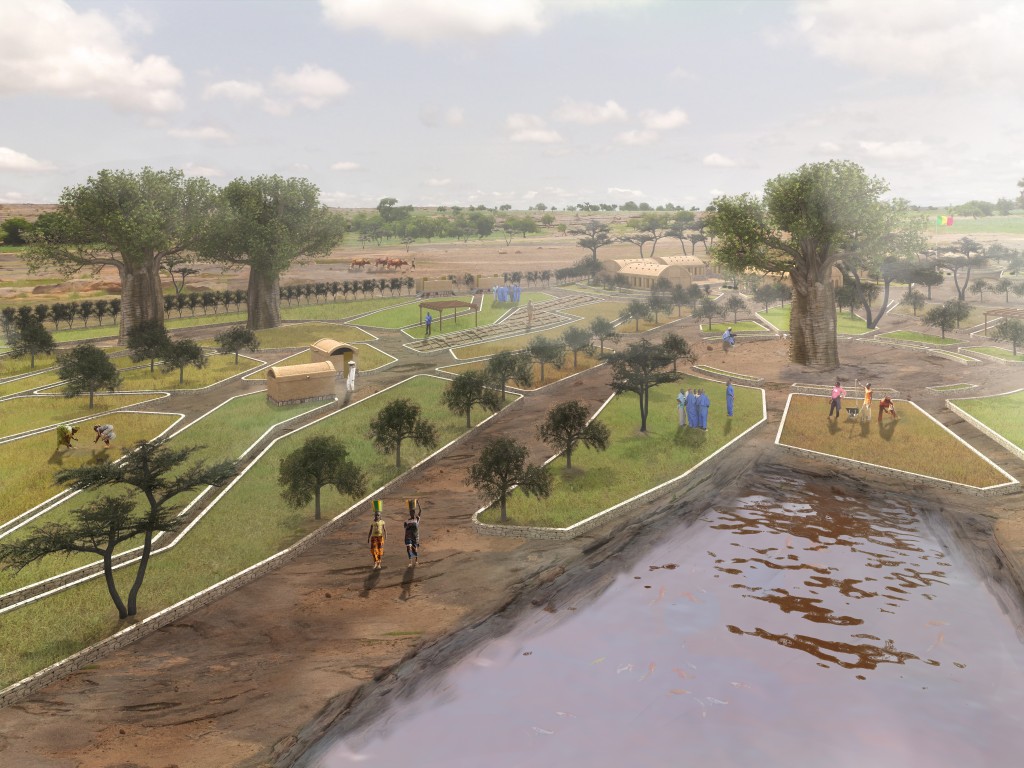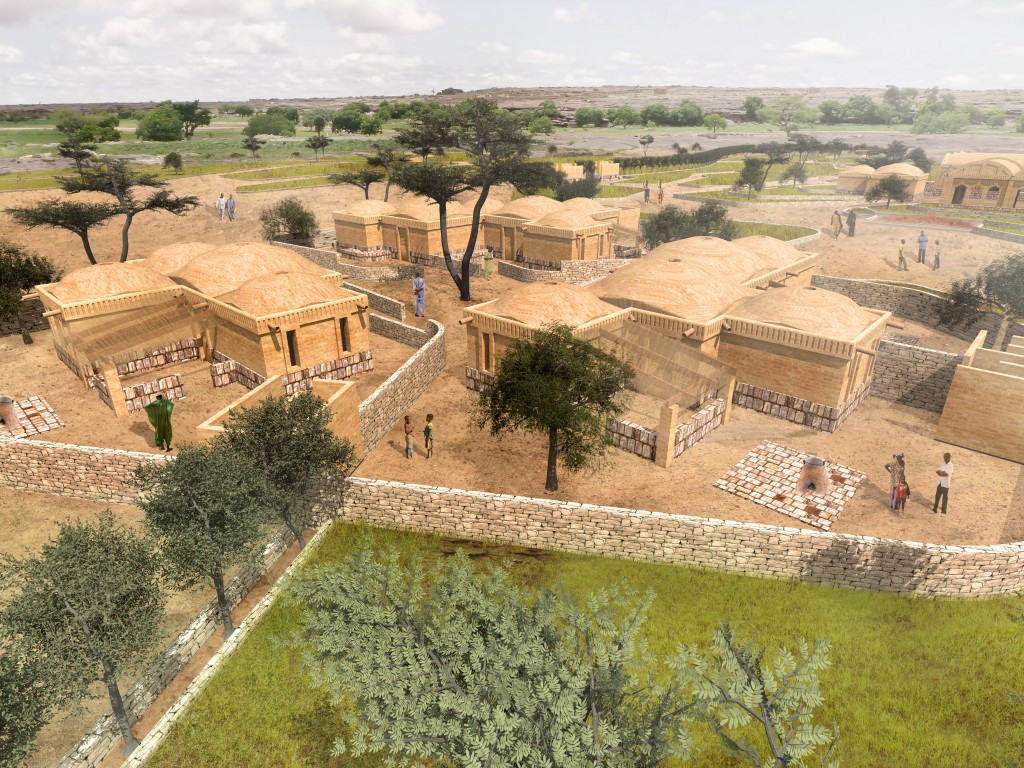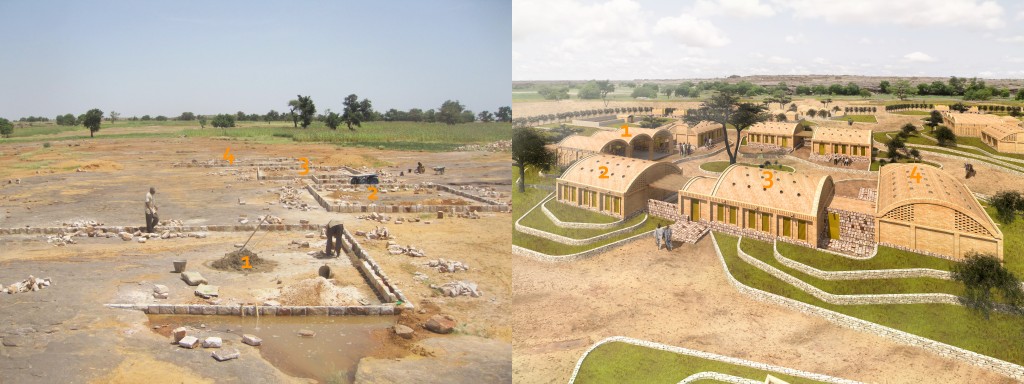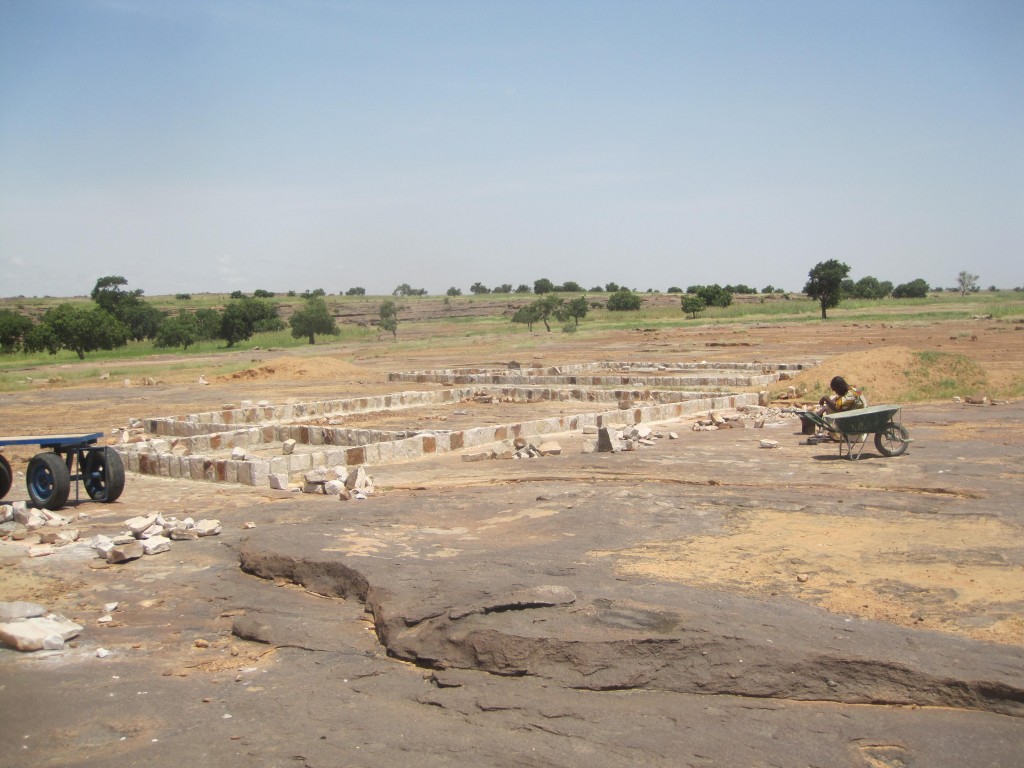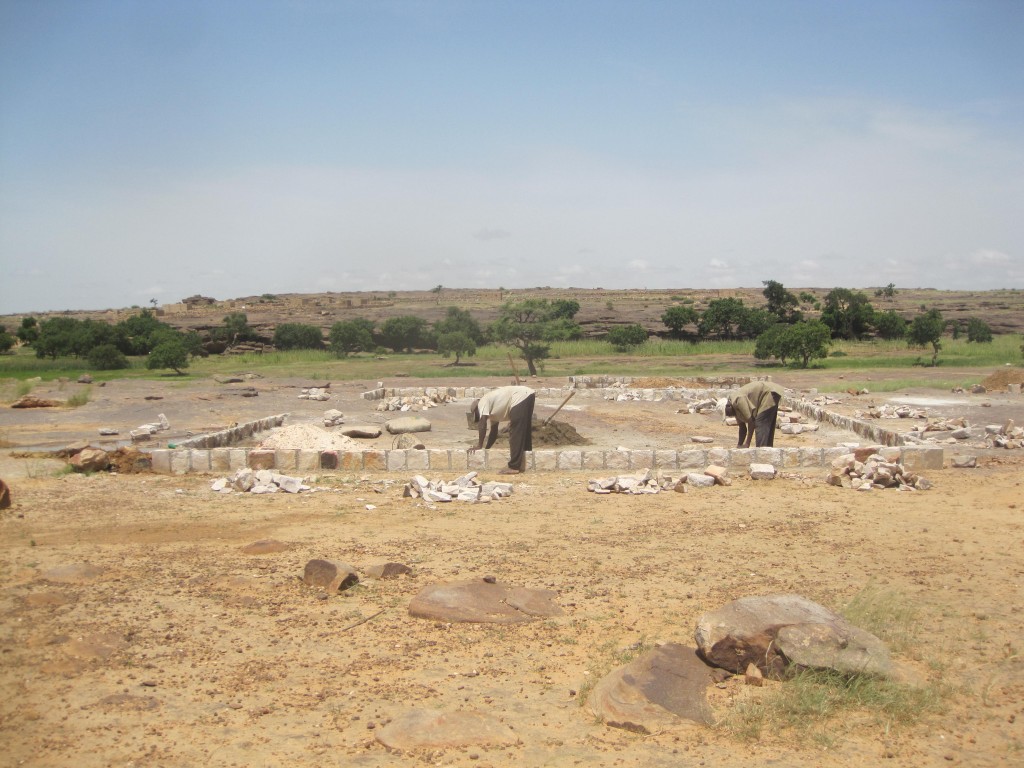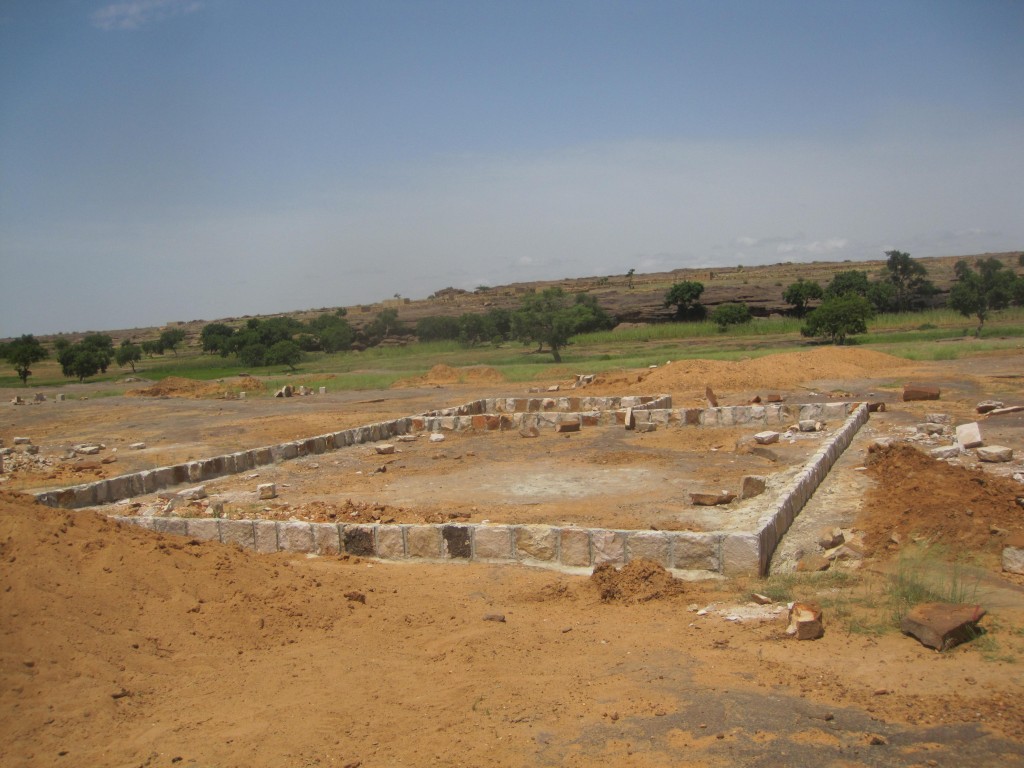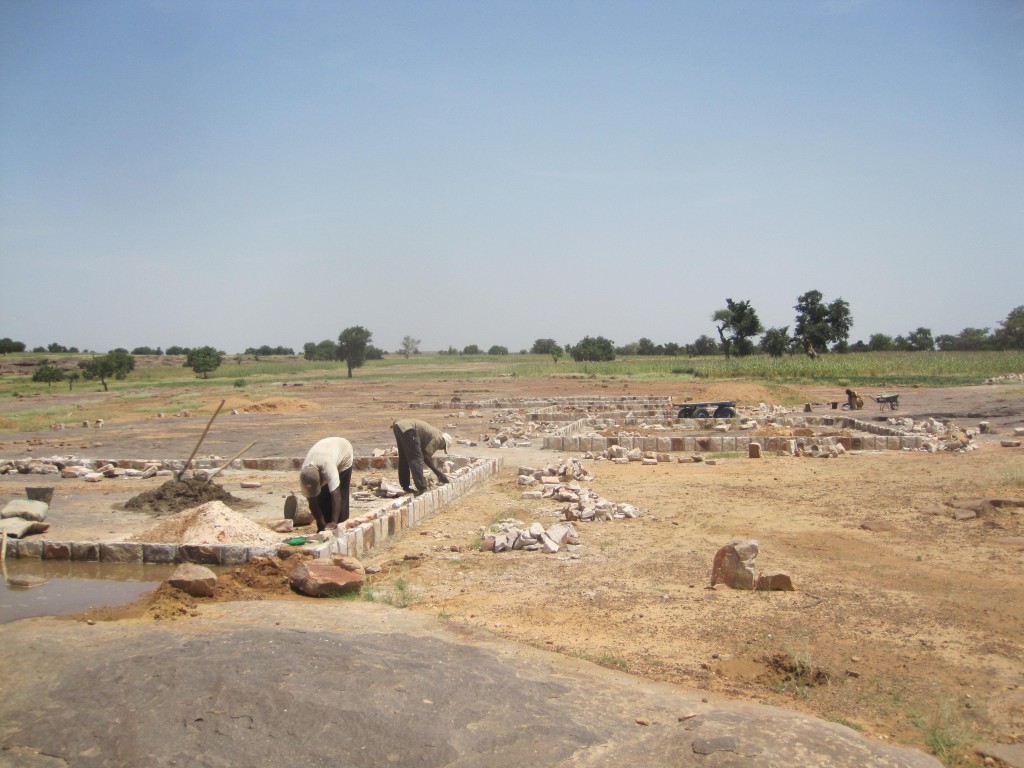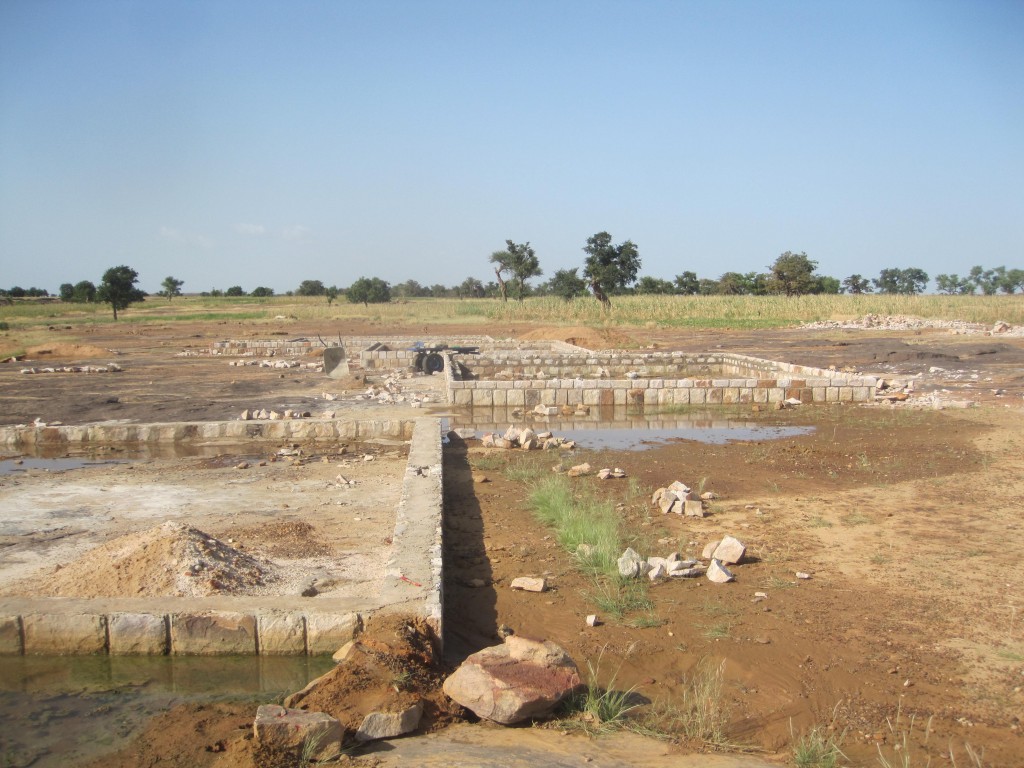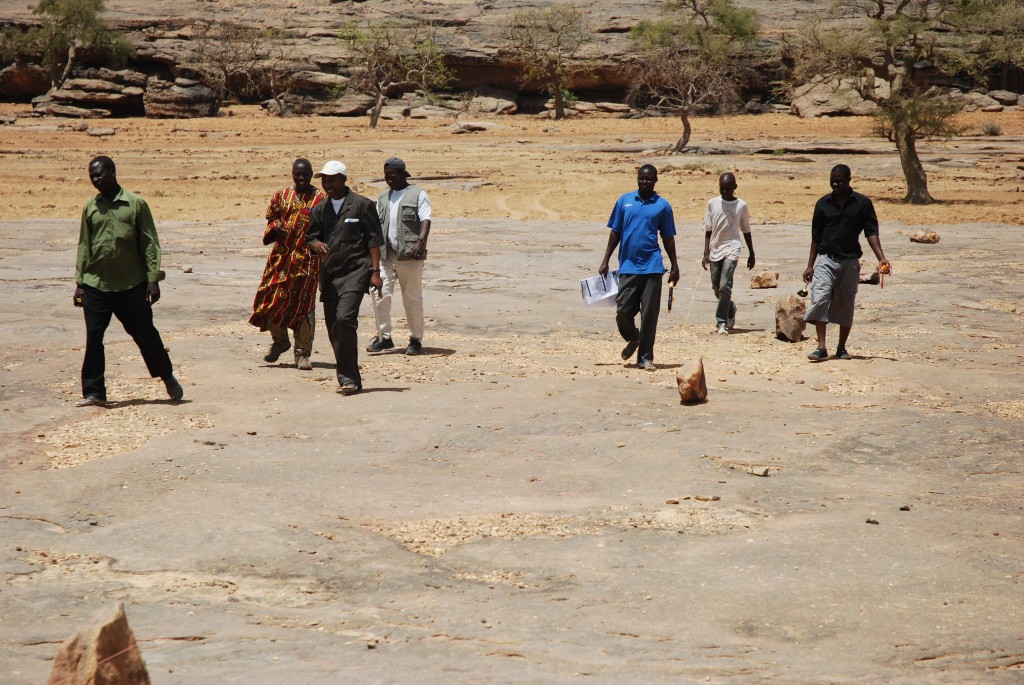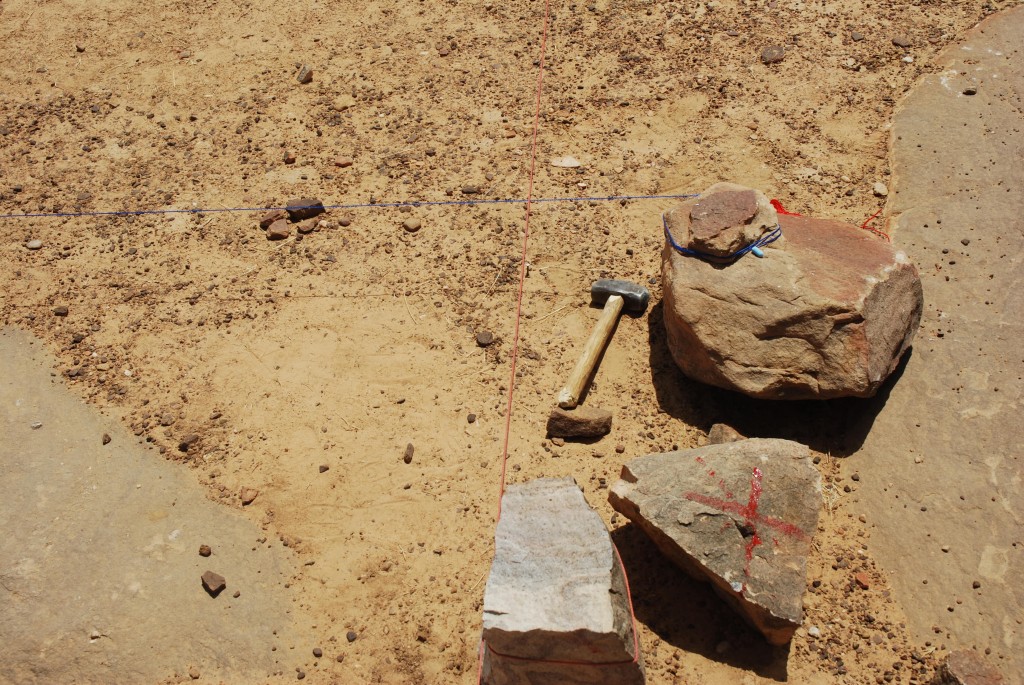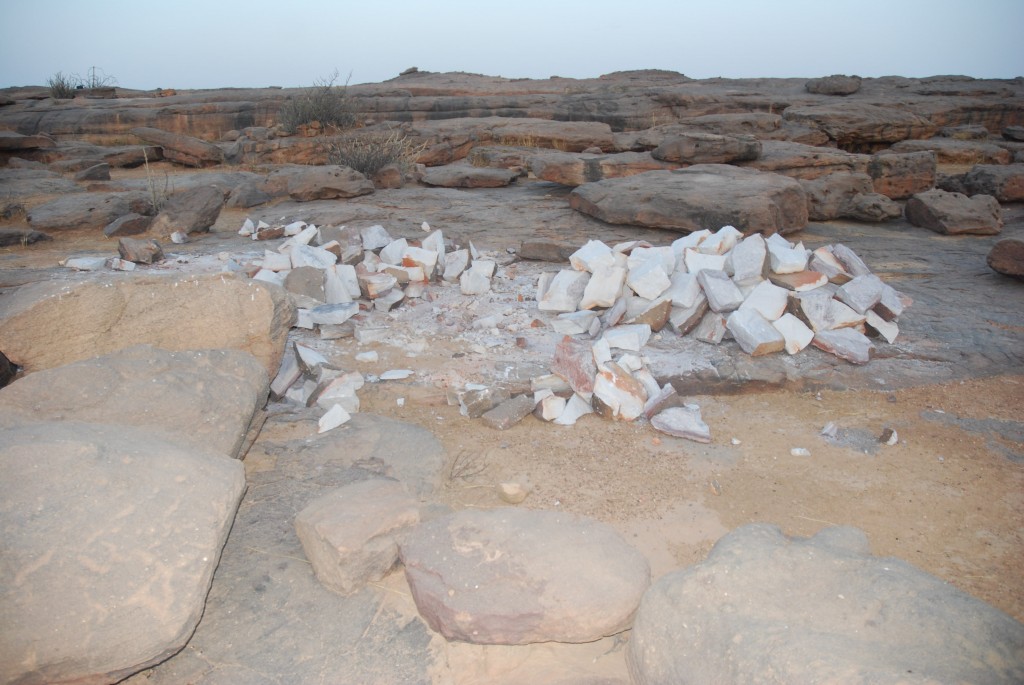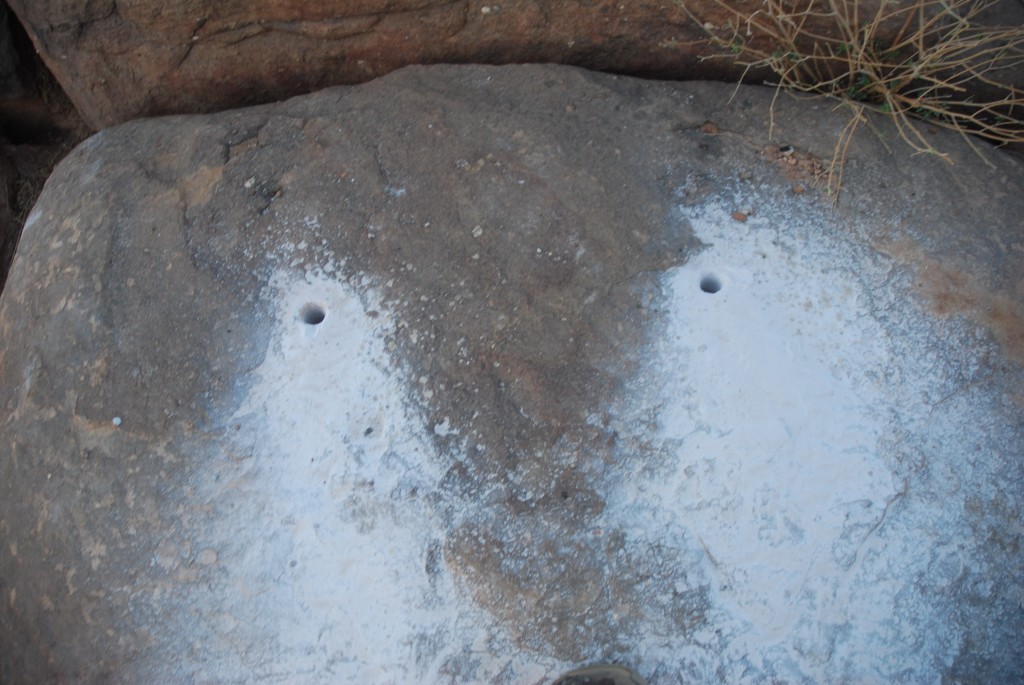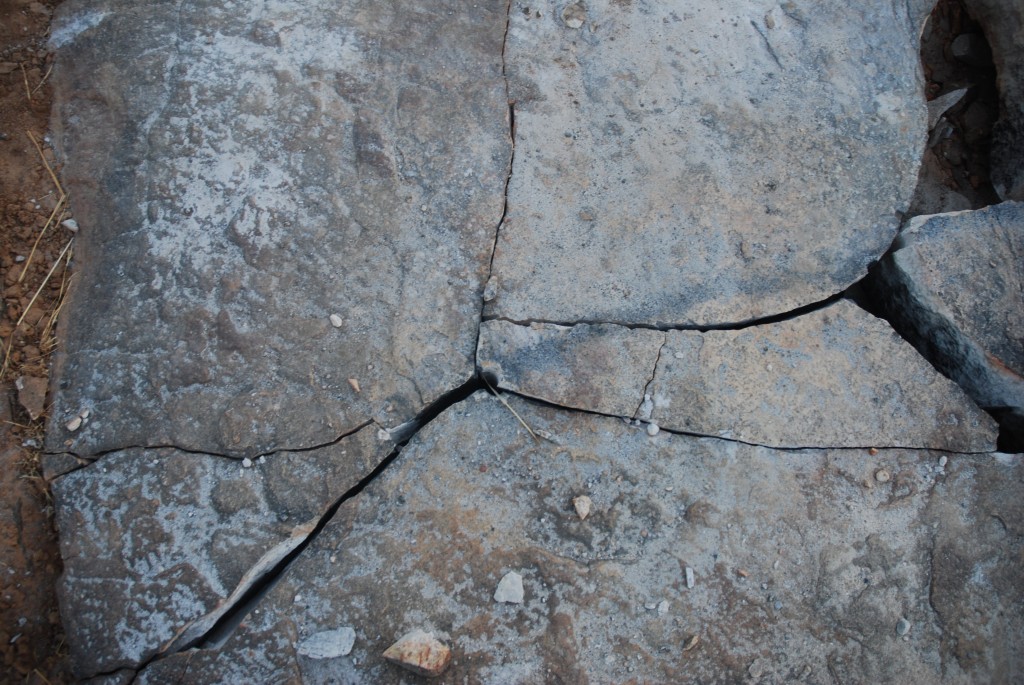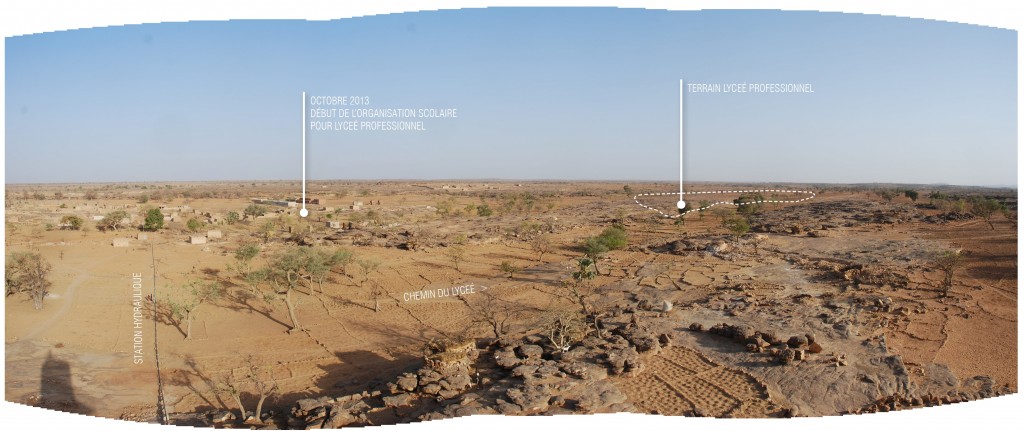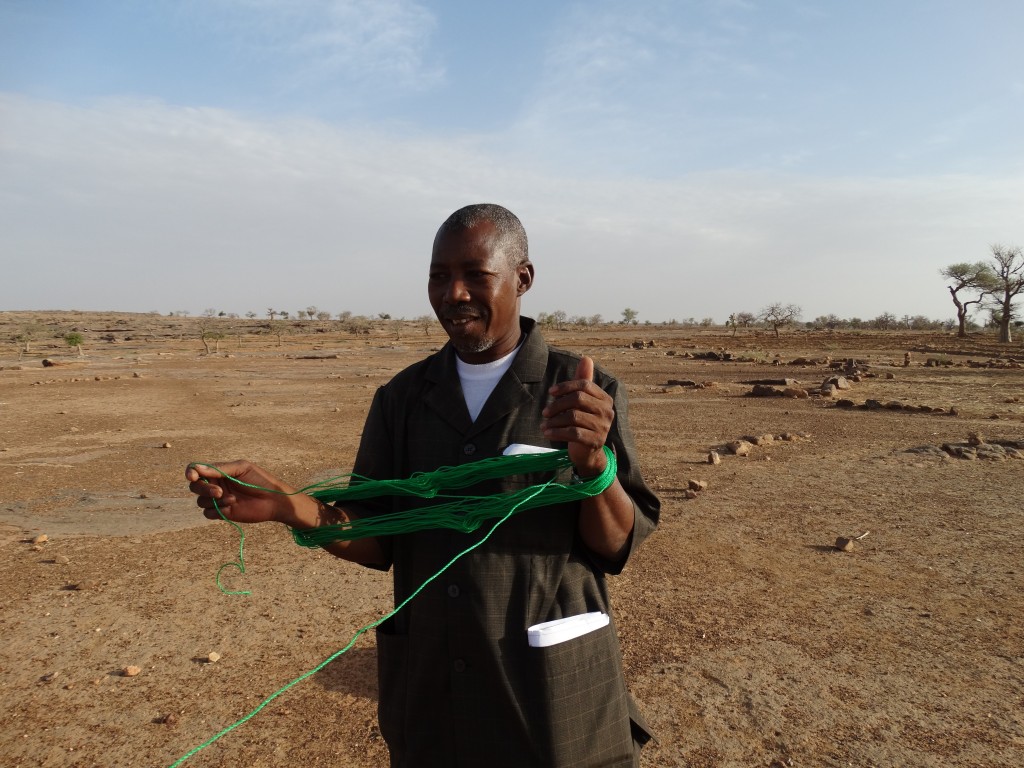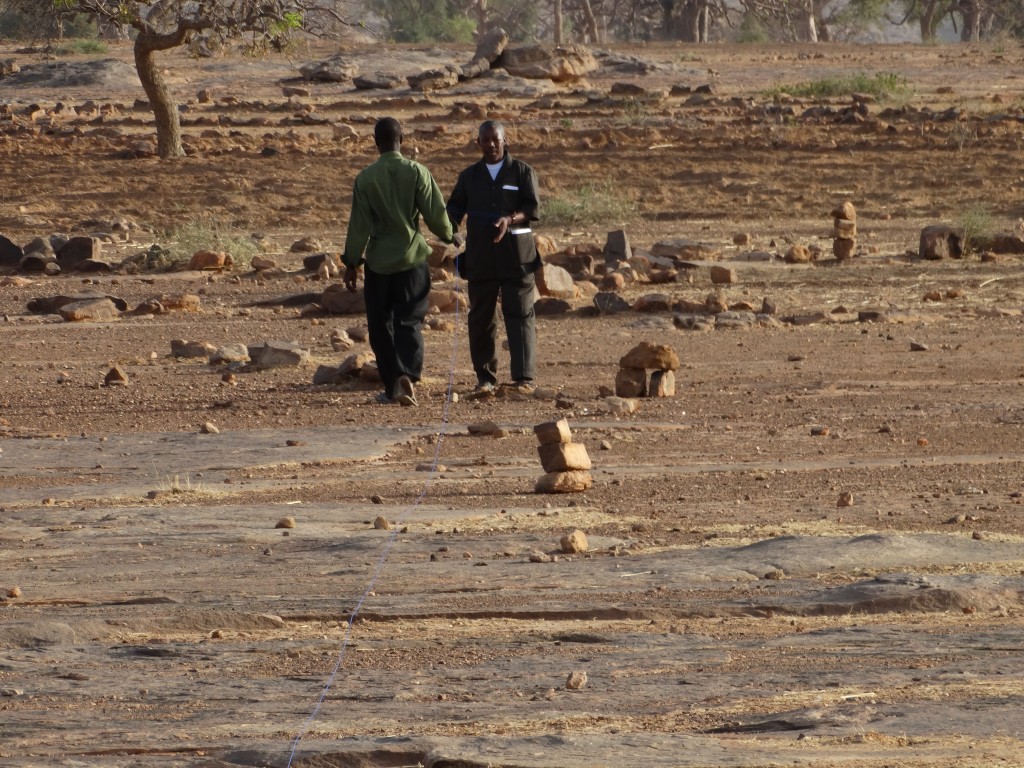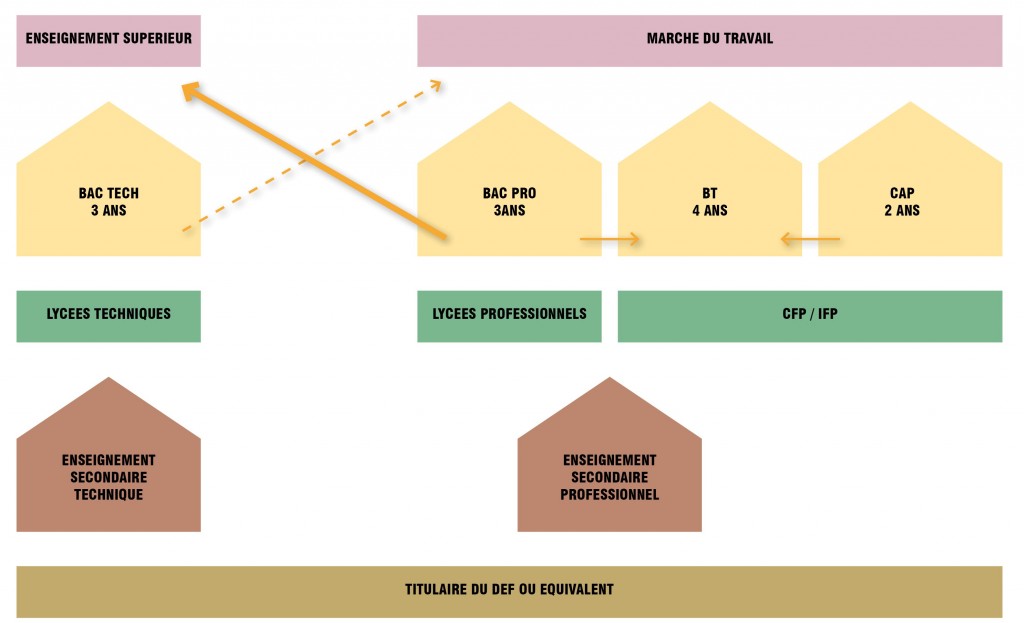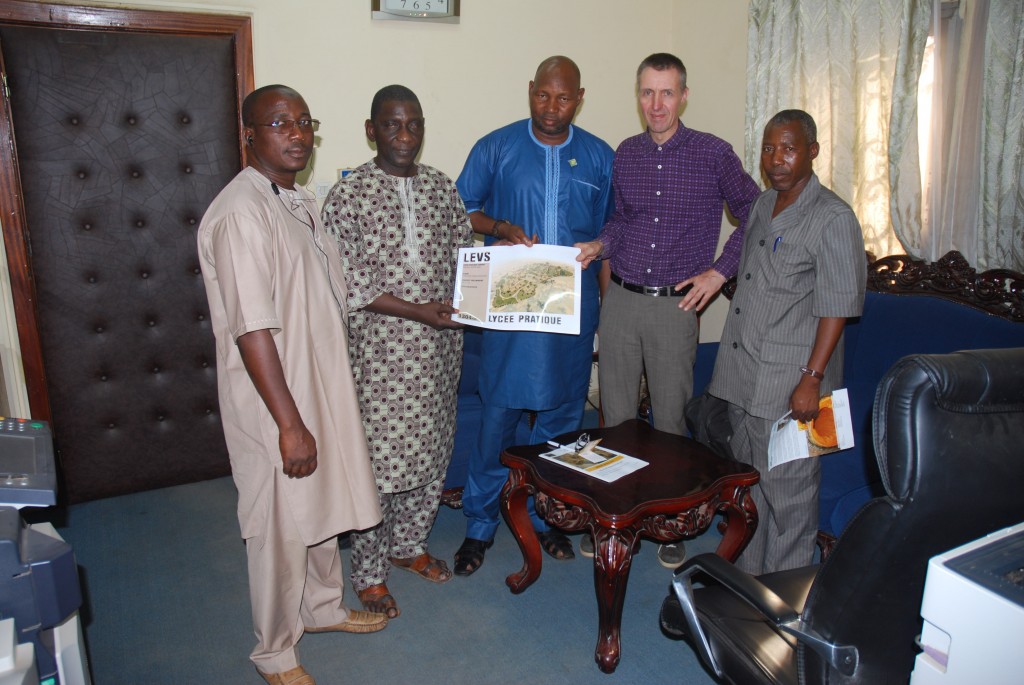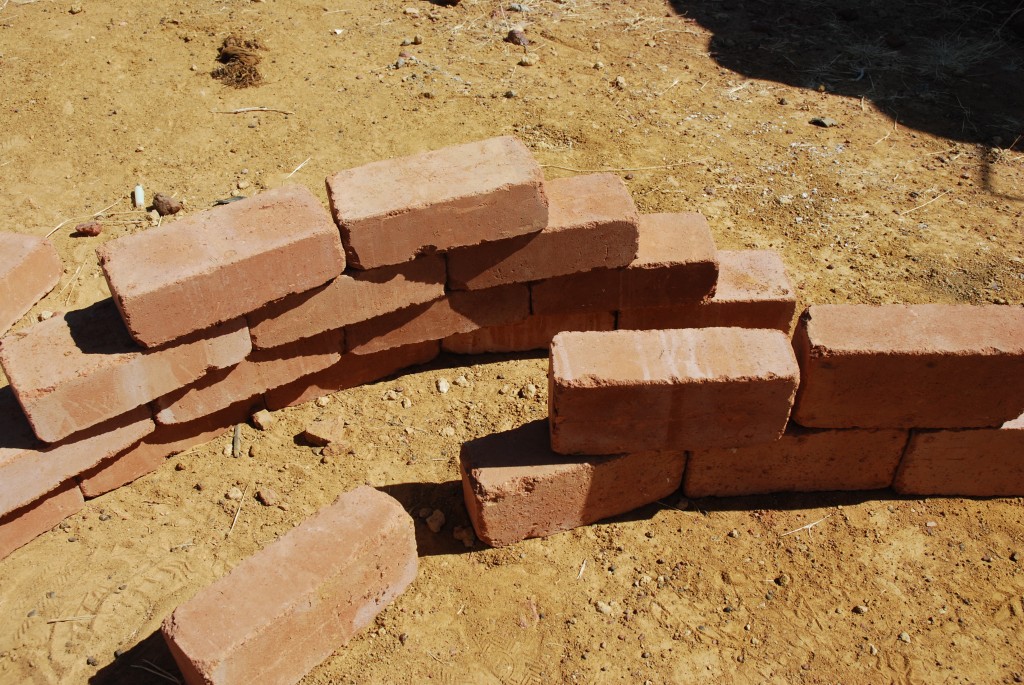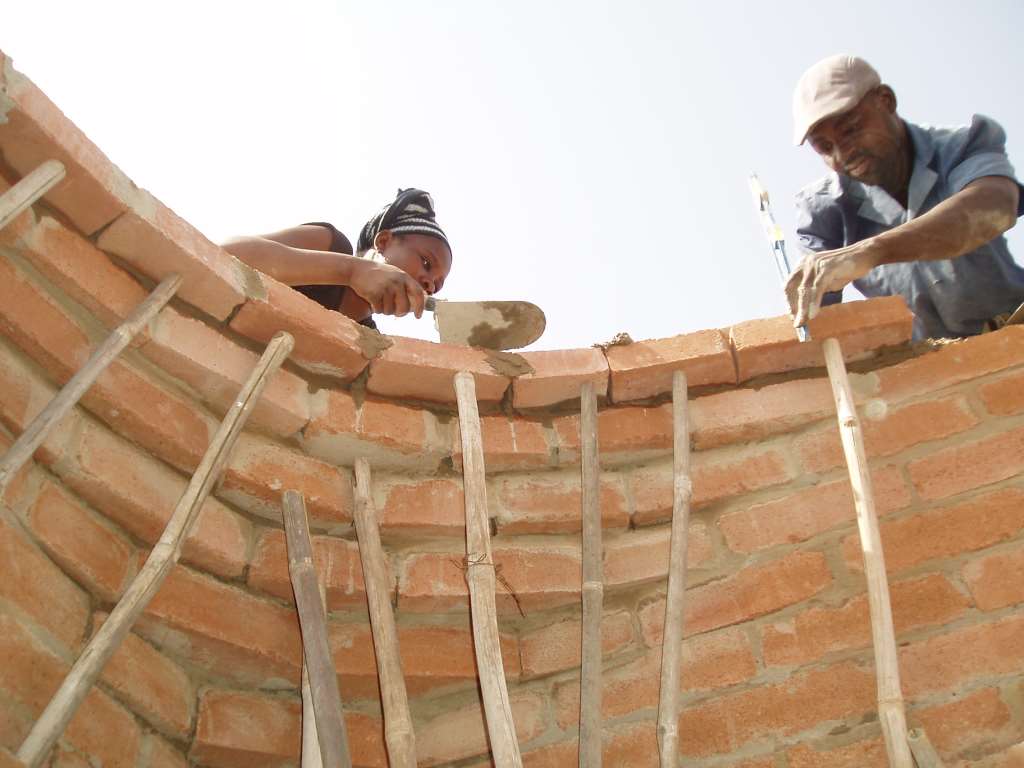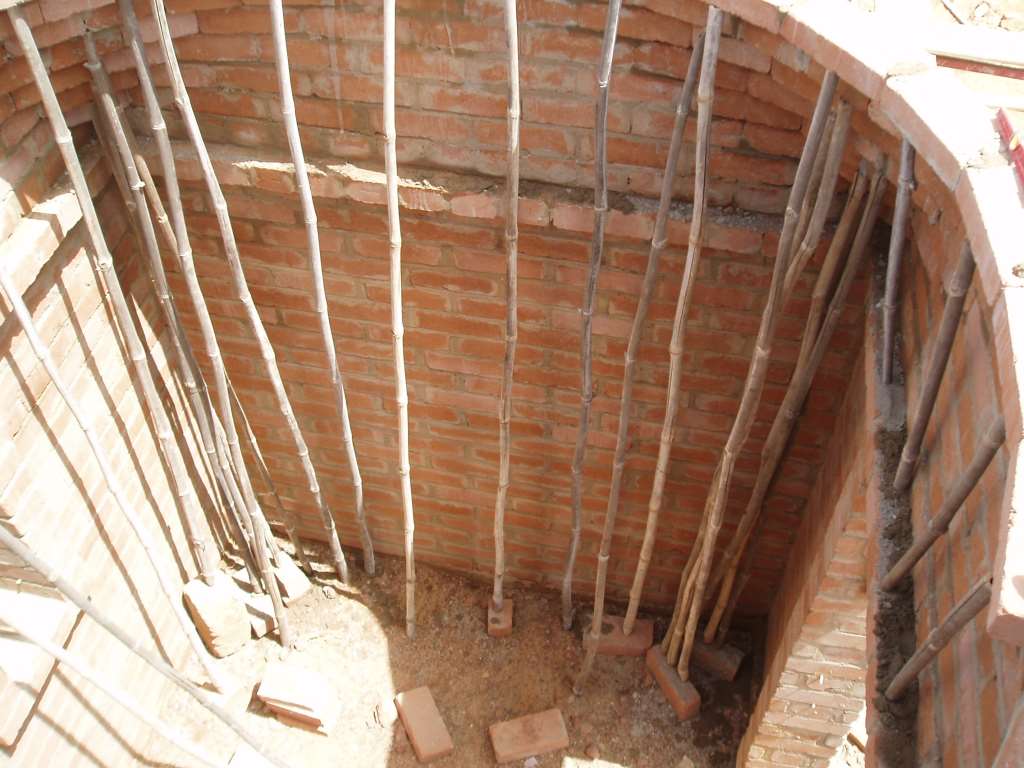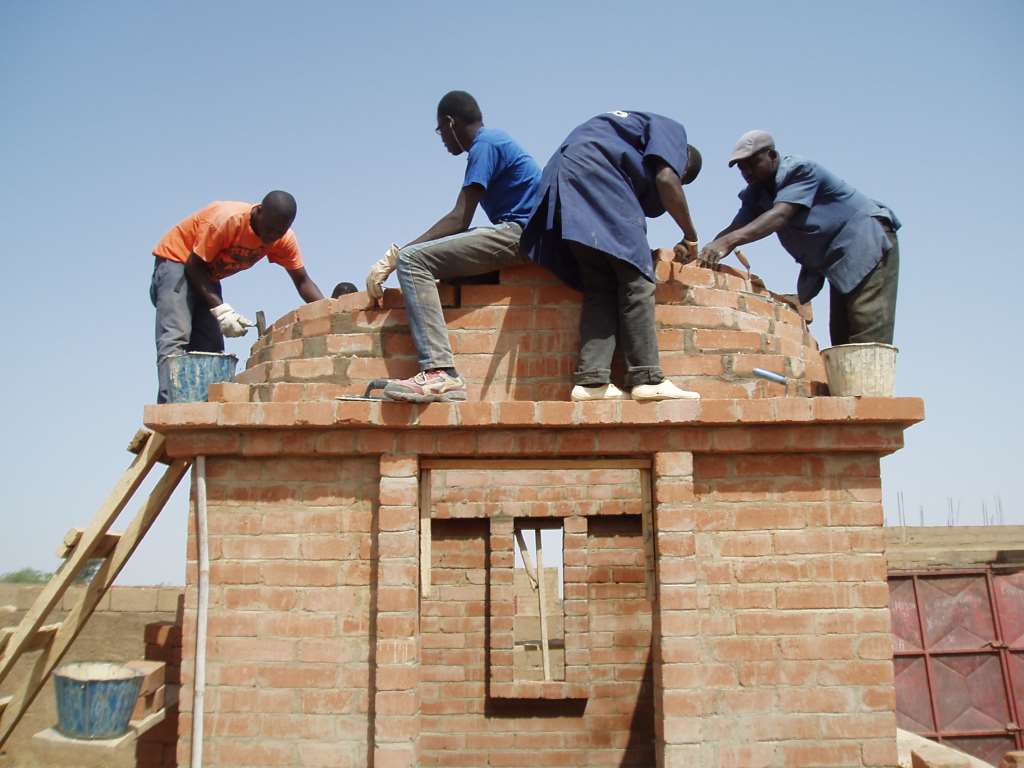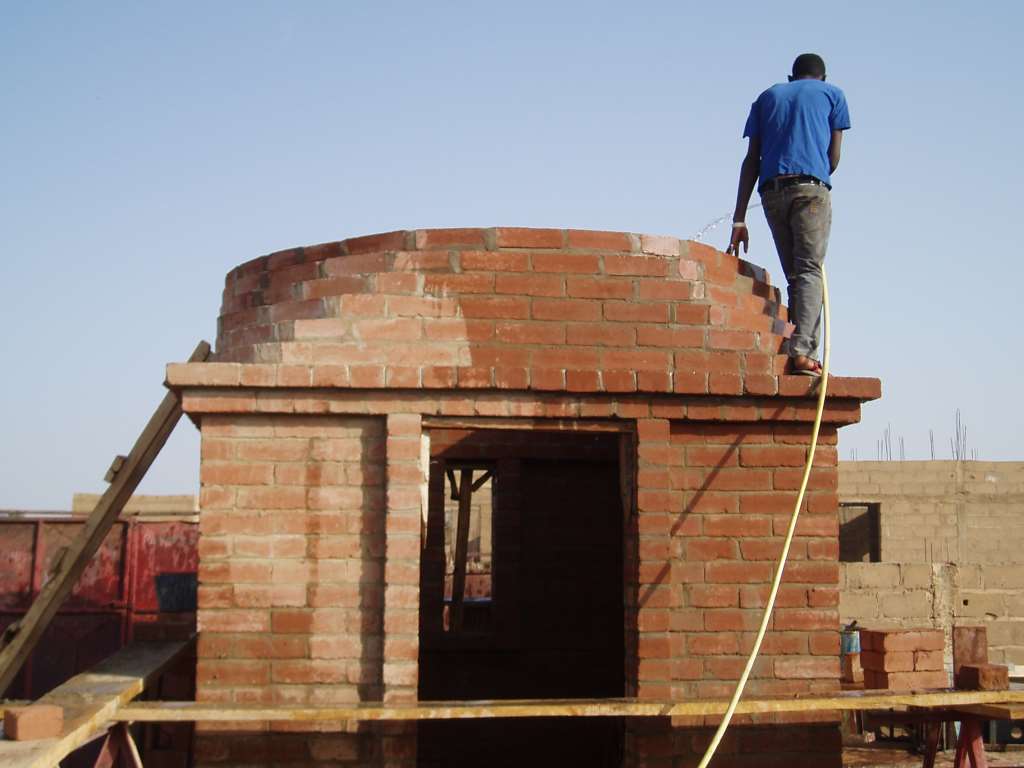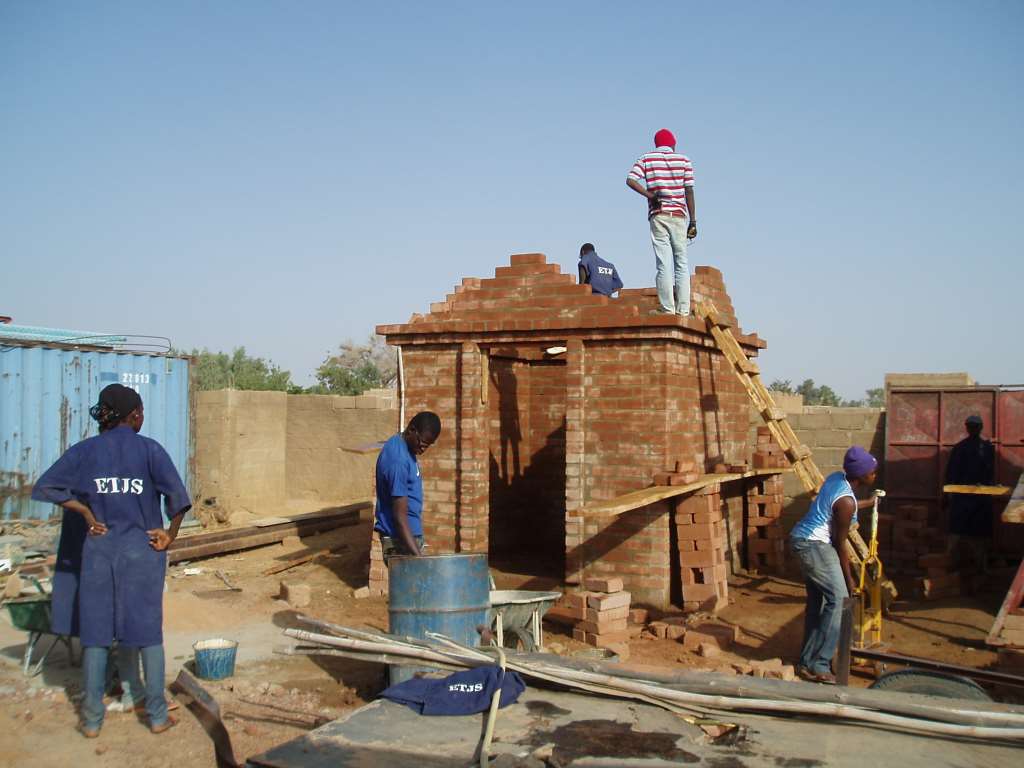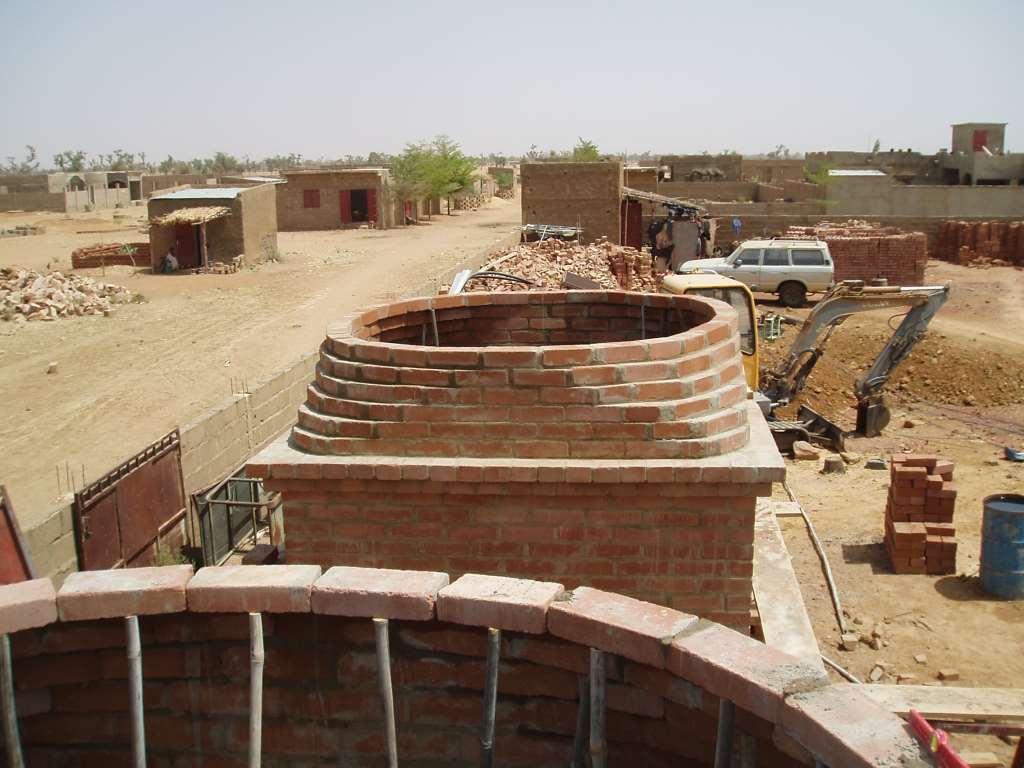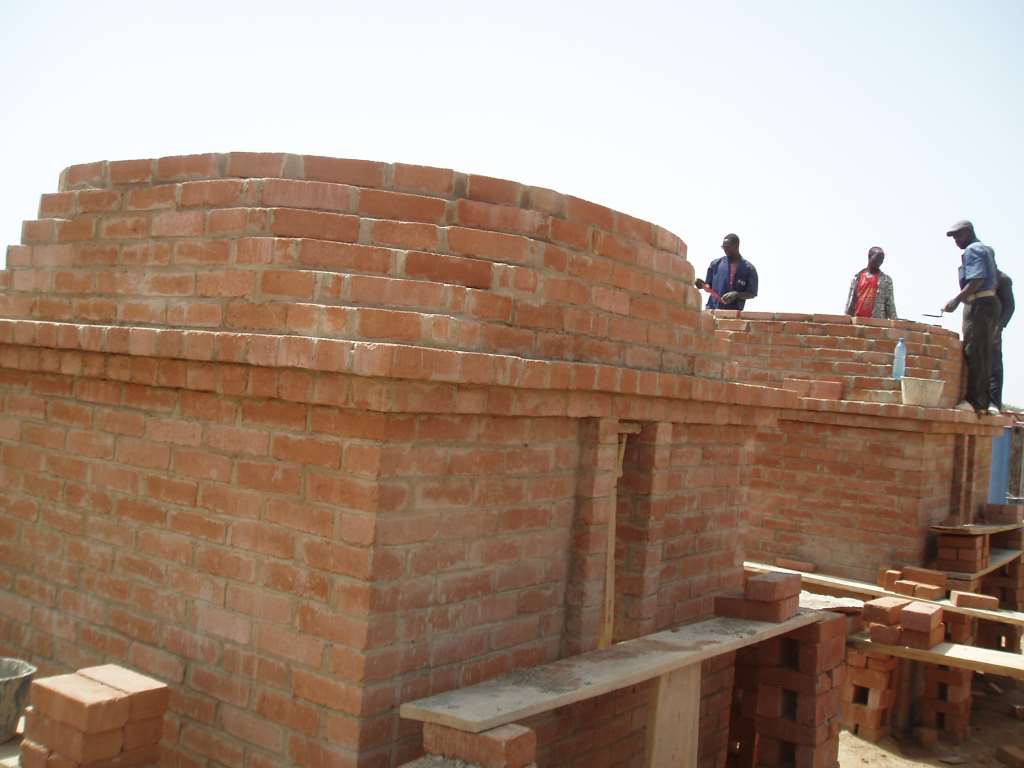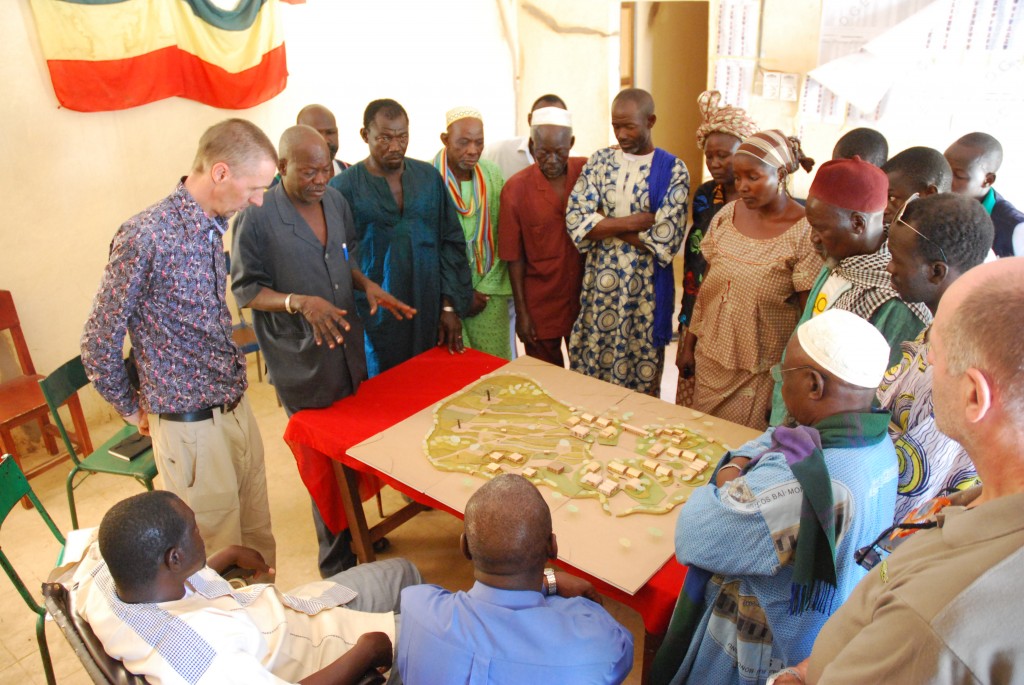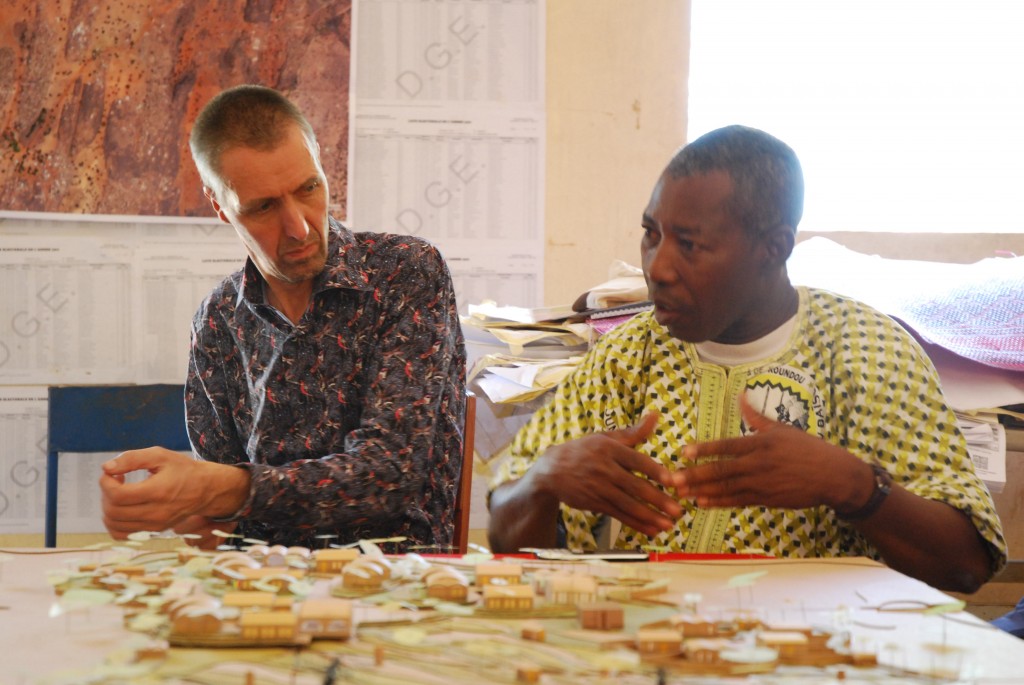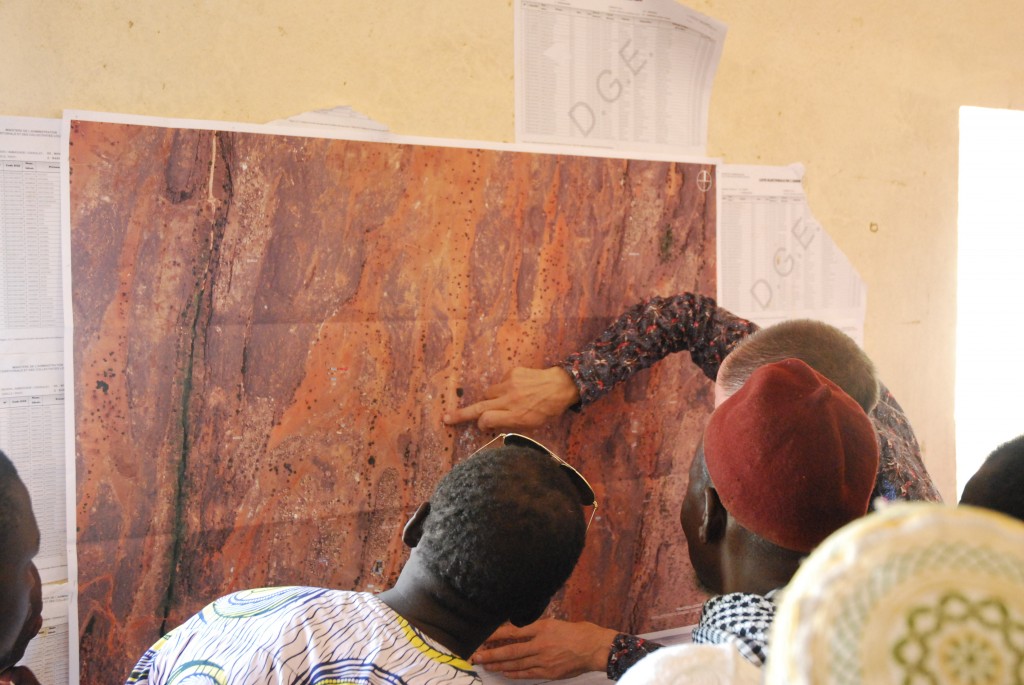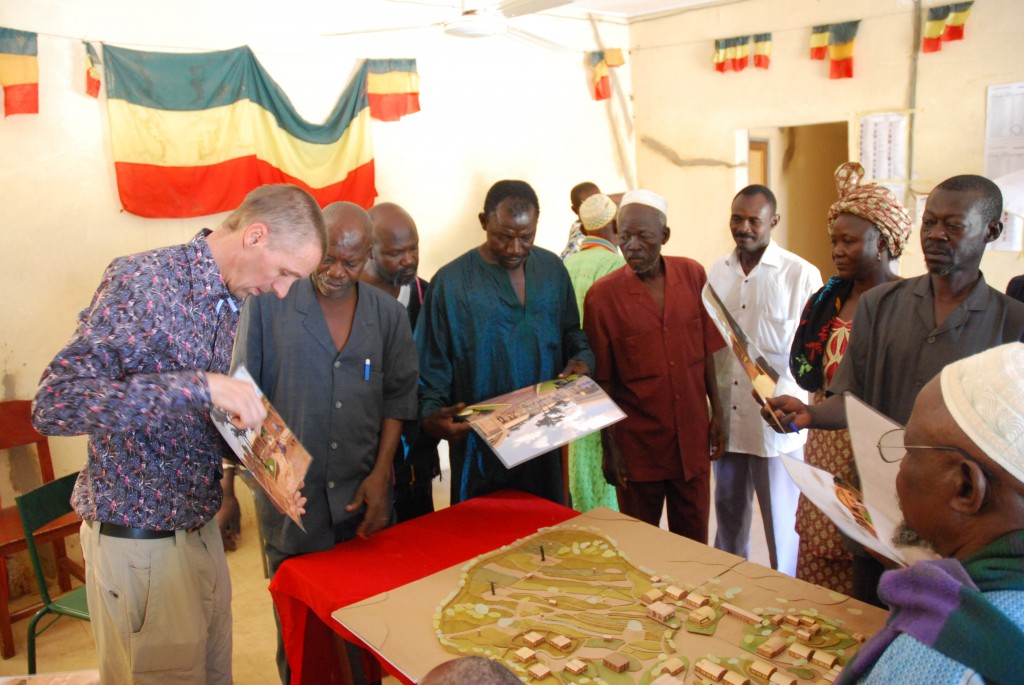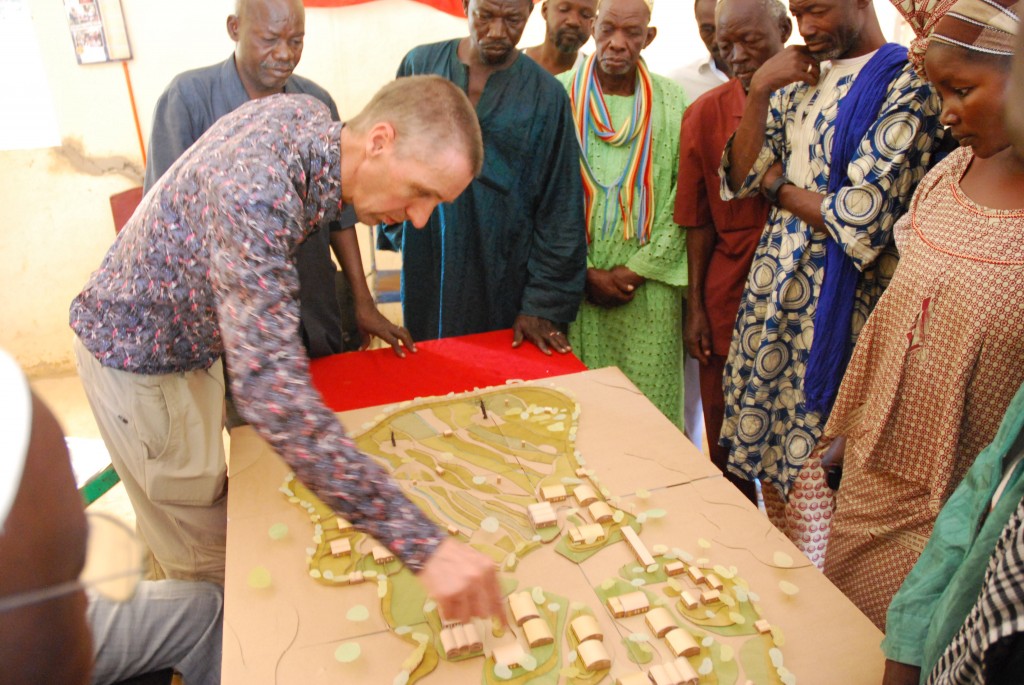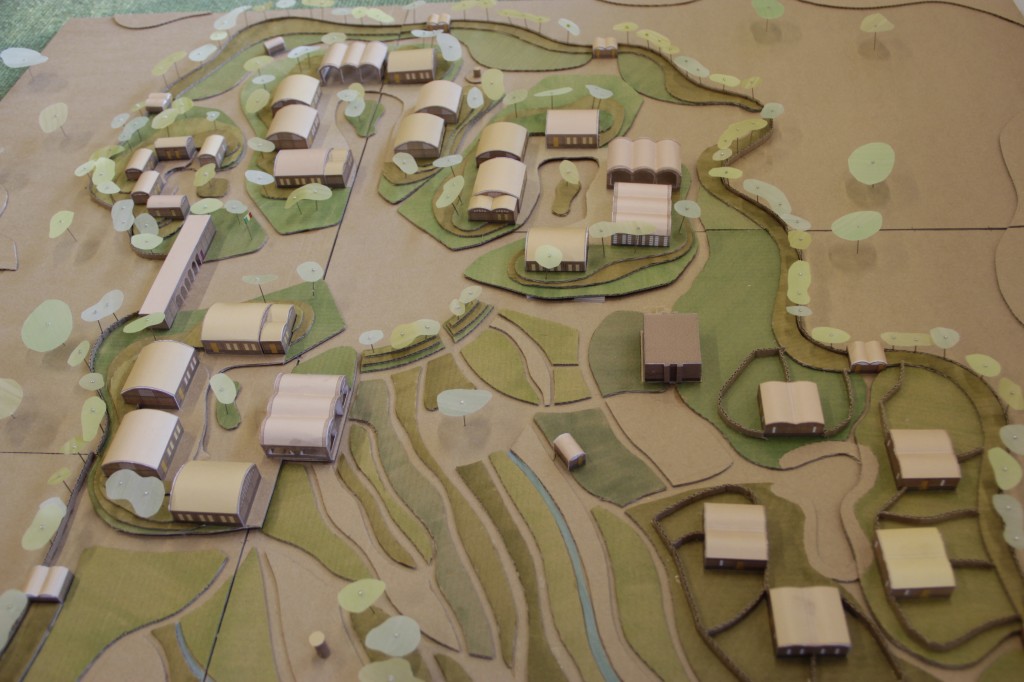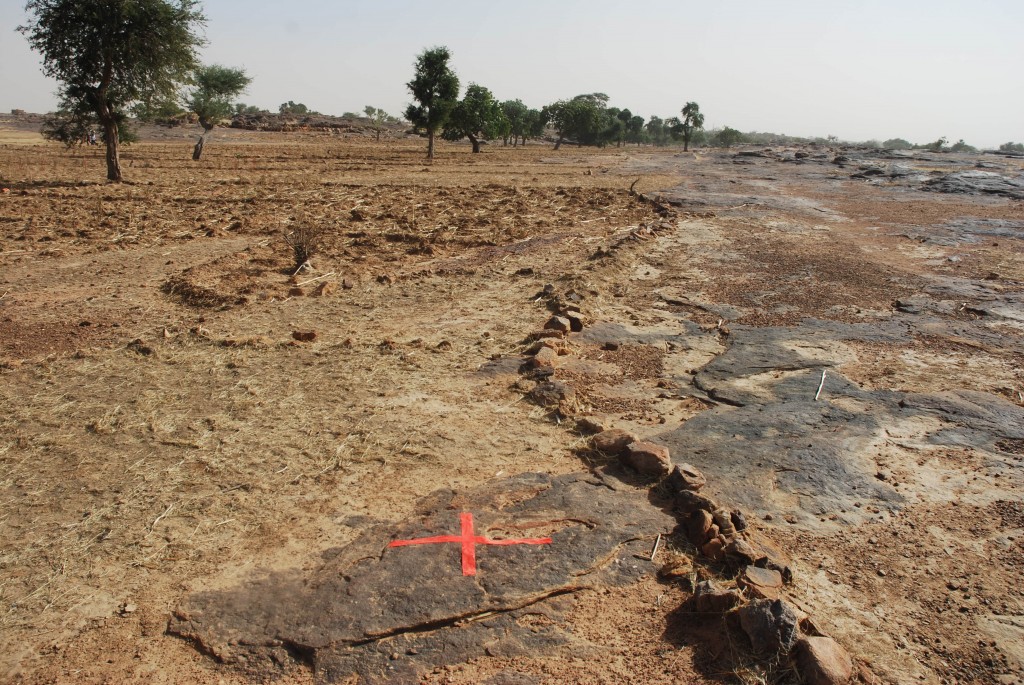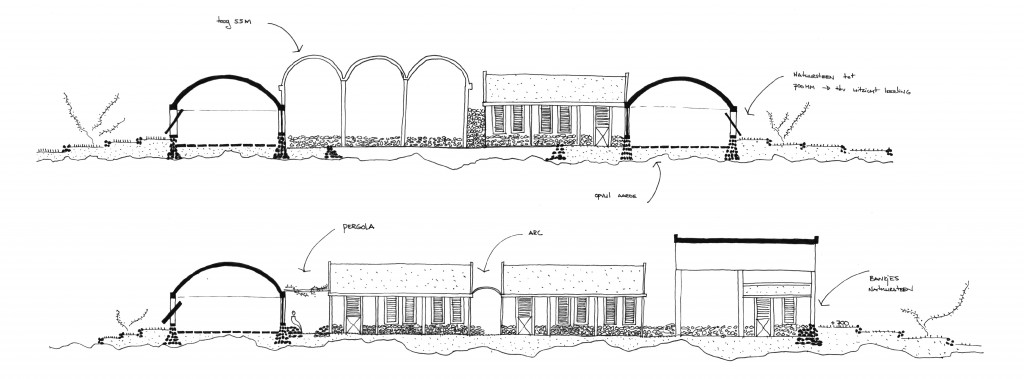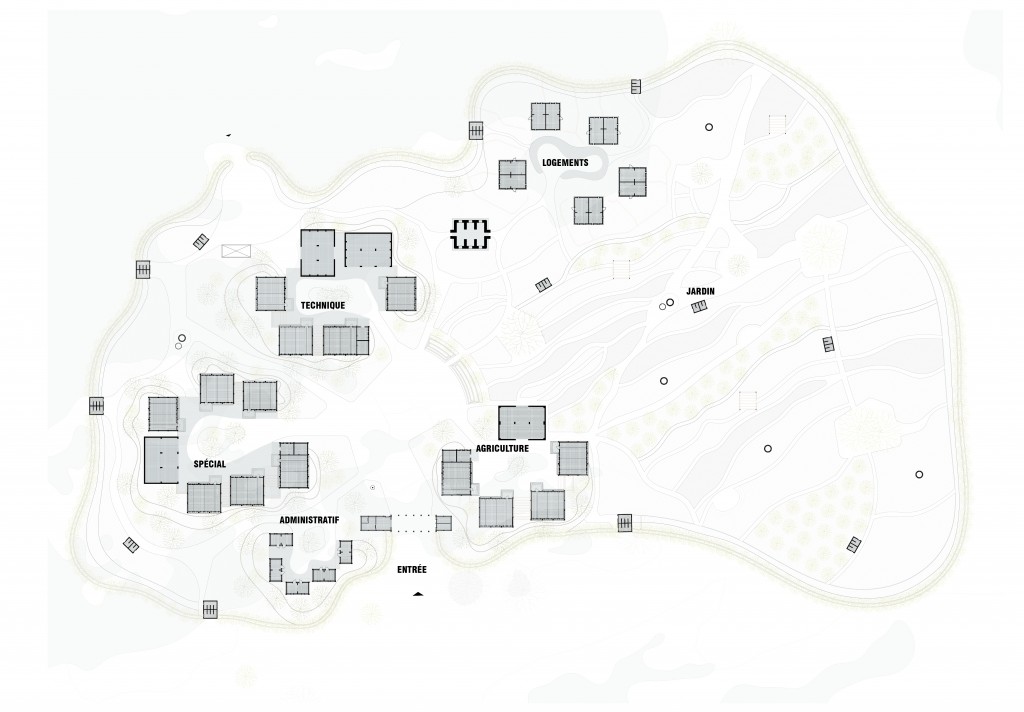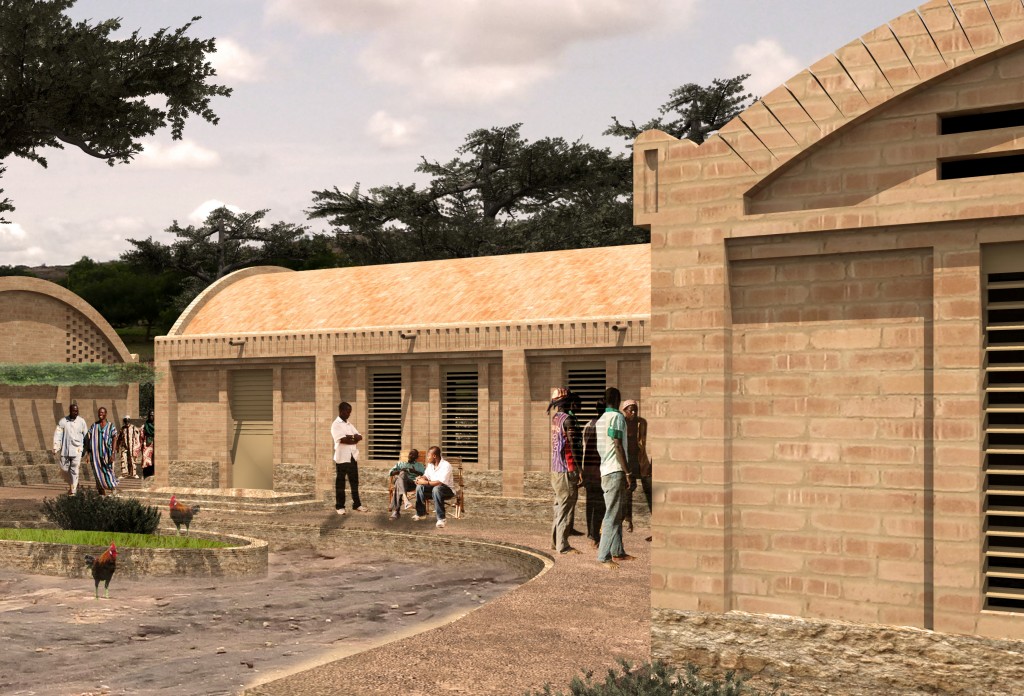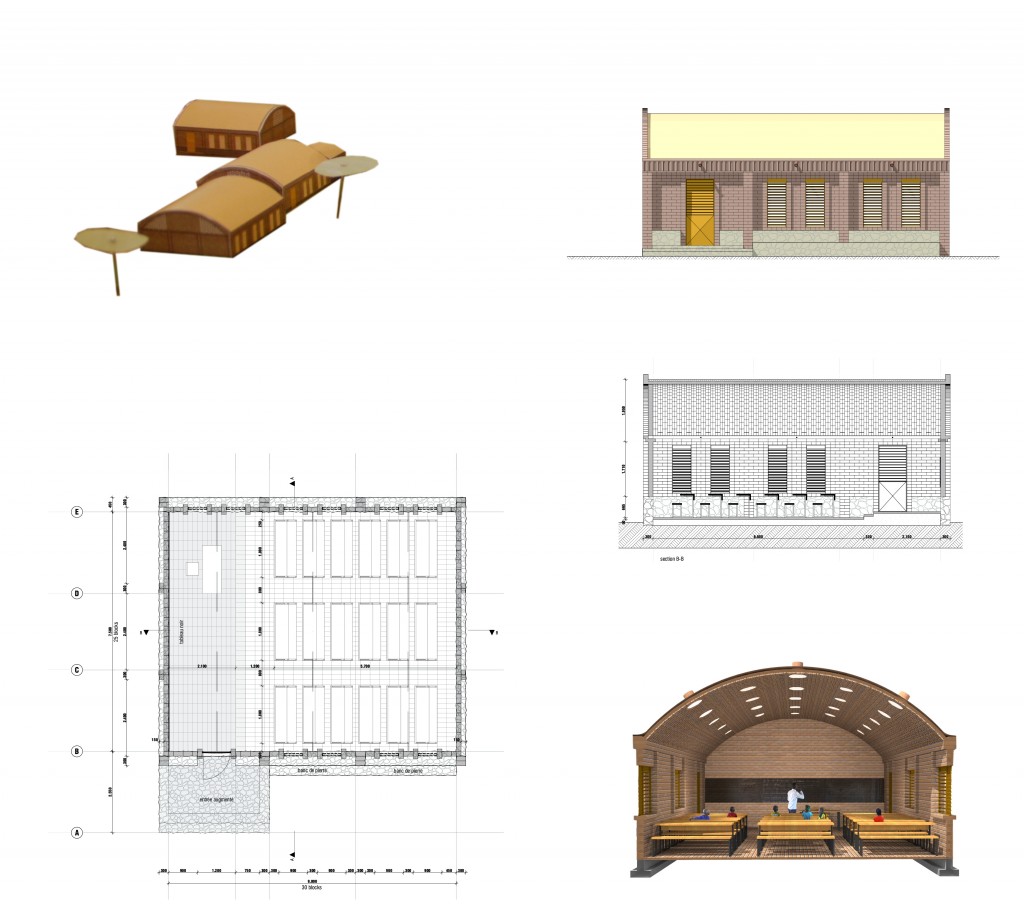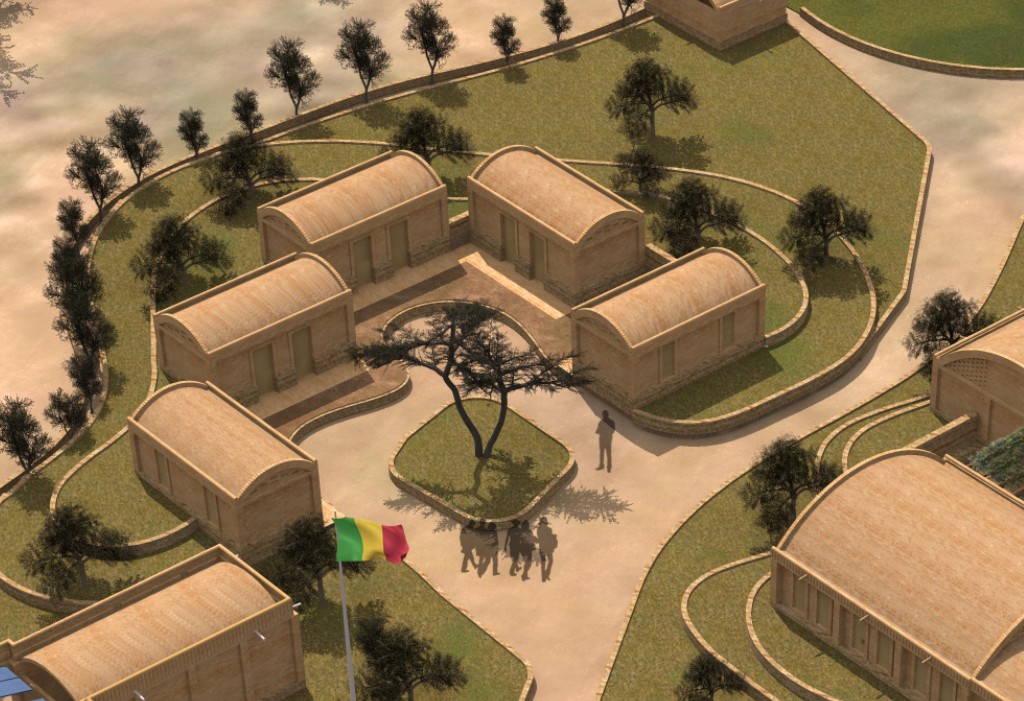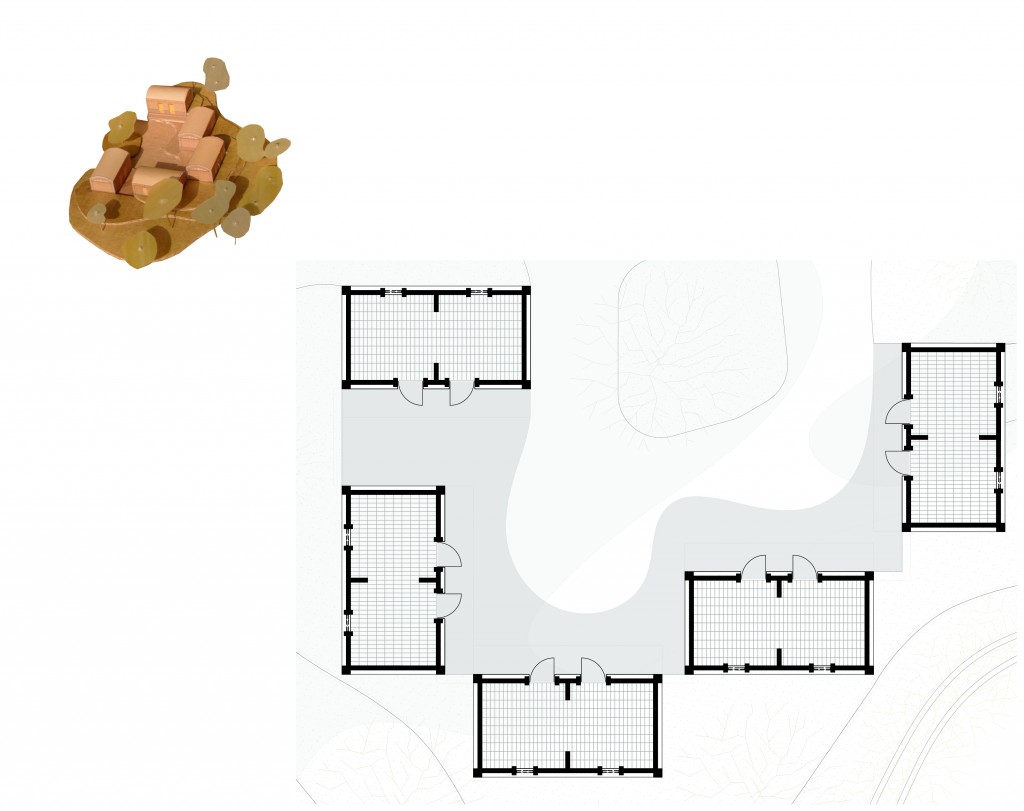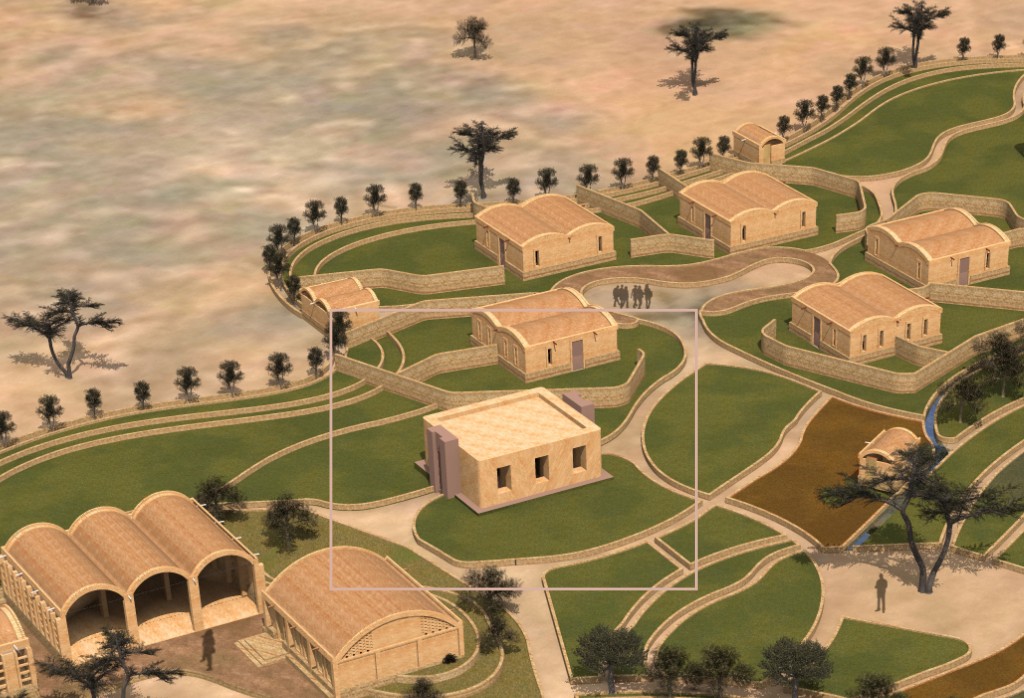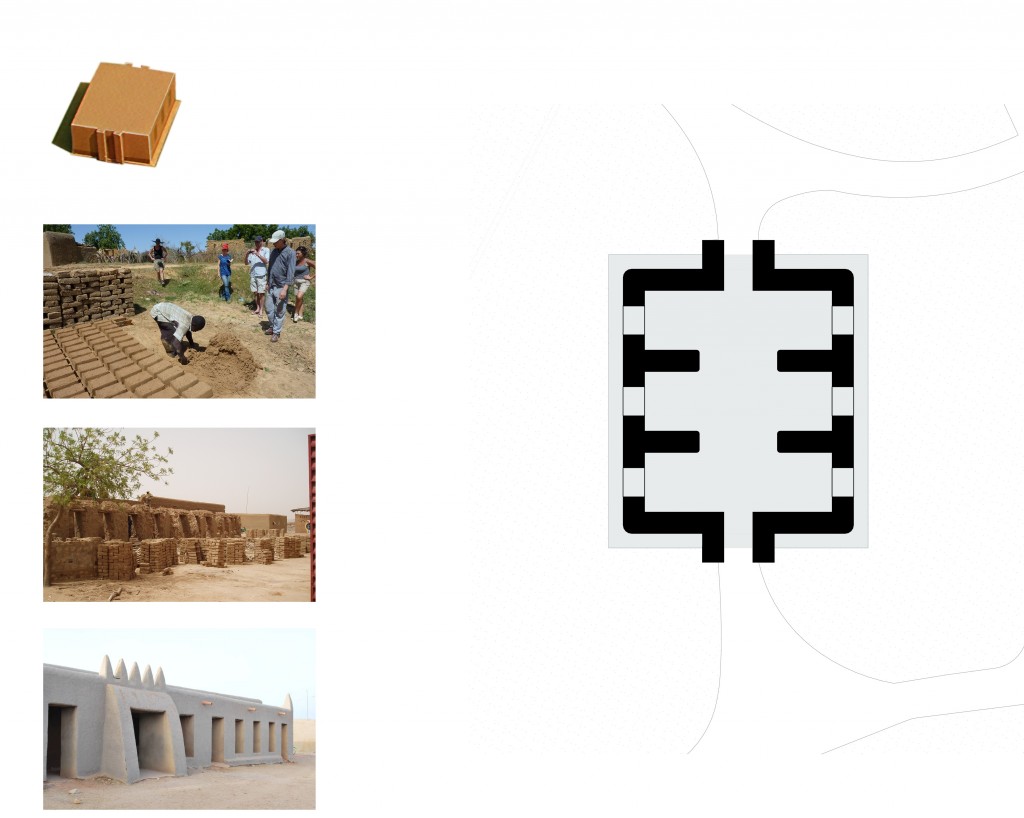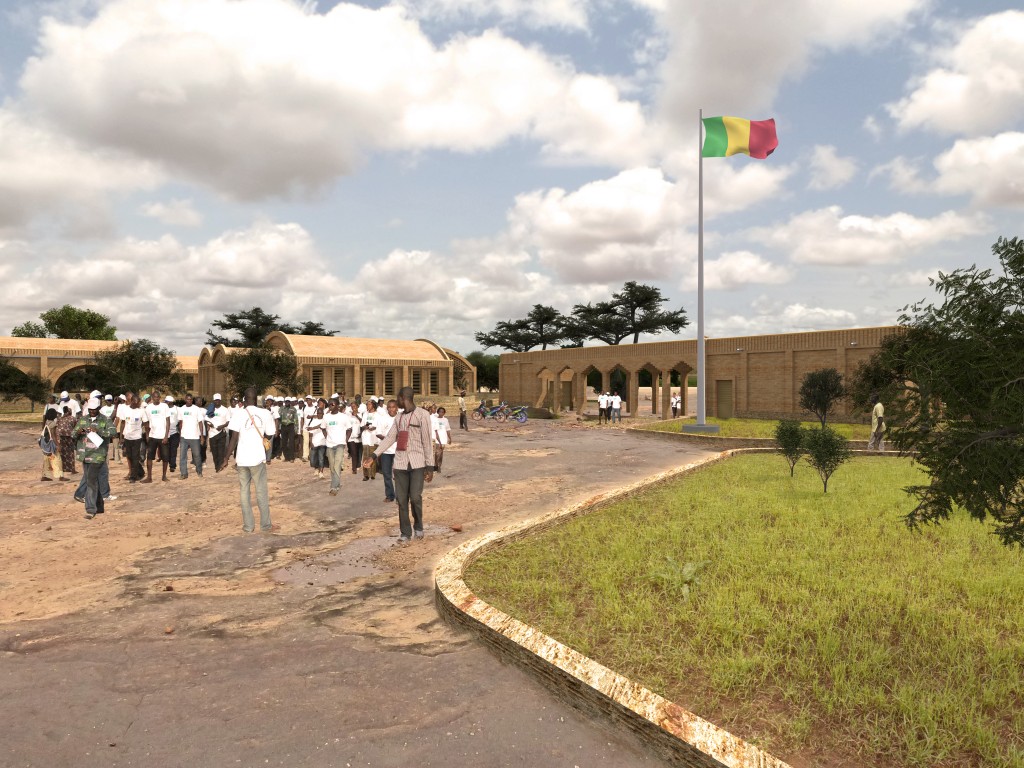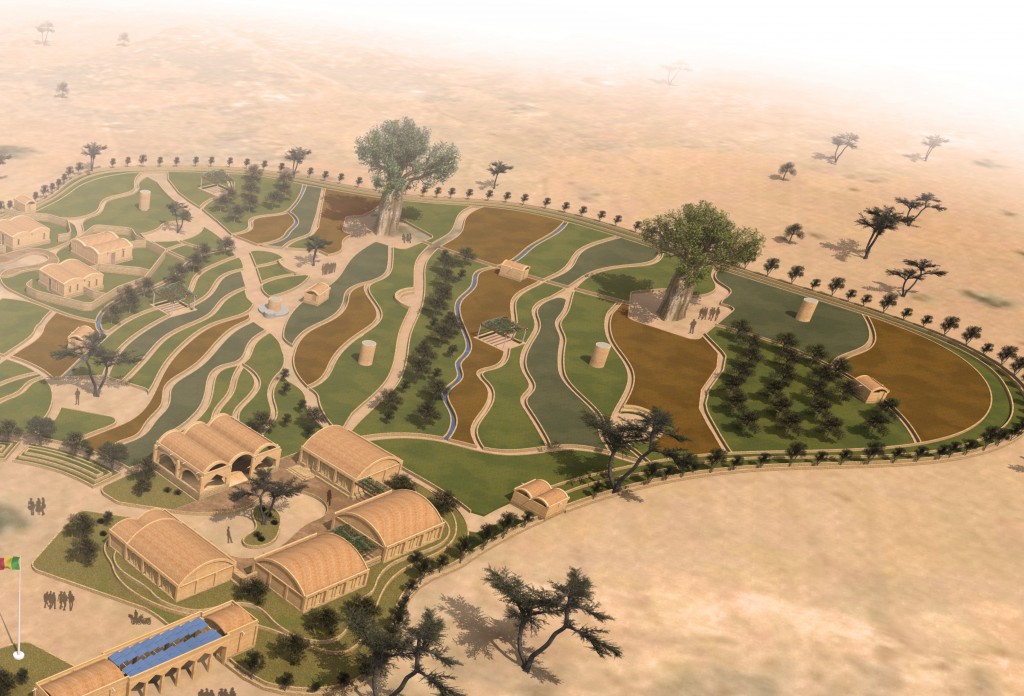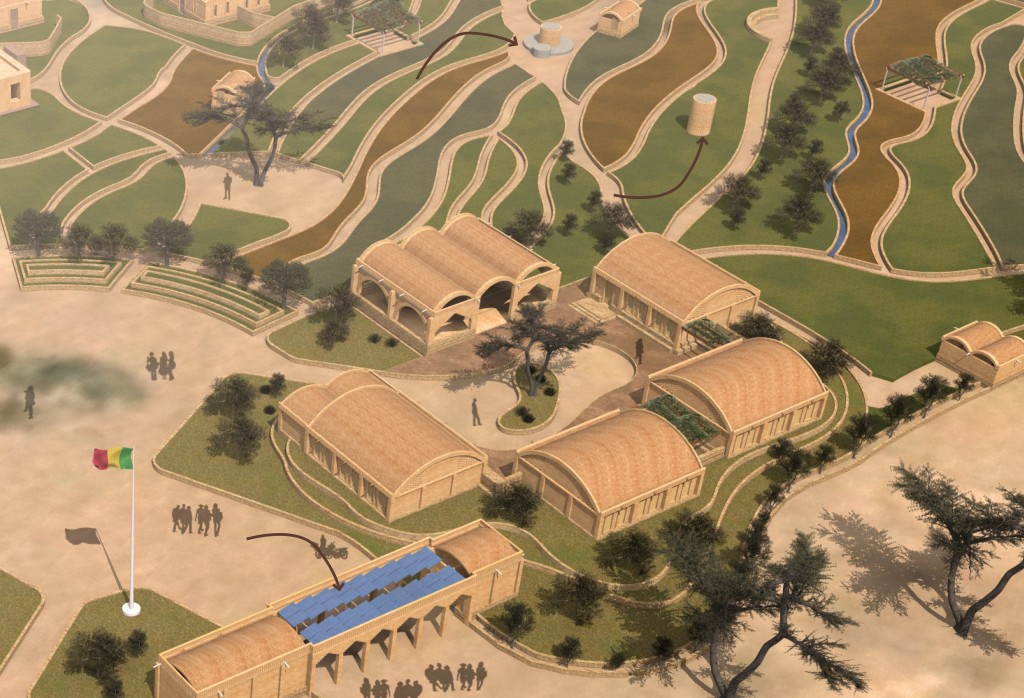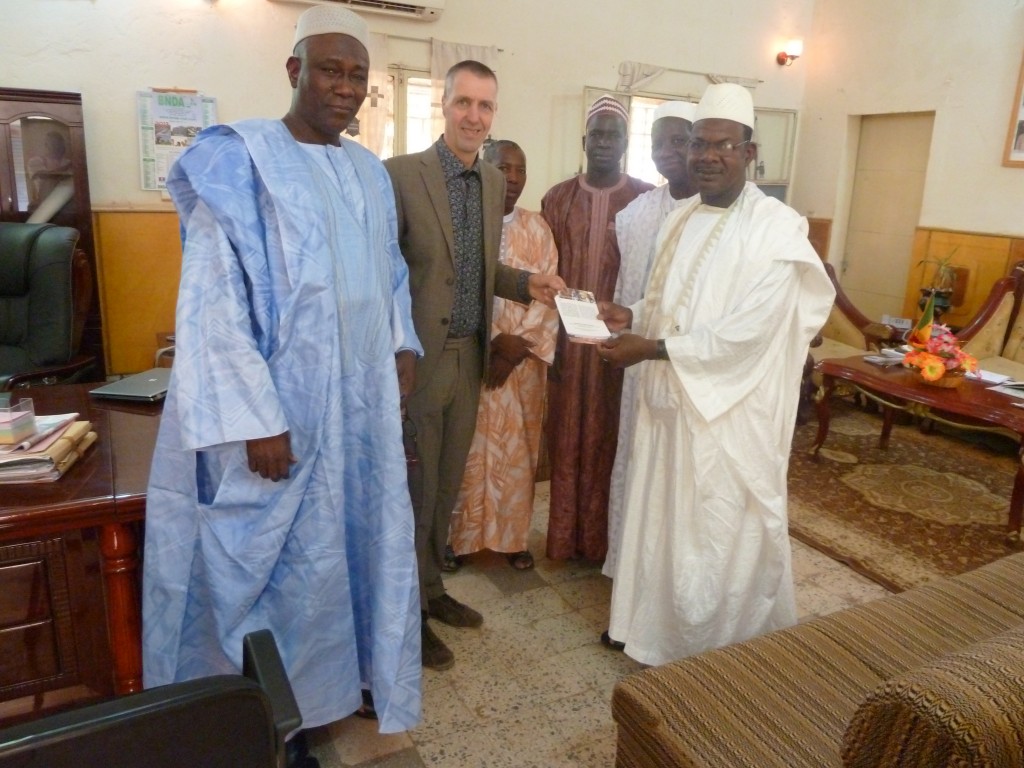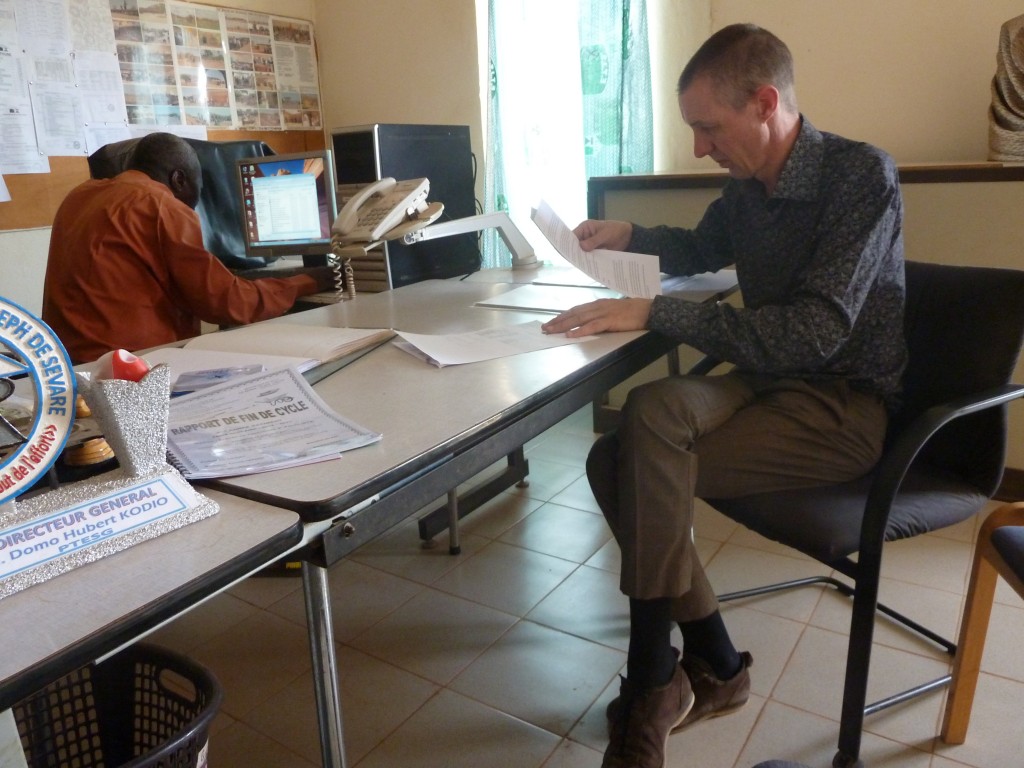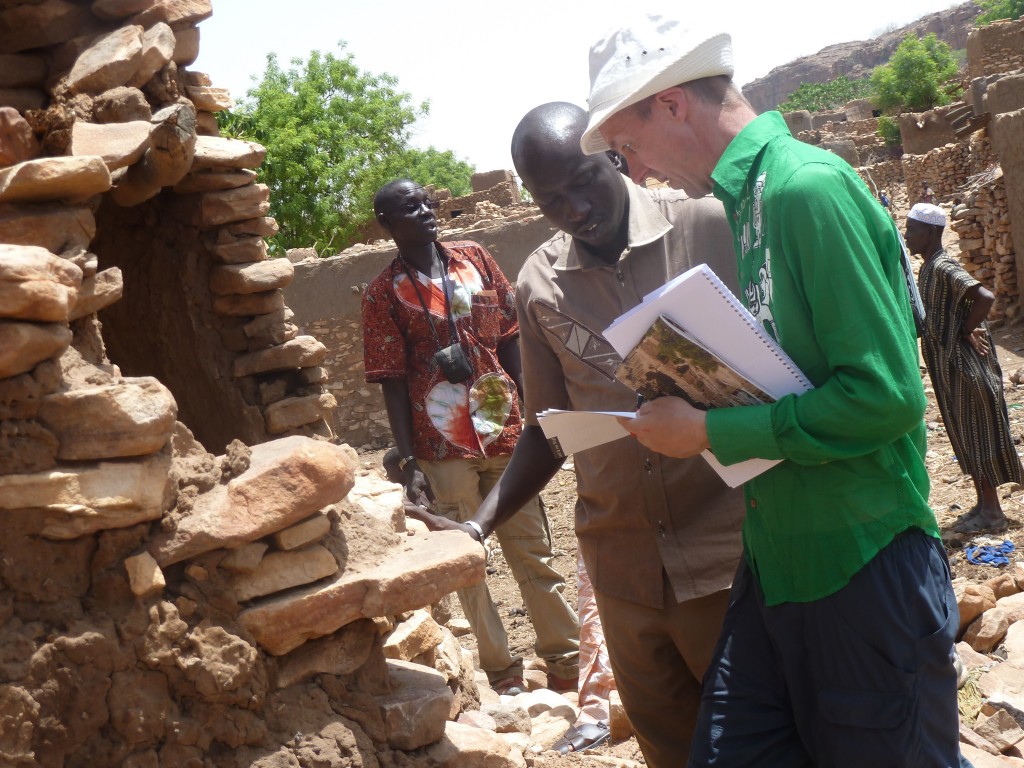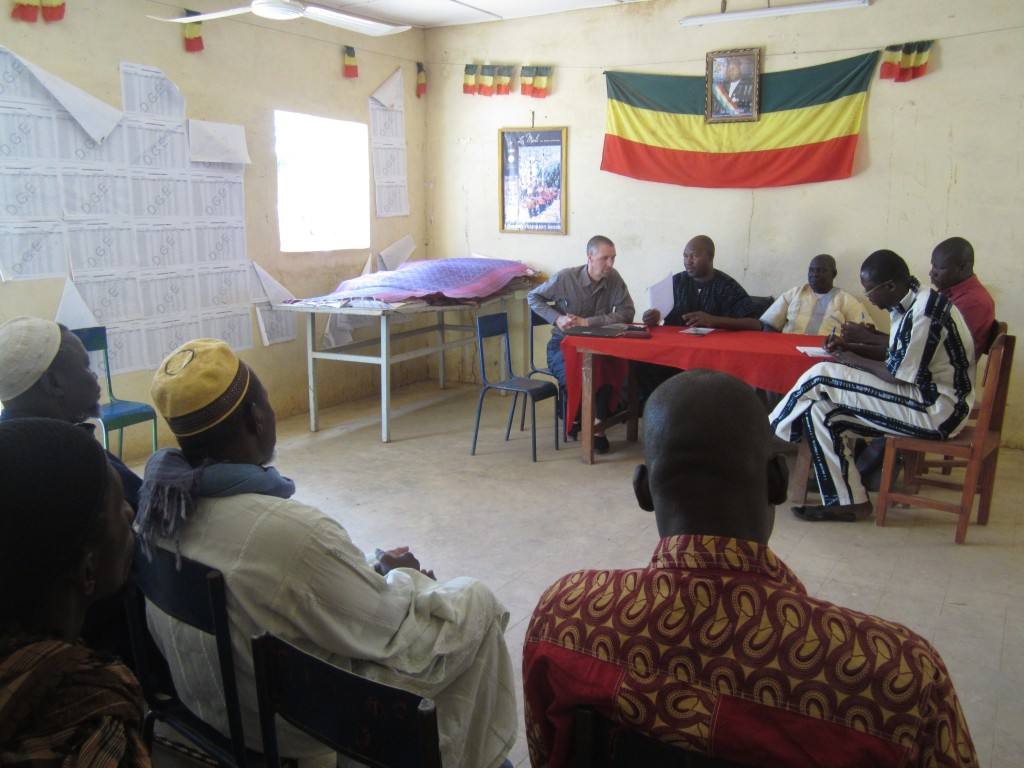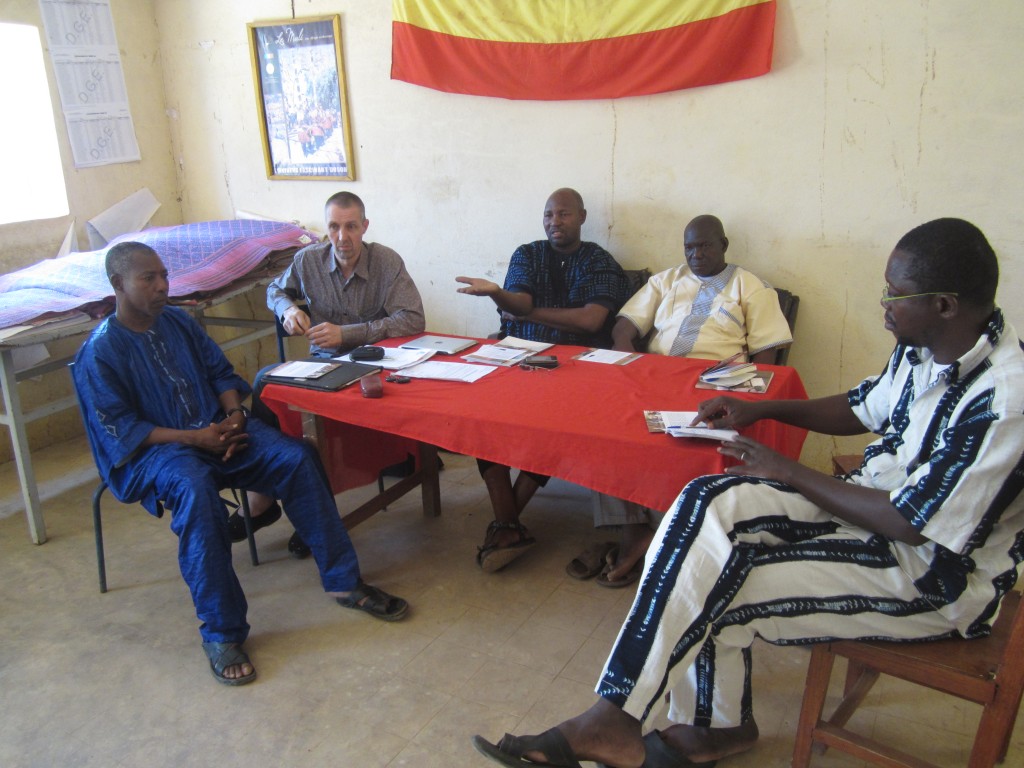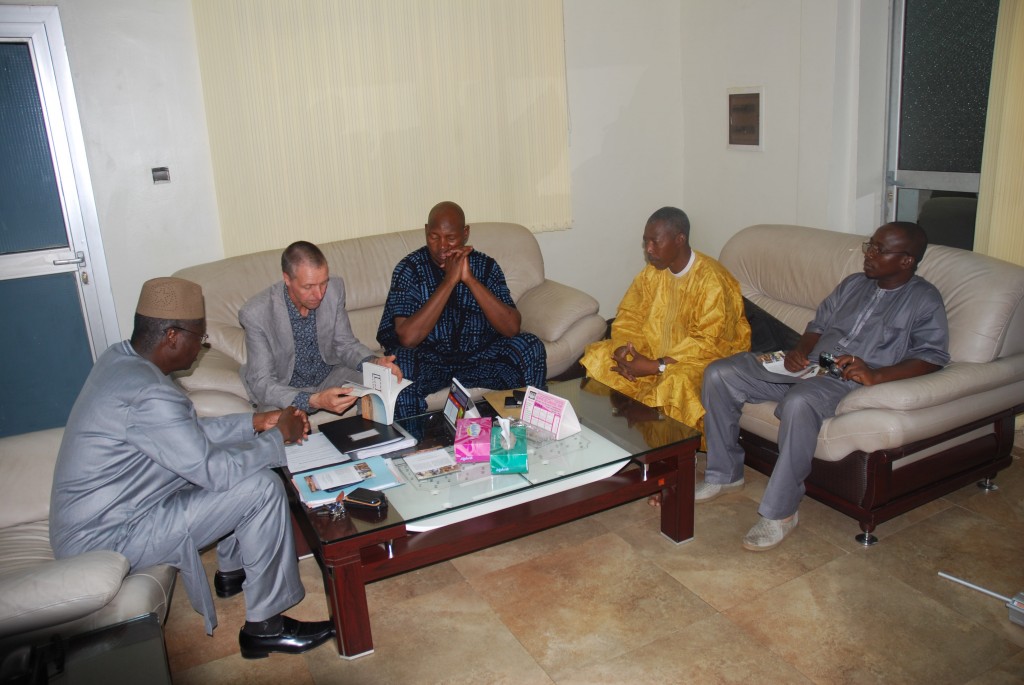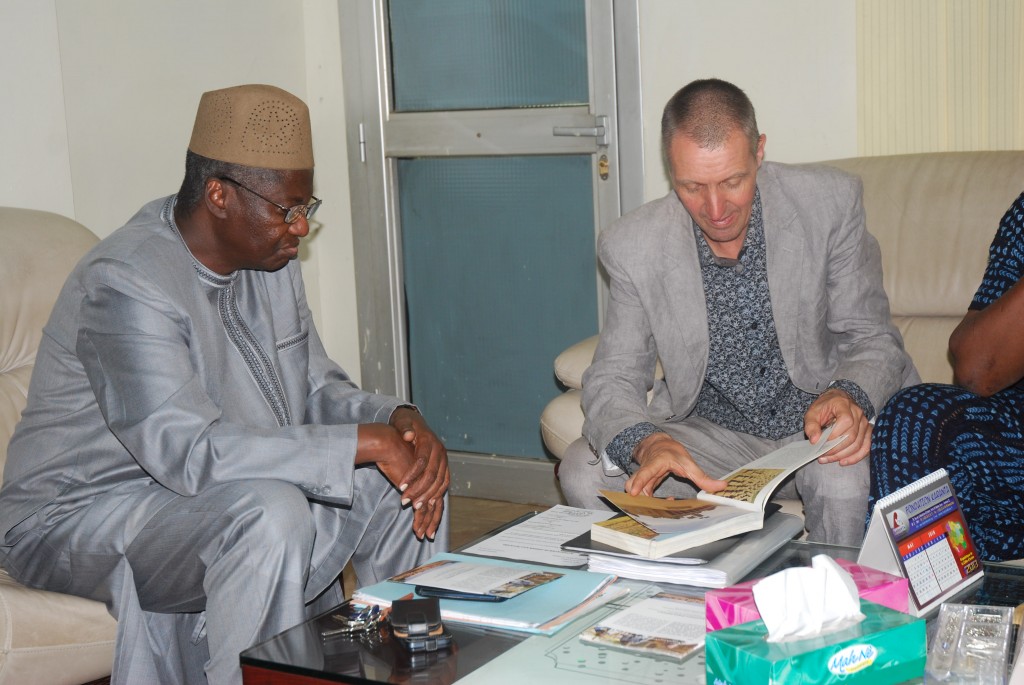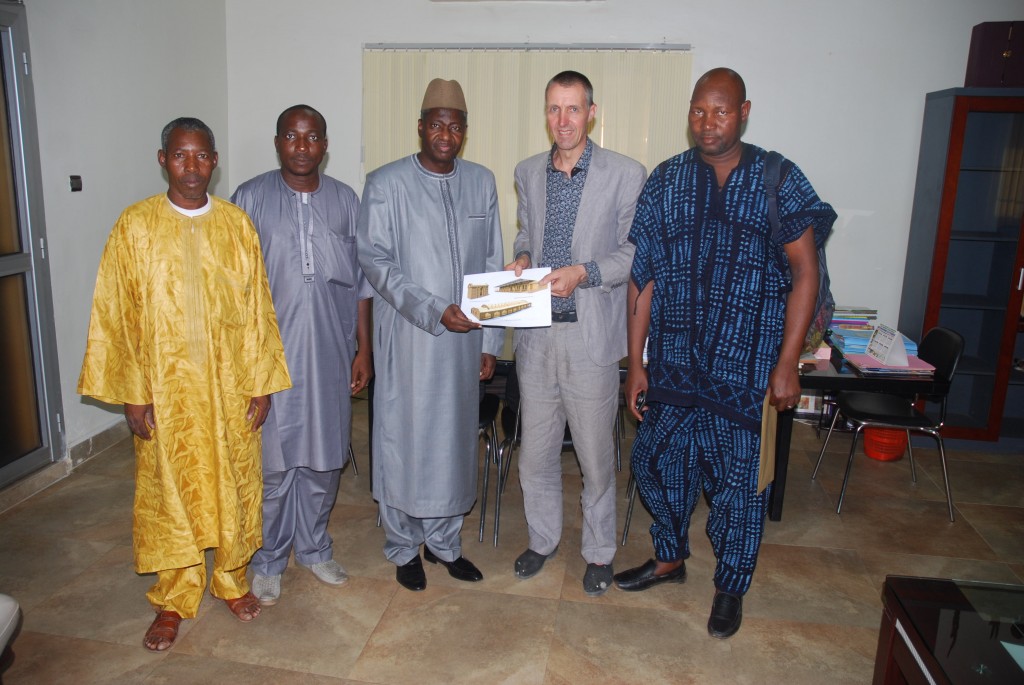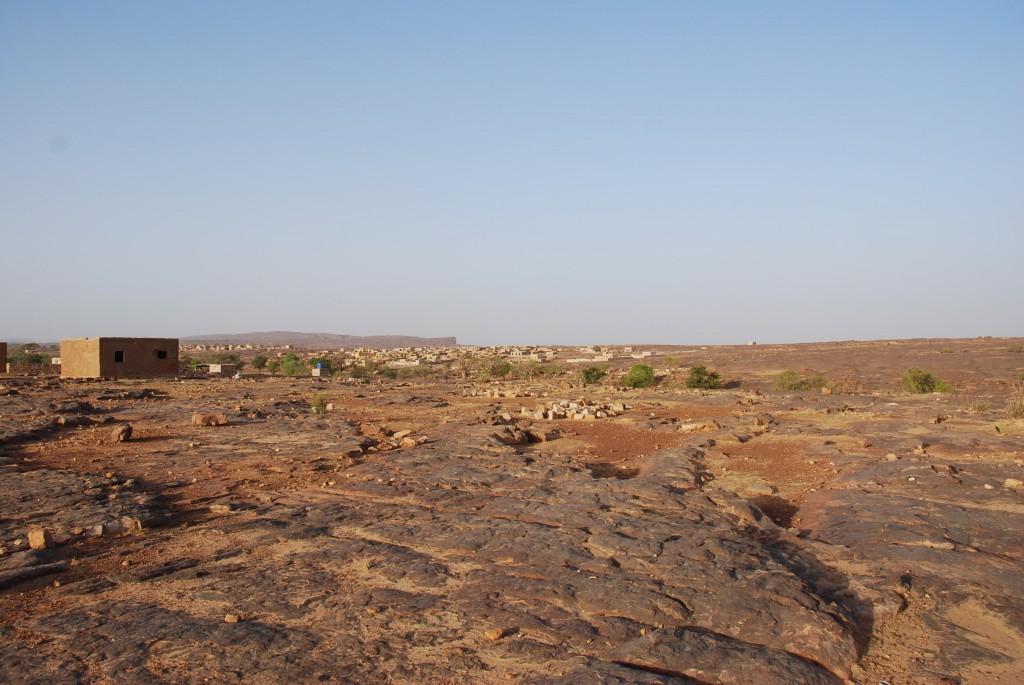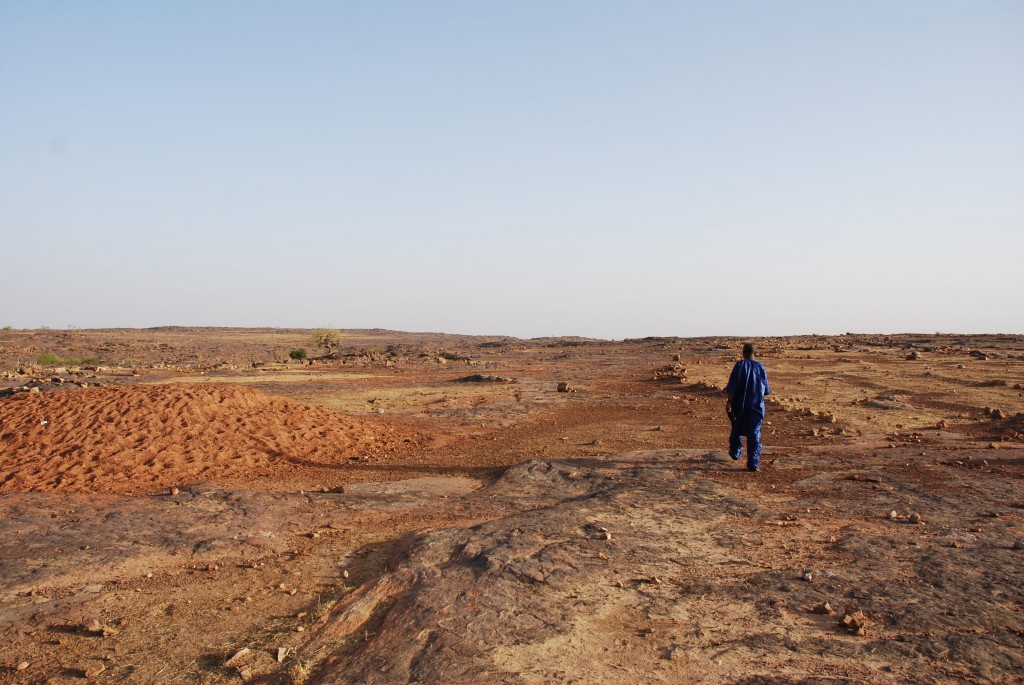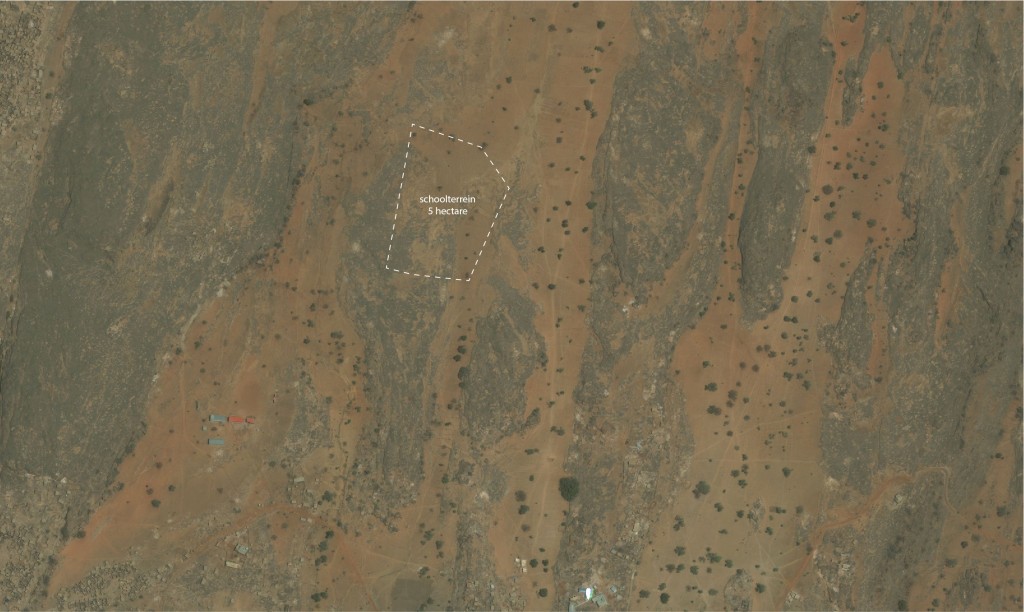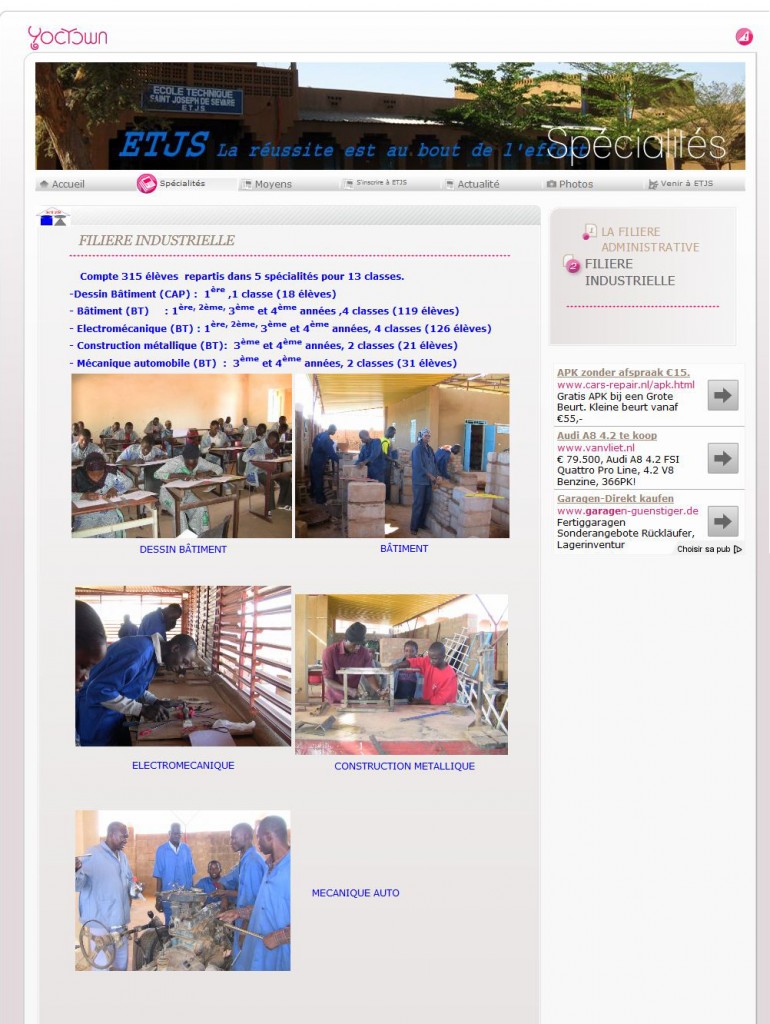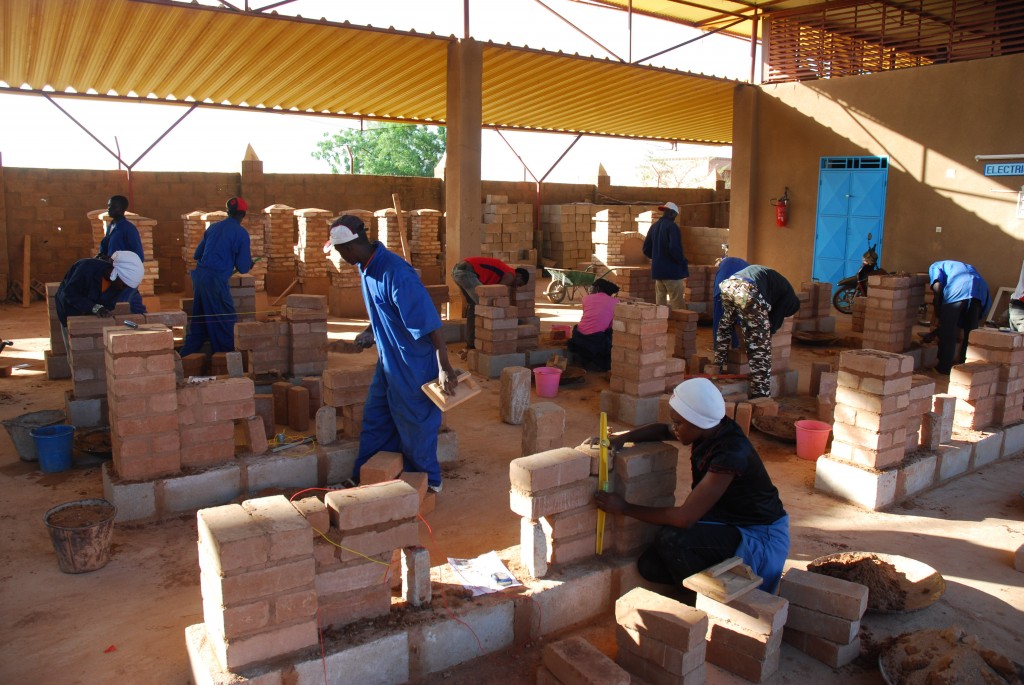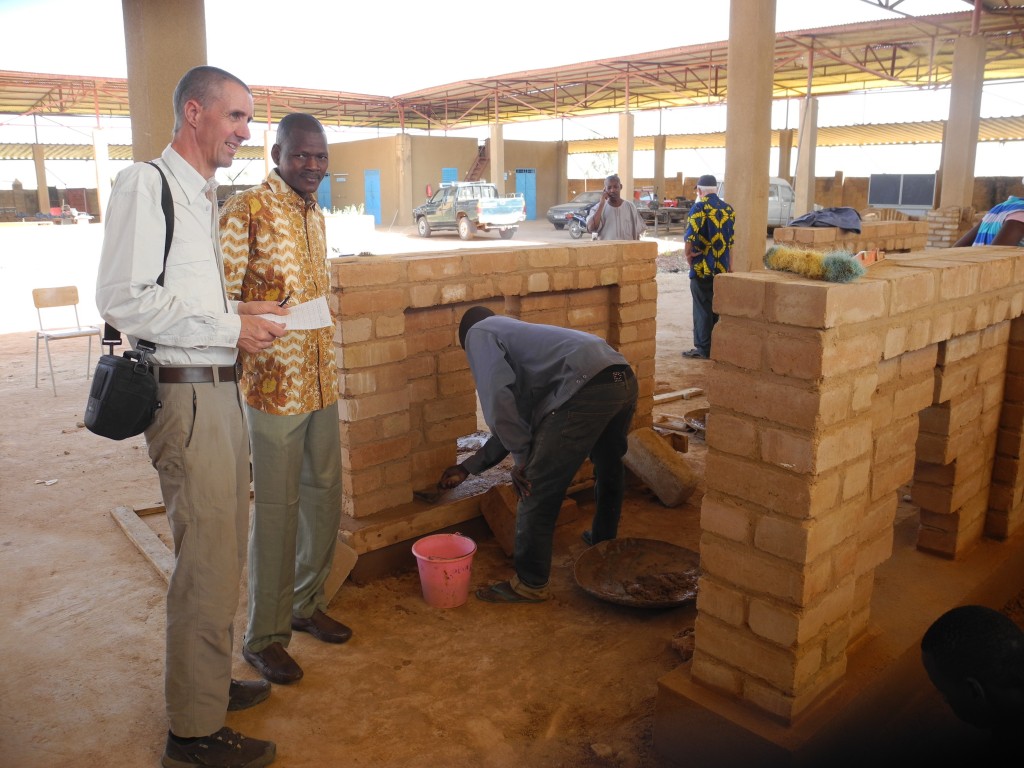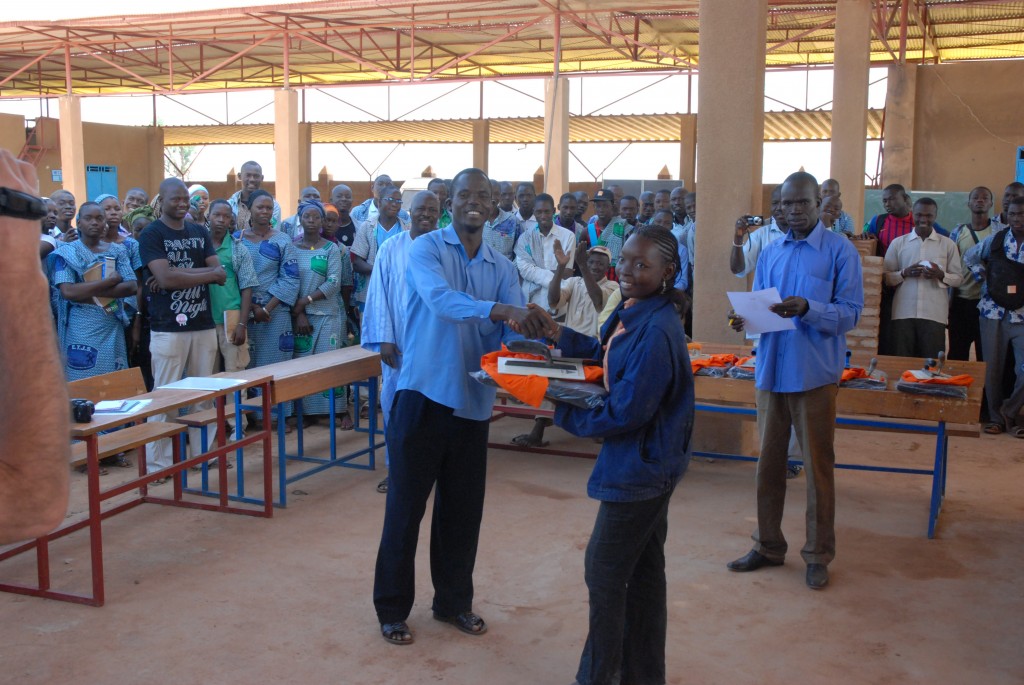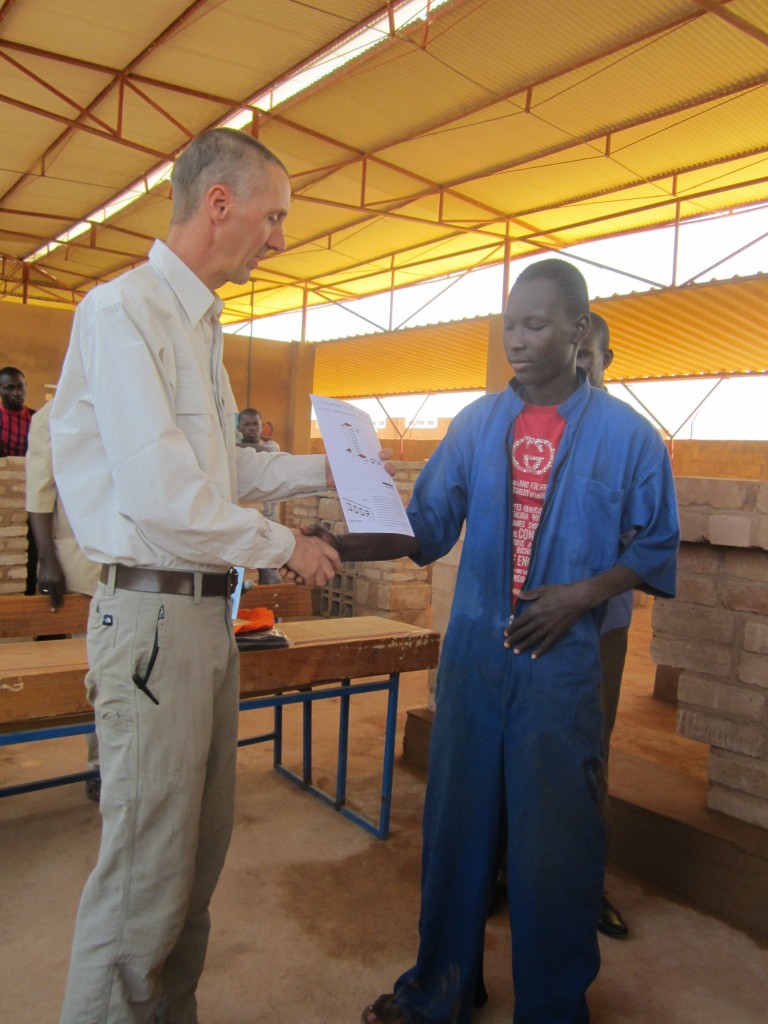Technische School
(Nederlands) Masterclass van Tea
(Nederlands) Nigeria – Sangha
Technische school
De technische school in Sevaré die door SDO is gerealiseerd en gefinancierd, is een logische stap in het onderwijzen en bouwen. Het praktische onderwijs was nauwelijks aanwezig in de regio die toch een stevige ontwikkeling doormaakt. door het opleiden van metselaar, timmermannen, schilders, elektriciens, staalbewerkers kunnen de vele nieuwe gebouwen met lokale mensen worden gerealiseerd met toepassing van nieuwe technieken. De school is ook een mooi proefveld gebleken voor het onderzoeken en realiseren van nieuwe technieken. De school telt inmiddels ruim 1300 leerlingen. Er werken ruim70 personeelsleden en er wonen bijna 300 leerlingen intern. De school draait volledig financieel zelfstandig met een goede schoolleiding en vele onderwijs programma’s. Wij betrekken de school bij onze projecten door het organiseren van praktijk stages. Ook het opzetten van eigen bedrijven, het inzetten van jonge afgestudeerde bij onze projecten behoort tot de mogelijkheden.
Opening celebration first technical lycée in Mali
In Sangha the first technical licée of Mali is being built following an initiative of the local population of the Dogon and the foundation SDO.
A part of the housing and education clusters for construction, engineering and agriculture has been completed and was opened on the 23th September with a big celebration.
In the presence of the national Minister of Education, the Mayor of Sangha and Jurriaan van Stigt the school was officially opened. This month the lessons have started.
Watch the news on national television!
The Practical Lyceum starts in October
The Professional Lyceum in Sangha is on the way to be completed. The six classrooms equipped with furniture, the administration buildings, the first hangar, six housings for teachers and two sanitary blocks are ready.
The garden with some trees and plants is taking shape thanks to the supply of fertile soil from the Toguna Agro Industries, our local sponsor of the project.
In Bamako during the meeting with Seydou Nantoume, the owner of the Toguna Agro Industries, we discussed the necessity of a new donation. Toguna Agro Industries will take care of the transport of more fertile soil for planting in total 5.000 trees and 5.000 branches around the 4 hectare terrain, which later will be used by the agricultural department of the Lyceum.
In October 200 students will start with the four practice teaching curriculum: building, water, electricity and agriculture. The students will be trained in practical techniques and gain work experience to be able to start their own enterprise.
During the visit of the Lyceum, also the director of the Lyceum Ladaogo Kinda and the Mayor of Sangha Ali Dolo were present. The director has been appointed by the National Direction of Technical and Vocational Education in Mali. He is now preparing, with a team of five teachers, the program for the fourth practice teaching subjects and they are engaged in organizing a new type of curriculum for the first “Lycee Professionel” in Mali. Ali Dolo, the mayor of Sangha, is being also playing an important role in the relation between the Malian Ministry of Education and the local organization. In fact, the school is public, financed by the government who also takes care of part of the overall school plans. All teachers are contractually going to be paid by the government, which helps to assure the long-term sustainability of the project. In Bamako we also met the national director of Technical and Vocational Education in Mali Oumar Jacouba Maiga, who assured us that the curriculum of the Lyceé Professionnel will be integrated in the Malian educational system. We had also a confirmation for the financial availability for the teaching program from the government.
Now in the terrain all the infrastructure are operational, including a water-well, water points connected to the local water system, electrical supply, batteries and solar panels. What needs to be completed is the perimeter wall and two of the eight teacher housings.
There was a team of five new stagier from the École Technique S. José (ETSJ) of Sevaré working on the completion of the teachers housings, under the supervision of Essay Dara, the head of HCEB masonry team. By the time the school will open, two more hangars, the water tower and a deposit will be completed. The remaining buildings will be constructed by the students, as a real and practical task in the coming years.
On the way to complete the classrooms in Sangha
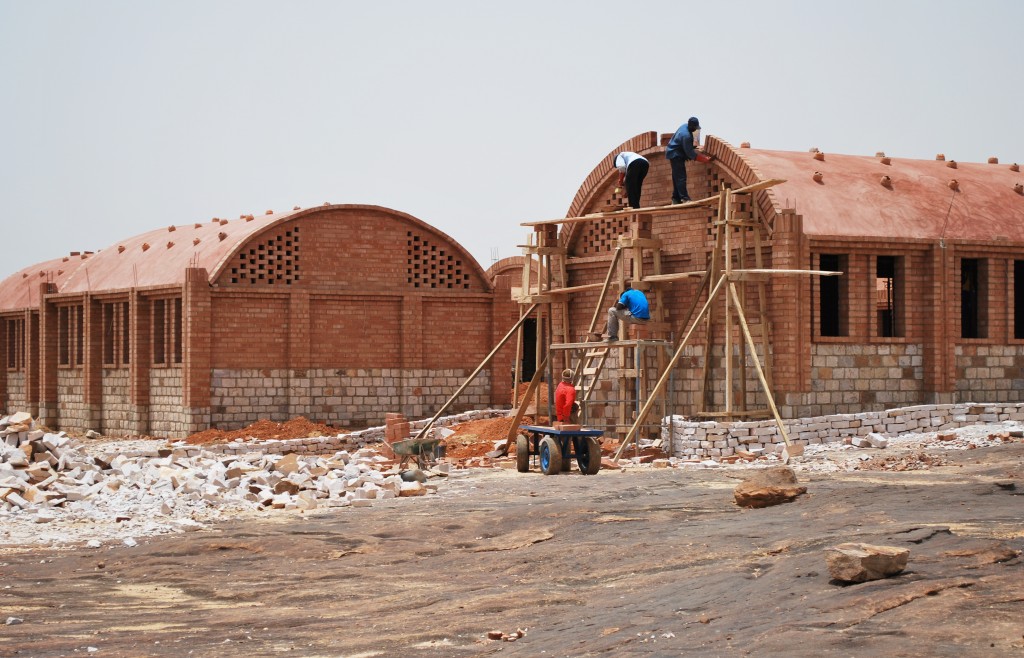
The Professional Lyceum in Sangha goes on, but a lot has to be done for October. The plan is very meticulously reviewed and there will be three additional teams to be able to finalize all the necessary for the start on 1 October.

At the moment the six classrooms are almost ready, the garden will be landscaped and many cultured trees and plants will be planted.
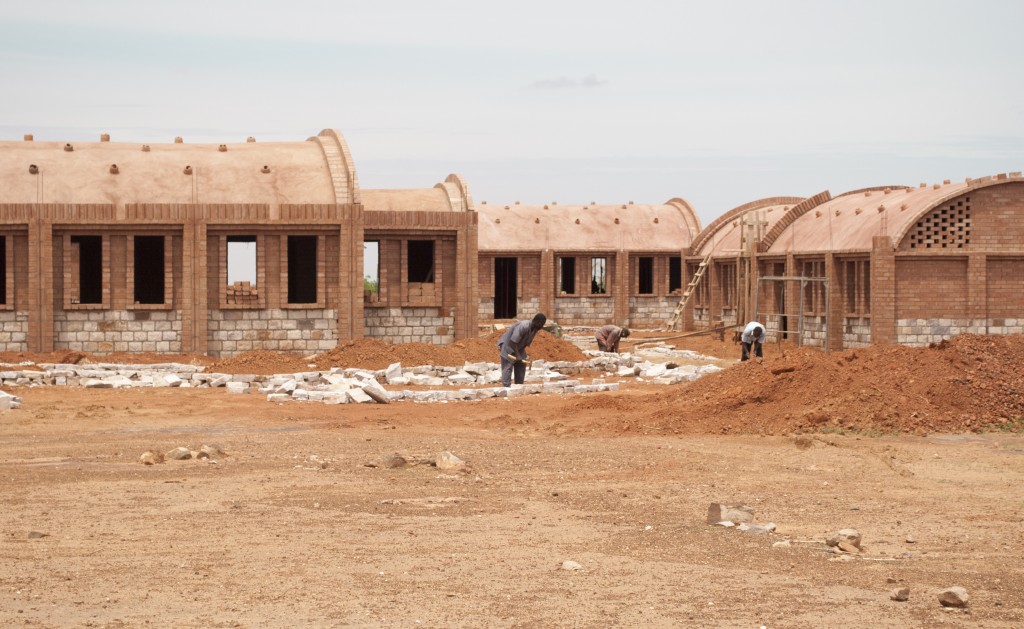
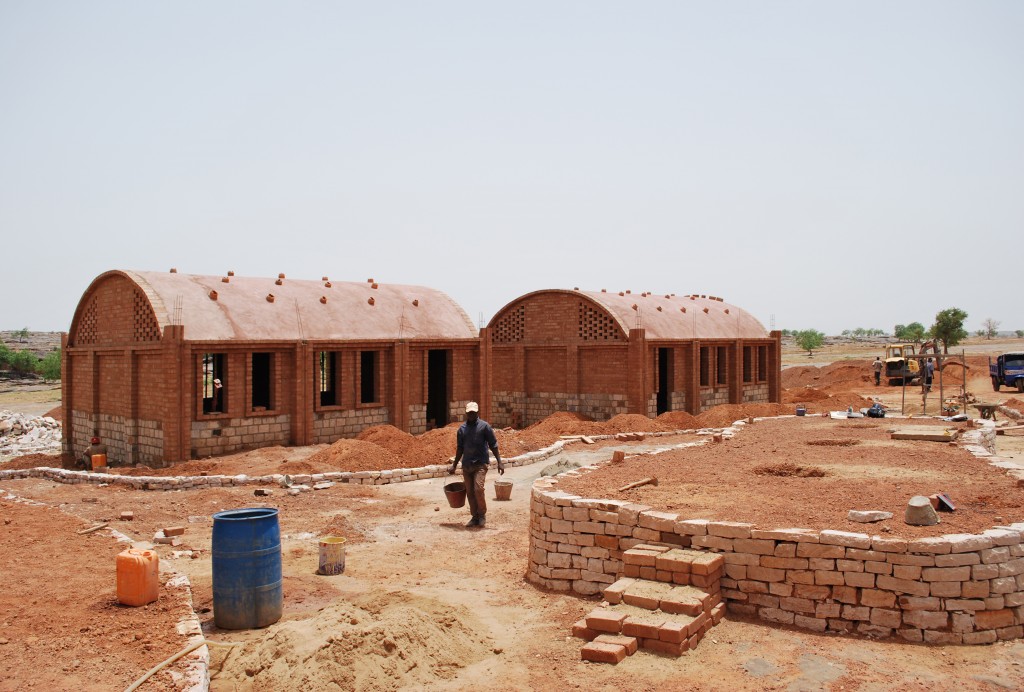
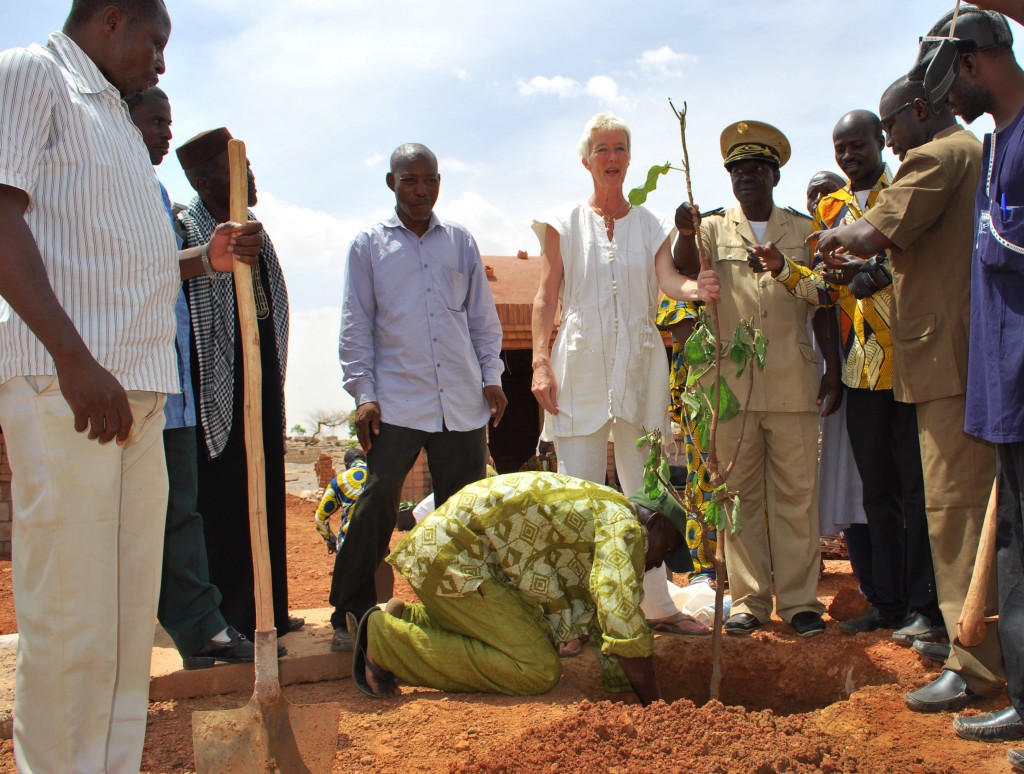
As a symbol, the first tree is planted by Jacqti de Leeuw, who represents the link with the Women Initiative and the Green Desert Initiative, while the second one by the prefect and third by the village chiefs and the educational institutions.
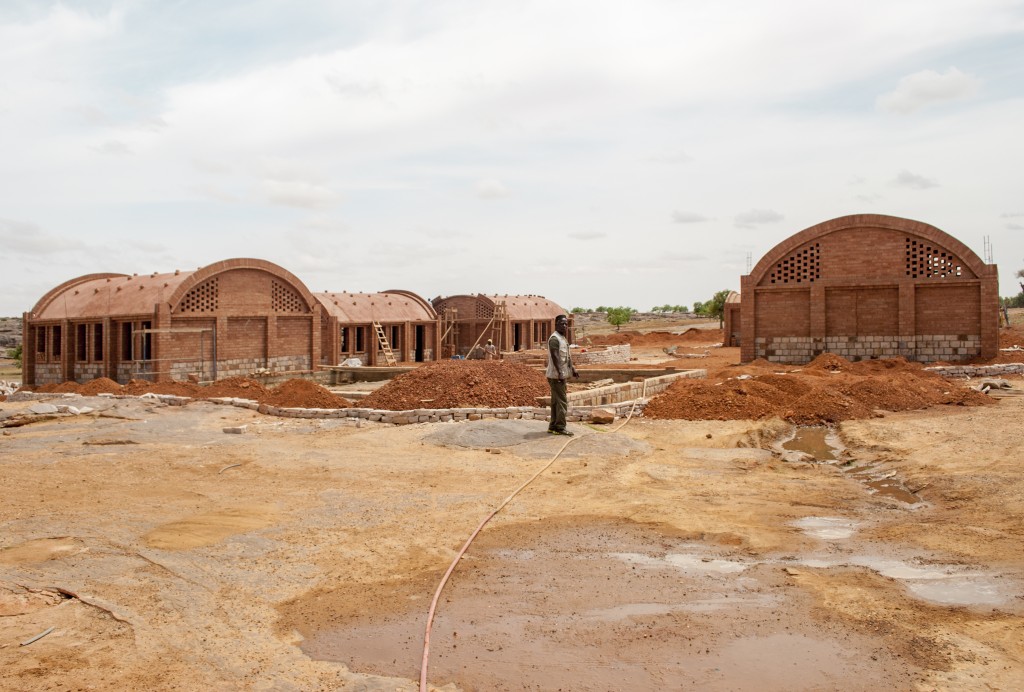
In October between 150-200 students will start with the fourth practice teaching subjects: building, water, electricity and agriculture.

The construction process of the Technical school in Sangha
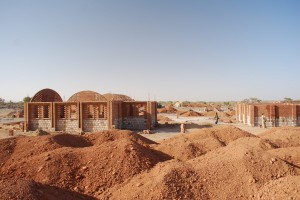
The Lyceum of Sangha is really an enormous project. At the location we saw 1200m3 of earth for the garden. On site the team of HCEB produce 7.500 bricks every week, arriving already at an amount of 50.000 bricks in total.
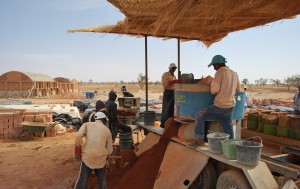
In the first classrooms, the roofs are on the way to be completed. In fact, one of the goals of the trip was to assist the local masons with the roof’s details and the start of the vault.
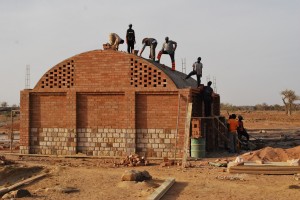
Inside the classrooms the preparation of the electricity is visible and on the terrain the marks for the gardens are set. The foundation for the offices and houses for the teachers are also ready.
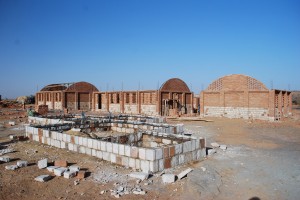
The rest of the preparation for the school is also on track. The smith started with the furniture, the windows and ports. The 500 herbs and trees are grown and can be planted on site in the end of June/ July. It will be a lot of work, but I can see that in October the first 150 kids can start on the school with the first four curricula: masonry, agriculture, plumbing ( hydraulics) and solar energy.
The rest of the program and buildings will be completed the next years.
Sangha: Practical Training College under construction
A couple of months back in collaboration with LEVS we applied for the international Holcim award that promotes a sustainable approach in architecture and construction. The project that we applied with was the Practical Training College in Sangha. The winners were announced recently and unfortunately we were not among them. The winning projects can be found on this link.
The Practical Training College in Sangha was already presented in our previous posts, but here is the latest version that is already in the building process.
Clustering the buildings, planting trees and creating water areas in an oasis of gardening and agriculture will create an inspiring and refreshing area of learning, teaching and research for new items like beekeeping and drying vegetables.
In this project we will use domes as a roof construction for the first time, primarily in teacher’s houses, but also in some other buildings. They will be made from HCEB bricks and covered with red earth.
Trial versions of the domes were made as an internship project in the Technical University in Sevare.
Even though we didn’t receive the award, we are proud to share with you some of the first steps in the construction of what we hope will become an important educational institution in Mali.
The stone foundations of the first classroom cluster are laid, and soon the construction of the brick walls will begin.
Click here to view a design booklet by LEVS architects.
The construction of the Lycée Professionnel in Sangha
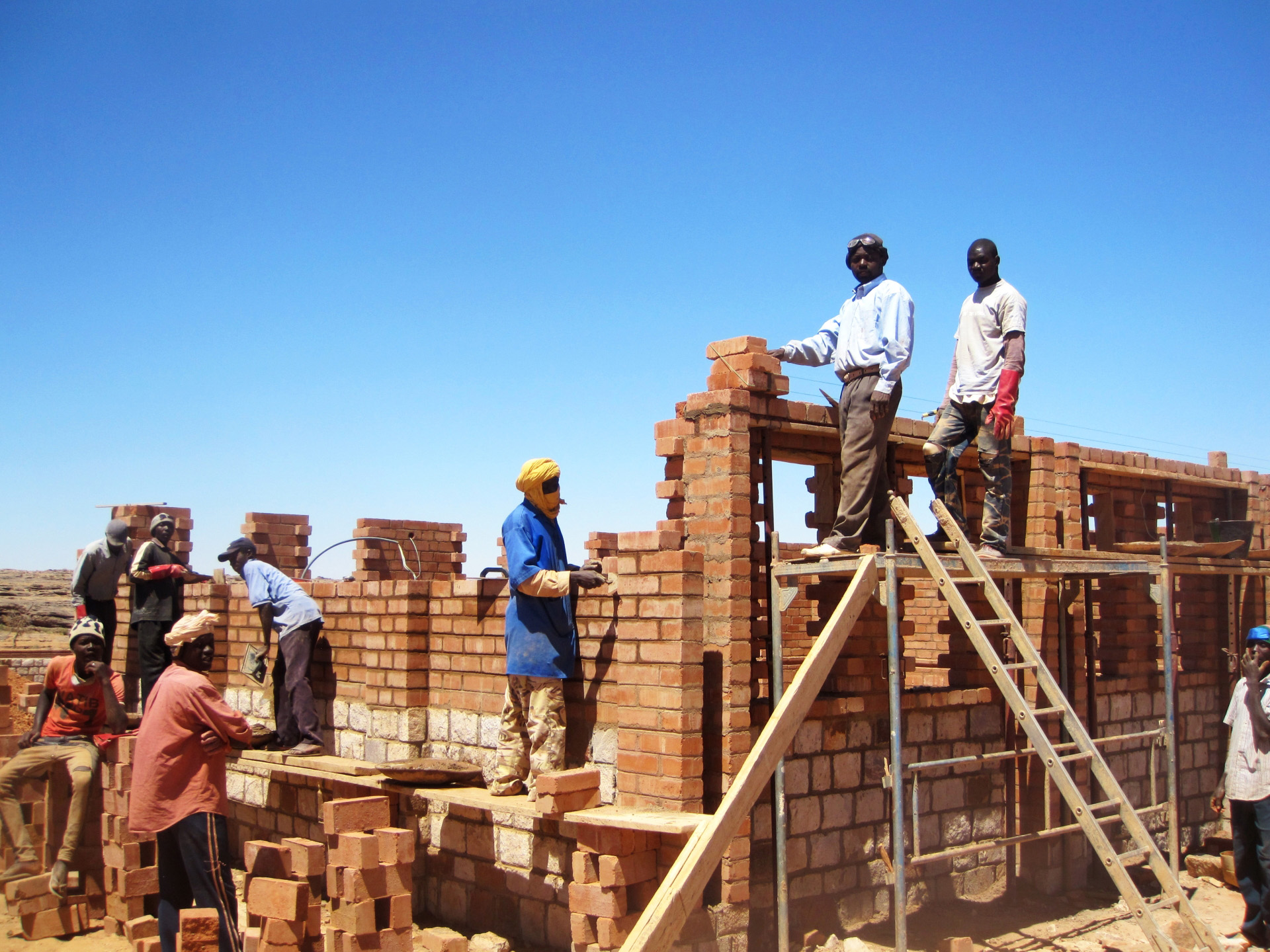
The construction of the Lycée Professionnel in Sangha is going strictly according to plan. In preparation for our visit in the end of March, we provide a little update of the school’s current status. Here follow some important moments of the process.
The start of the construction was made possible by the supply of ground earth, red soil and materials, thanks to the efforts of three so-called “BEN” trucks by Agro Industries. In late April, about 1500 m³ of soil will have been transported to the site area in order to shape the landscape.
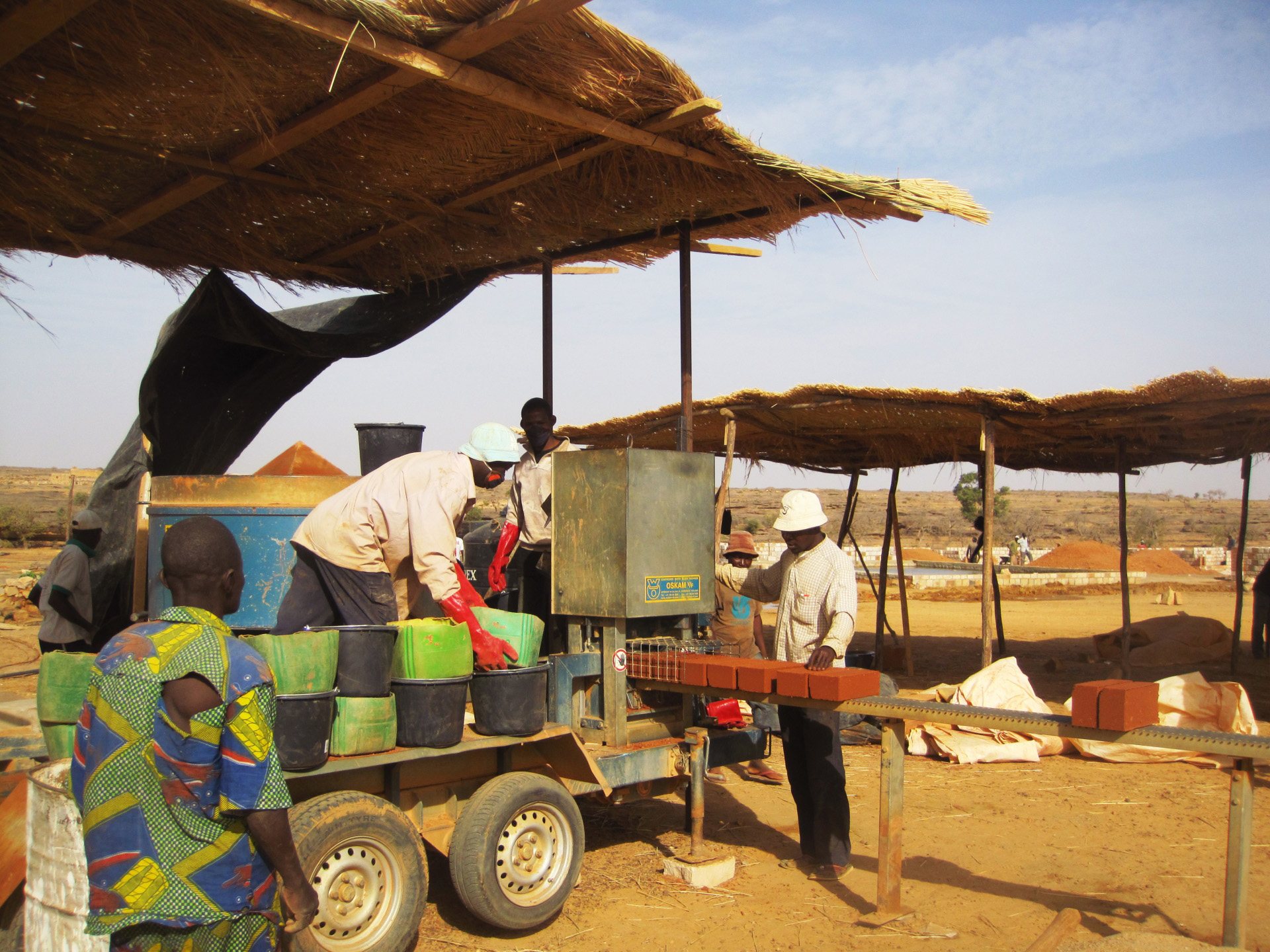
On site, the brickwork factory runs at full speed. One of the remarkable moments occurred when the first stone was laid in the presence of Sangha’s mayor Ali Dolo and students of the ETJS in Sévaré who are doing their internship in Sangha.
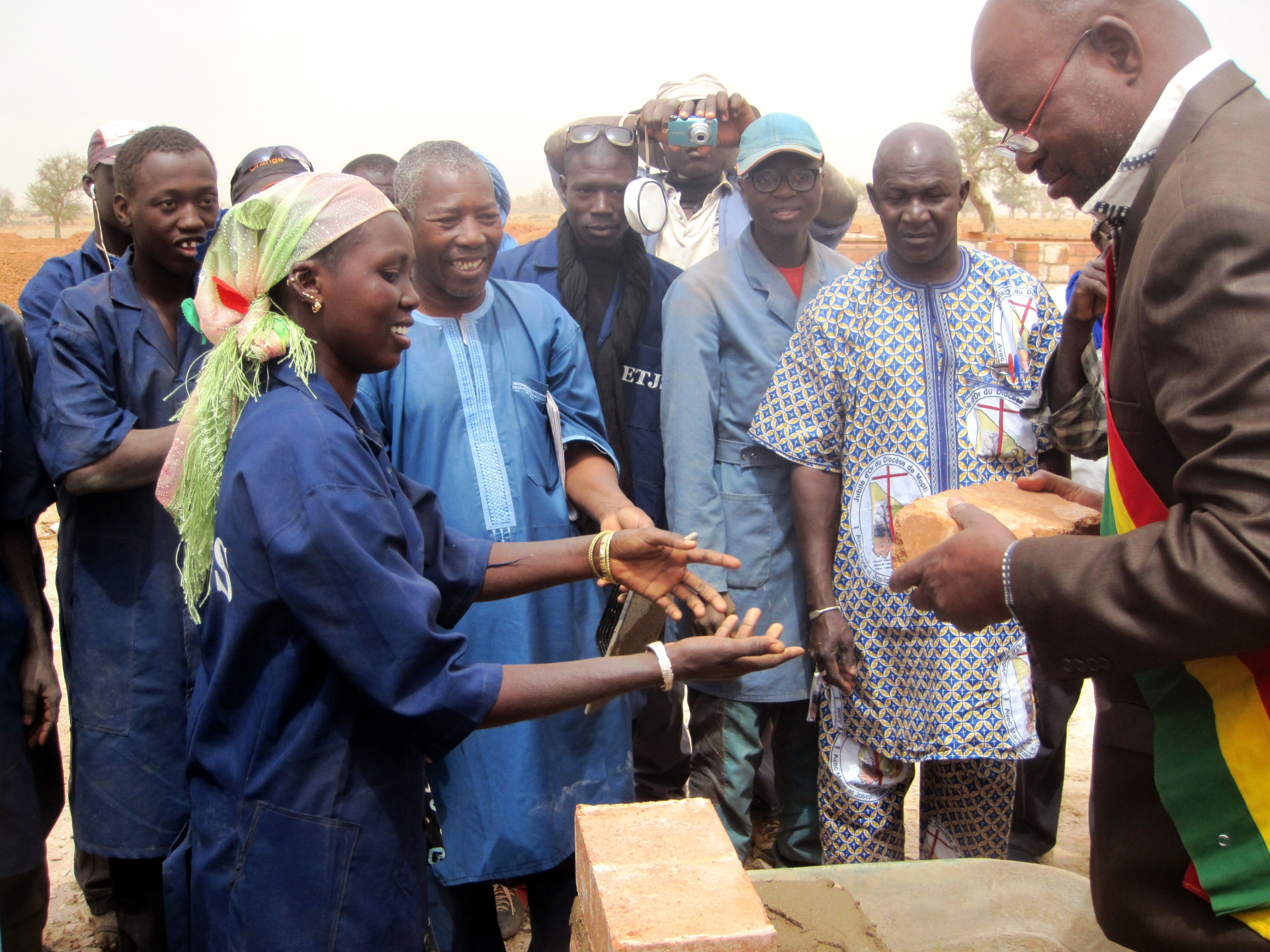
Regarding the progress of the project, the basement made of chopped stone of the first six classrooms andteachers’ houses is now finished.
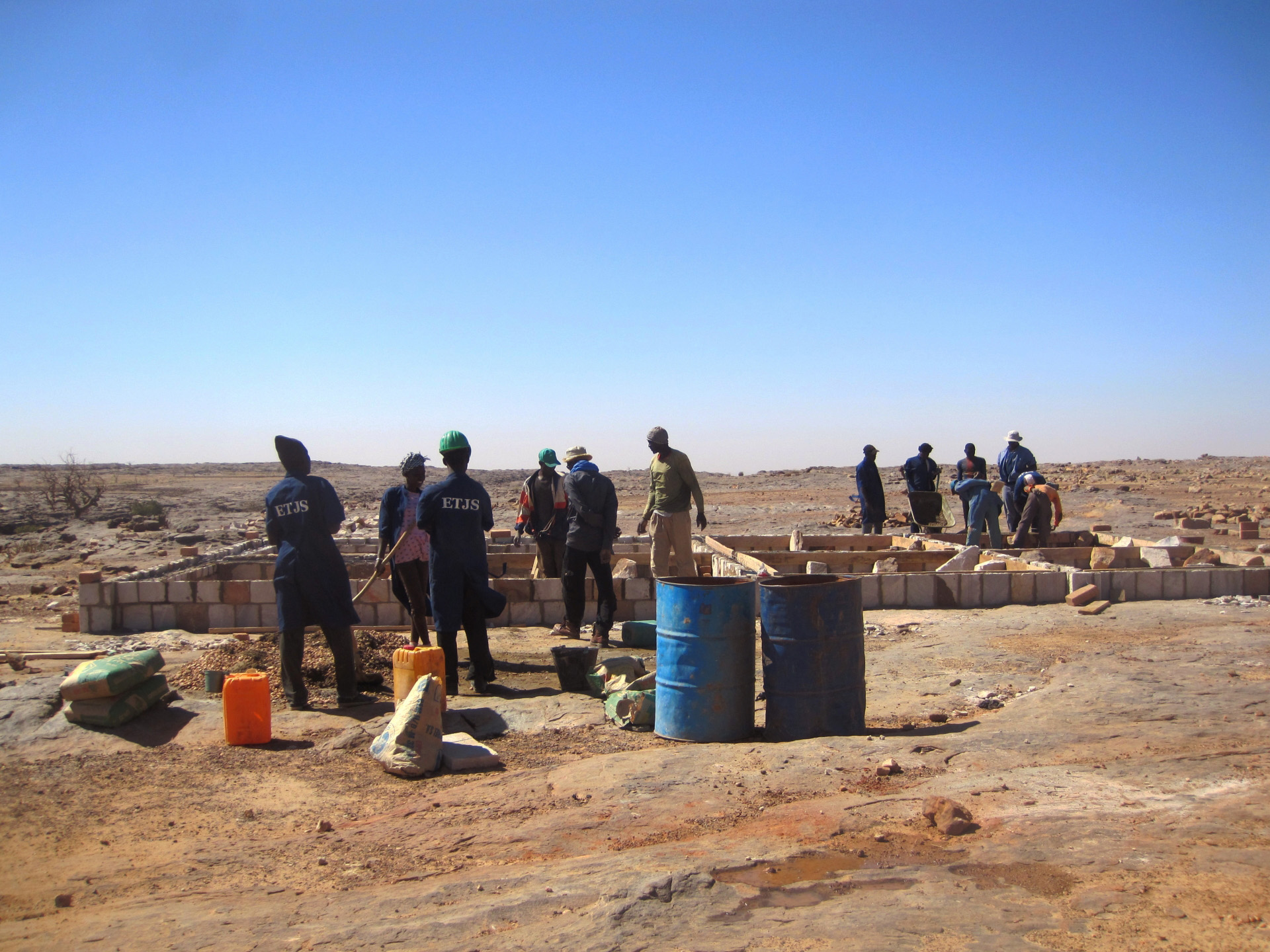
Three of these classrooms are significantly advancing: wooden panels on the window frames and electricity points have already been installed.
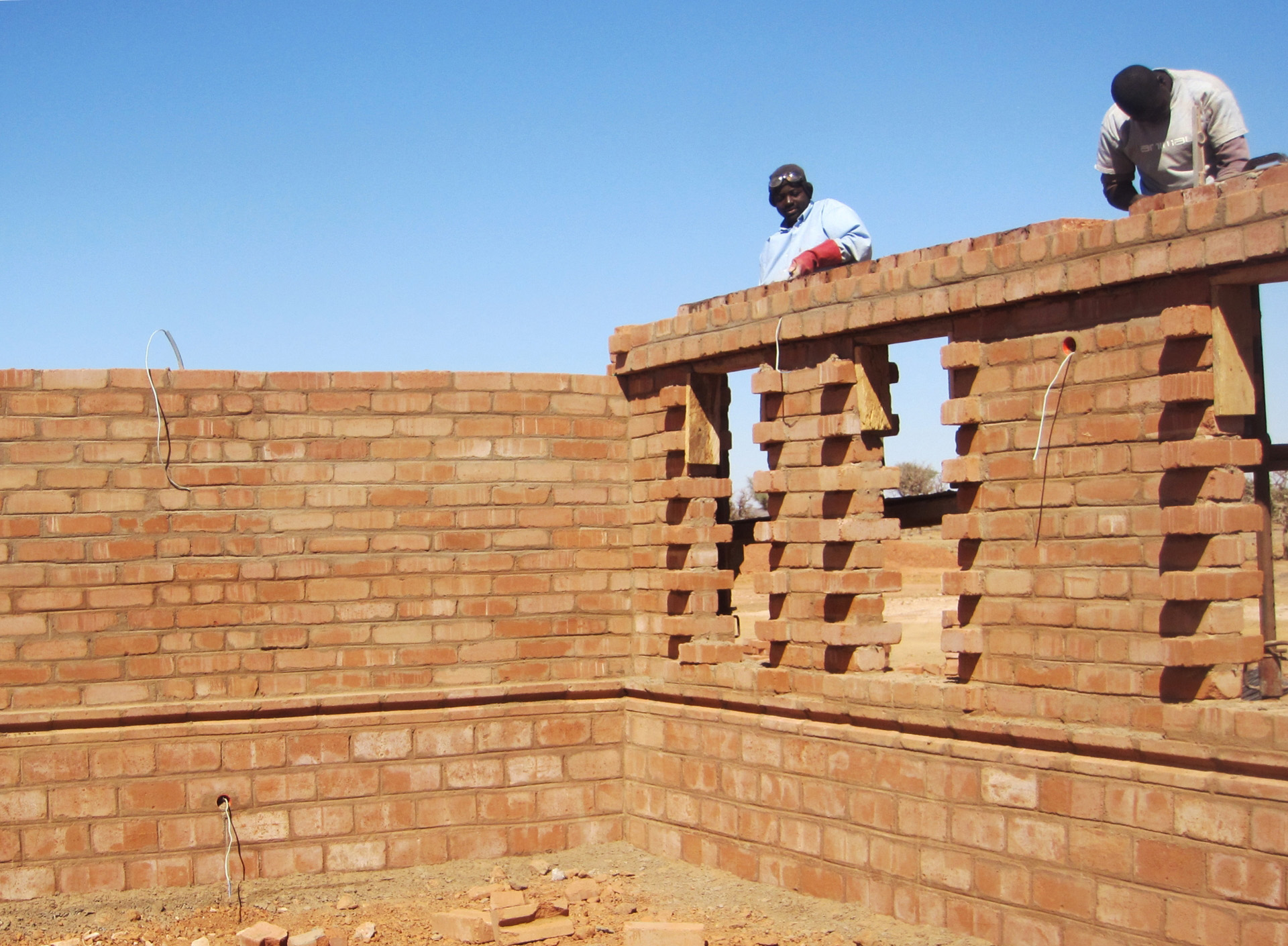
The visit of all village elders and educational organizations was very important for the future of the Lycée Professionnel and its students. The ADI organization, headed by Amatigue Dara, is taking care of the entire process, from registering the students to discussing the program of the lessons.
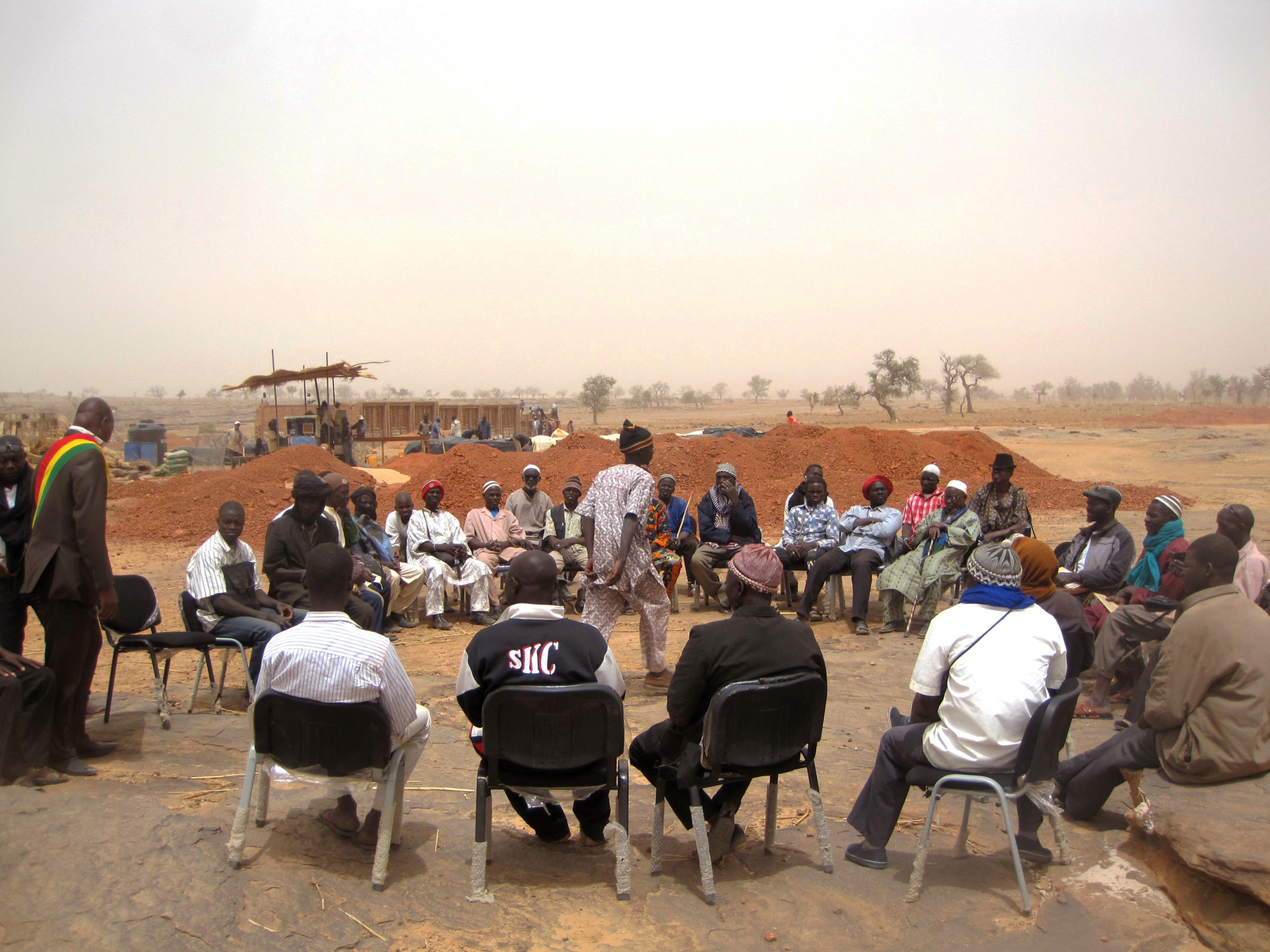
There are around 200 people, including women, working on the school to enable the project’s success.
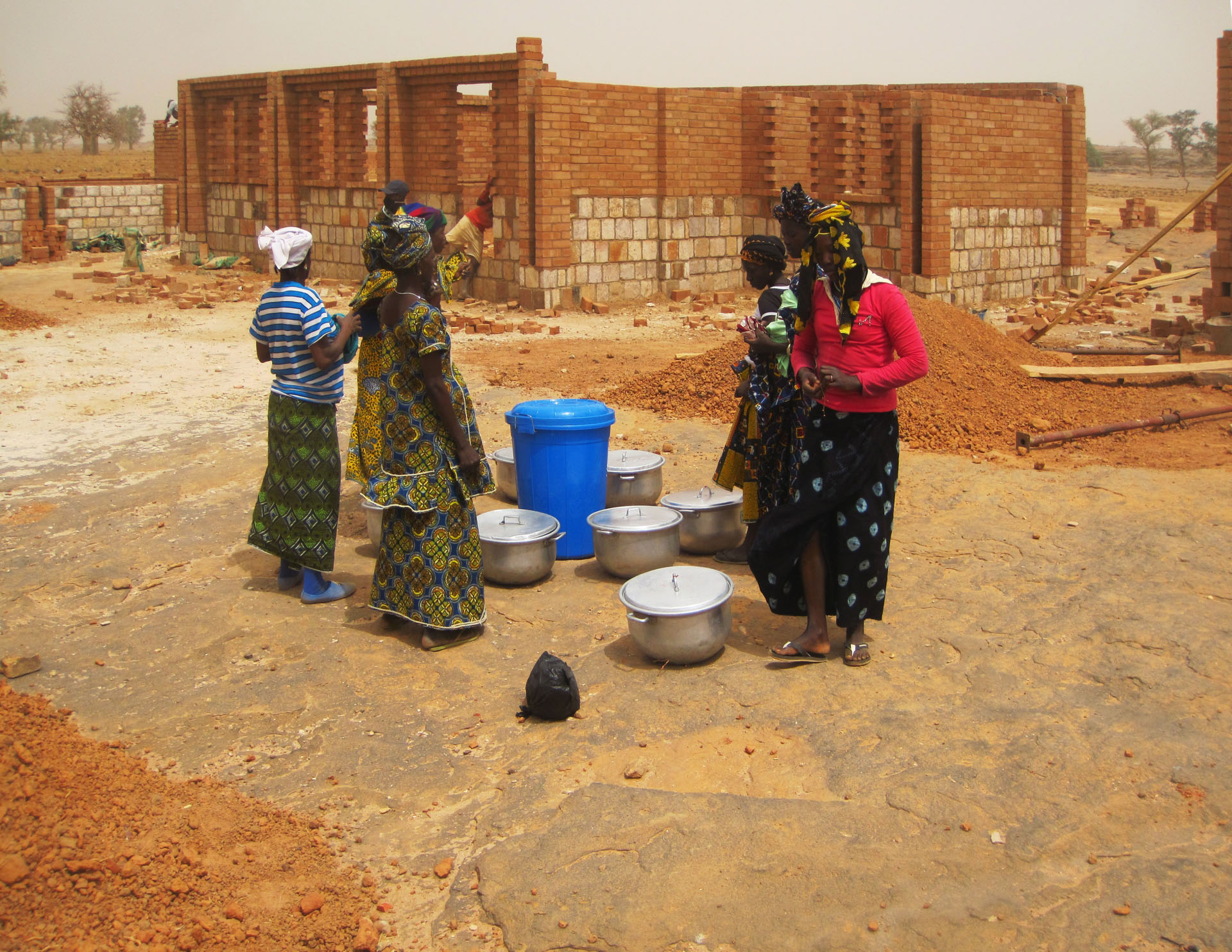
The students of the ETJS are now proceeding with the construction of the teachers’ houses. In the end of March, we will be in Sangha to help and discuss how the barrel vaults and domes can be made in the simplest way possible.

Delineation of the Lycée Professionnel Sangha
Realizing the delineation of the first classrooms, the houses and the first small office, the construction of the school has begun. On the site of about 5 hectares, in the next three years a school will be built where practice, entrepreneurship and practical and direct applicability of education will take shape. With such themes on the curriculum, this school will be the first one in Mali. So this does not imply a program defined from Bamako, for years and irrevocably nailed down, but it concerns a demand formulated from the region of Sangha and this demand will be leading. Training in 22 areas will be allowed.
The team delineates the first cluster by means of a measuring tape.
The local population is cutting natural stones into blocks.
We will start with education regarding construction, agriculture, water and sanitation and the provision of energy. It is in these sectors that demand in the region is to be found and is there where a lot of work might be generated. Next to the delineation of the terrain, a lot of work has already been carried out in the cutting of stones. The first 15.000 stones are destined to the first cluster of buildings. In August of the current year students who follow an internship with coaching will start with the construction of the houses. Next October the first 150 students will stand before the door. Not yet the door of the new building, but very close to the school to be built.
These students will also play a role in the building of it. Thus the building of the school itself will be part of the training program. They will work on the installation of water and sanitation, on the gardens for the agriculture program, but also on the construction of the various necessary buildings. In October 2015 the next selection of 150 students will be accommodated in the new building.
Amatigue Dara (ADI) never loses the overview.
Curriculum Lycée Professionnel Sangha
Already since some years we are busy to discuss about what is really a good training program in Sangha. Now we have begun with much enthusiasm, after many discussions on the practical education where professional training will be put into the center. A curriculum with construction, water and sanitation, agriculture and so more. But how will this look like?
New organization chart of the Practical Training Colleges.
The last trip has made me completely happy. Not only in Sangha, in Bandiagara, nor in Mopti, but also at the highest organism in the sector education in Bamako have I been received with open arms.
In the office of Oumar Yacouba Maïga, National Director of Education in Mali.
A new principle in education has been introduced and it is geared towards that new principle that we are going to build a first school in Sangha. Very seldom I have met a civil servant who was so enthusiastic, who knows everything about constructions with stones of compressed earth, who contemplates and who has a vision on the question how one could deliver the opportunity to the youth to learn a profession locally. He could even show me a scheme with the position and the opportunities for the new educational set up. The fact that the school-building will be constructed was a surprise for him. He assured me not to worry as far as a director, teachers and his full support are concerned. In short, this meeting was a feast and it will inspire us to go ahead on the chosen road.
Courses in architecture with clay
My first course at ETSJ (the technical school) in Sévaré. With a small beamer I present a lot of examples of architecture with clay all over the world. Again it is Basil, chief of the section construction and masonry, who seizes perfectly the message. Like a real teacher he involves the students in the lesson. What have they seen, what have they heard, and what do they consider to be important? The importance and the quality of building with clay, cooperation, the mason as an architect and the opportunities in the future. All students of group 3 are present. They show a vivid interest in the manual press, as they can work with it themselves. It seems there are already two groups of students that have taken the decision to work together in a kind of association. They are not yet aware of the plan to employ them in Sangha after their DEF.
A challenging internship programme; dome construction
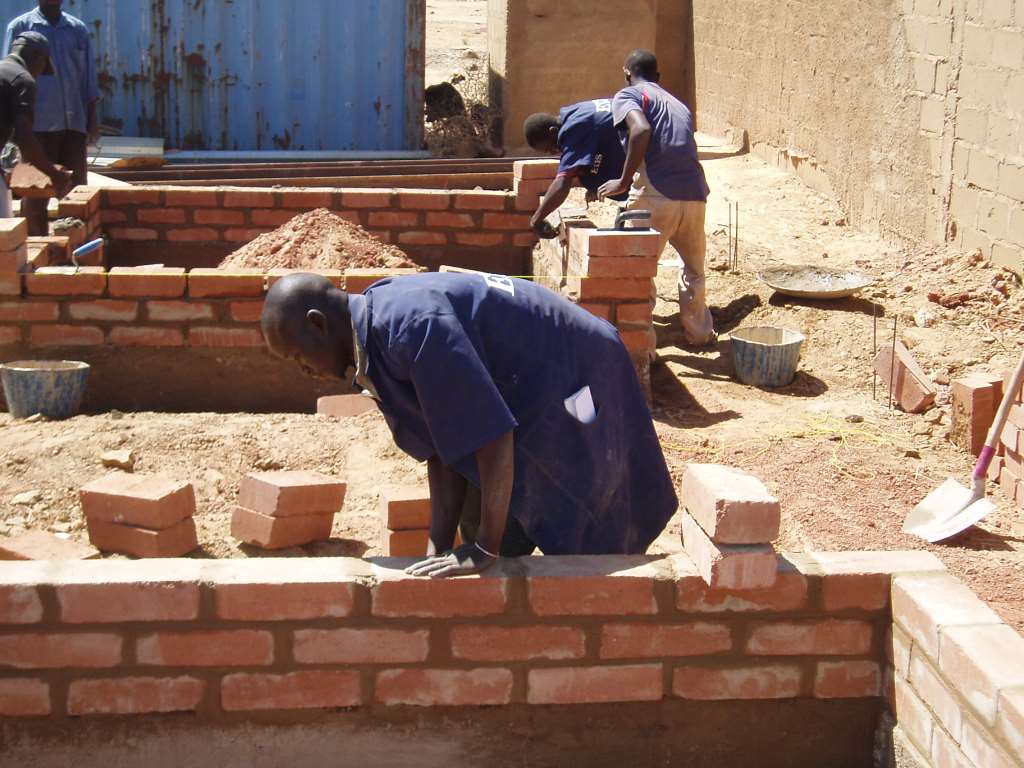 This year the internship of EJTS took place in Sevaré. It started on February 5th incorporating 10 students in total, of which 3 girls and 7 boys. Two facilities of 3000 * 3000 mm that they are going to build will be covered with a dome. What this project explores is application of precise measurements, preparation of land, plotting measurements and construction of foundation using tested steel. The biggest challenge is undoubtedly the phase in which the facility is covered with a dome.
This year the internship of EJTS took place in Sevaré. It started on February 5th incorporating 10 students in total, of which 3 girls and 7 boys. Two facilities of 3000 * 3000 mm that they are going to build will be covered with a dome. What this project explores is application of precise measurements, preparation of land, plotting measurements and construction of foundation using tested steel. The biggest challenge is undoubtedly the phase in which the facility is covered with a dome.
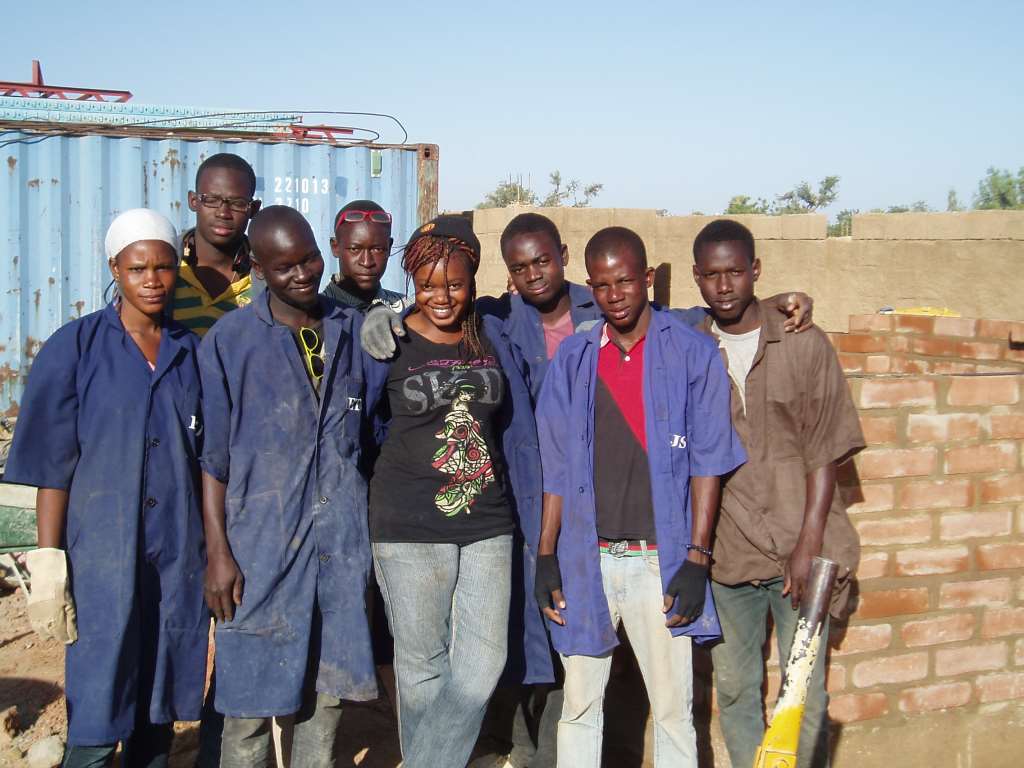 A couple of images of the project elaborate that the interns are using.
A couple of images of the project elaborate that the interns are using.
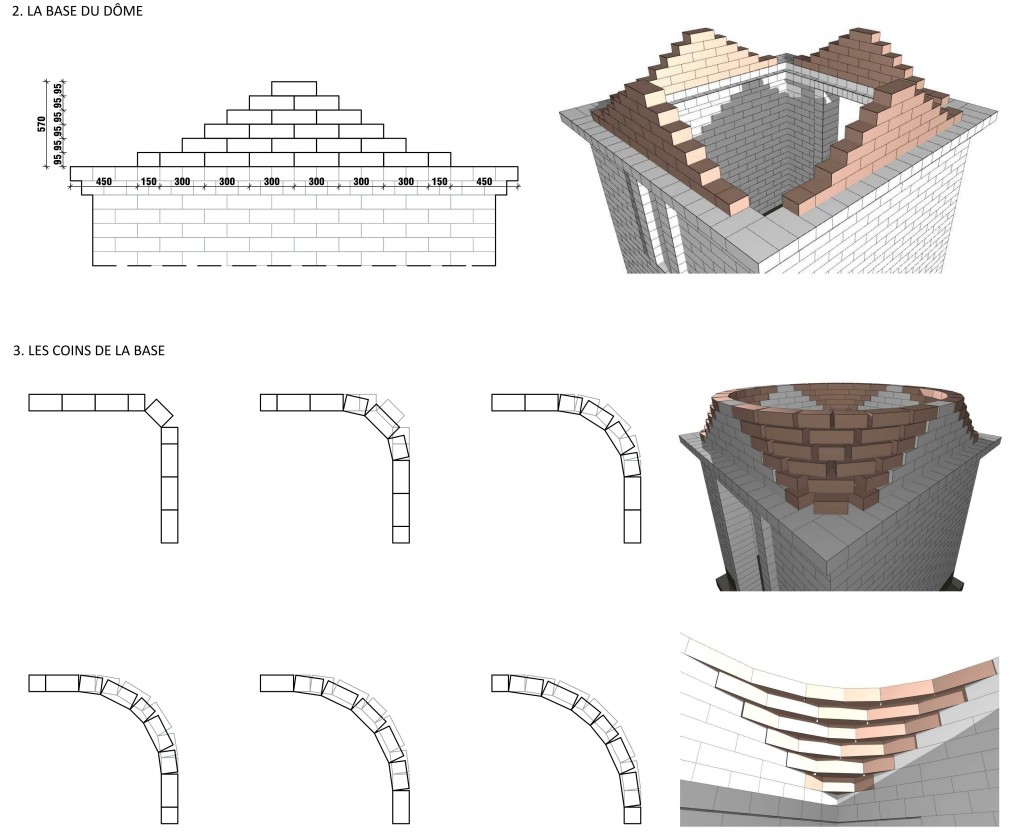
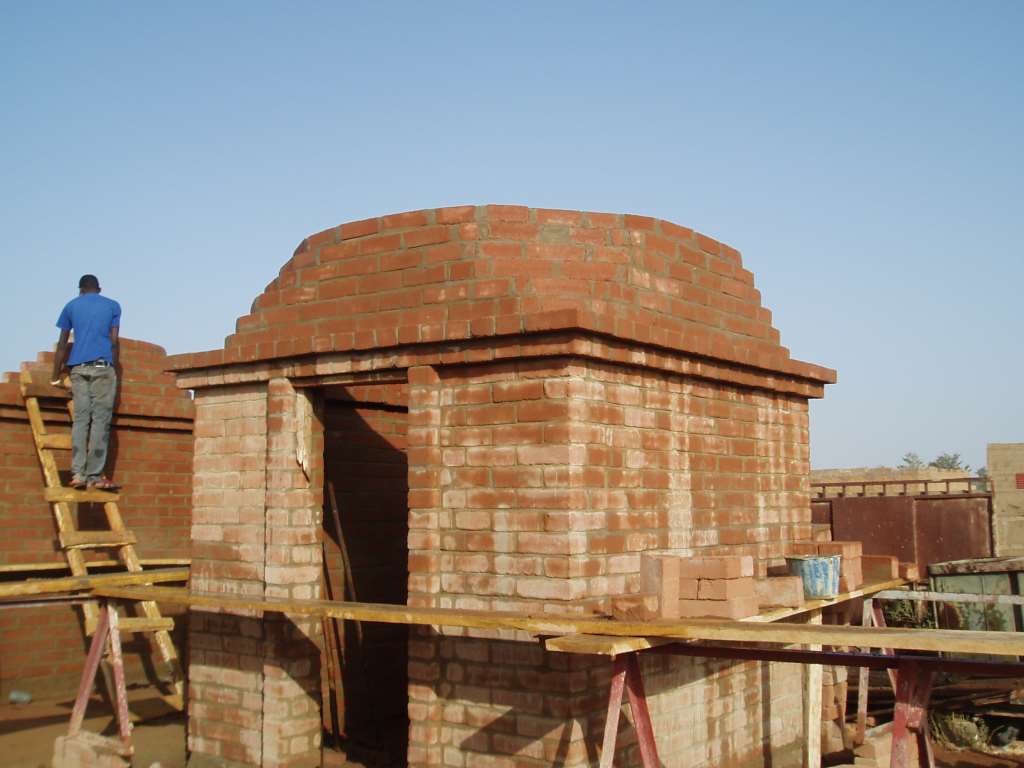 After having created the foundations, the students made the walls with two simple openings – a door and a window. Furthermore, like the drawings show, the triangulare base of the dome was constructed on top of the walls. The corners were then connected thus transforming the square base of the building into a round one.
After having created the foundations, the students made the walls with two simple openings – a door and a window. Furthermore, like the drawings show, the triangulare base of the dome was constructed on top of the walls. The corners were then connected thus transforming the square base of the building into a round one.
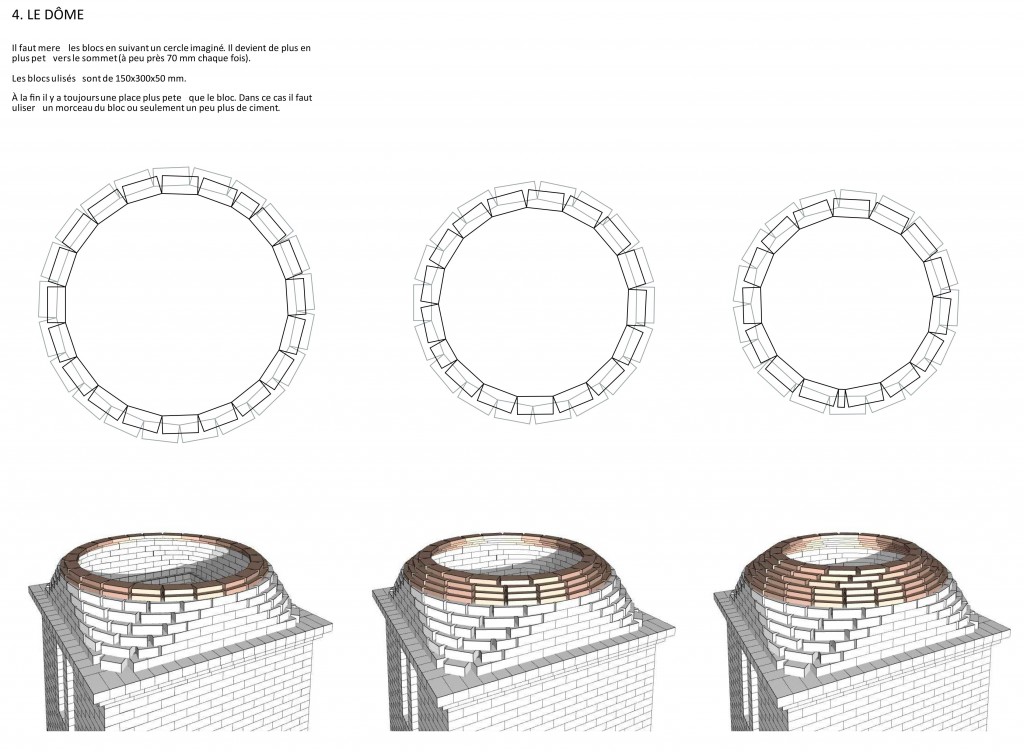
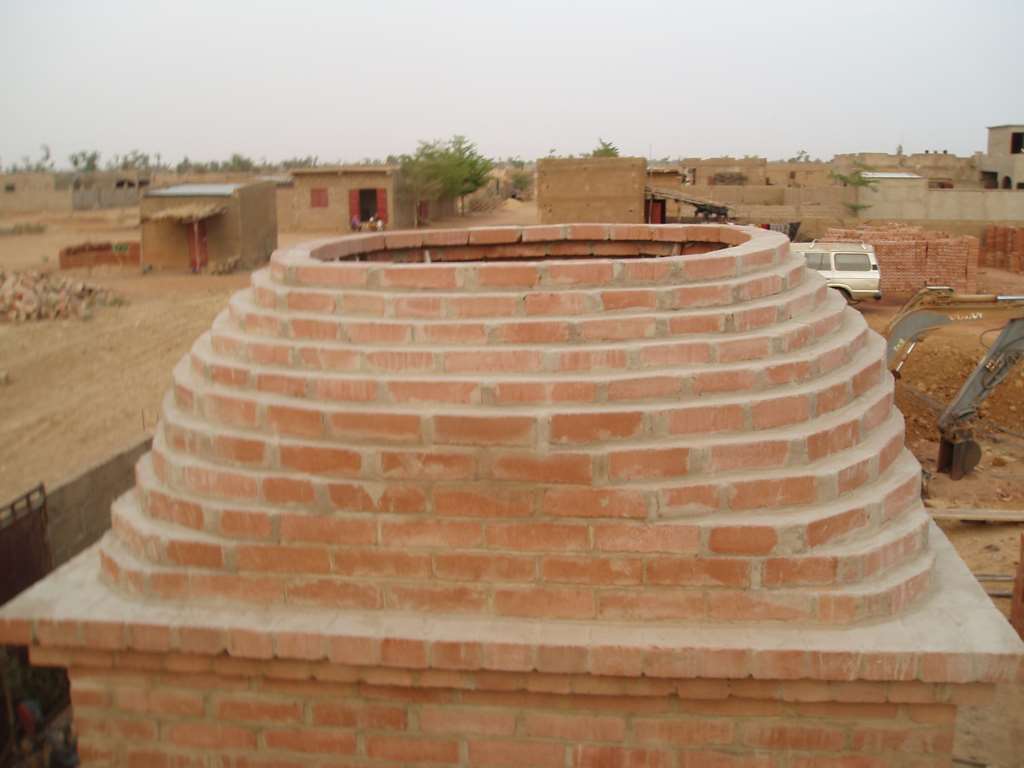 Continuing from the round base, the construction that follows is much easier. The blocs used in this phase are thinner than the previous ones (usually they are used as floor tiles). Each level of blocs is layed approximately 7 cm closer to the center of the dome than the previous one, finally forming an oculus with a diameter of 30 cm. Lastly, all the brics are covered with red earth.
Continuing from the round base, the construction that follows is much easier. The blocs used in this phase are thinner than the previous ones (usually they are used as floor tiles). Each level of blocs is layed approximately 7 cm closer to the center of the dome than the previous one, finally forming an oculus with a diameter of 30 cm. Lastly, all the brics are covered with red earth.
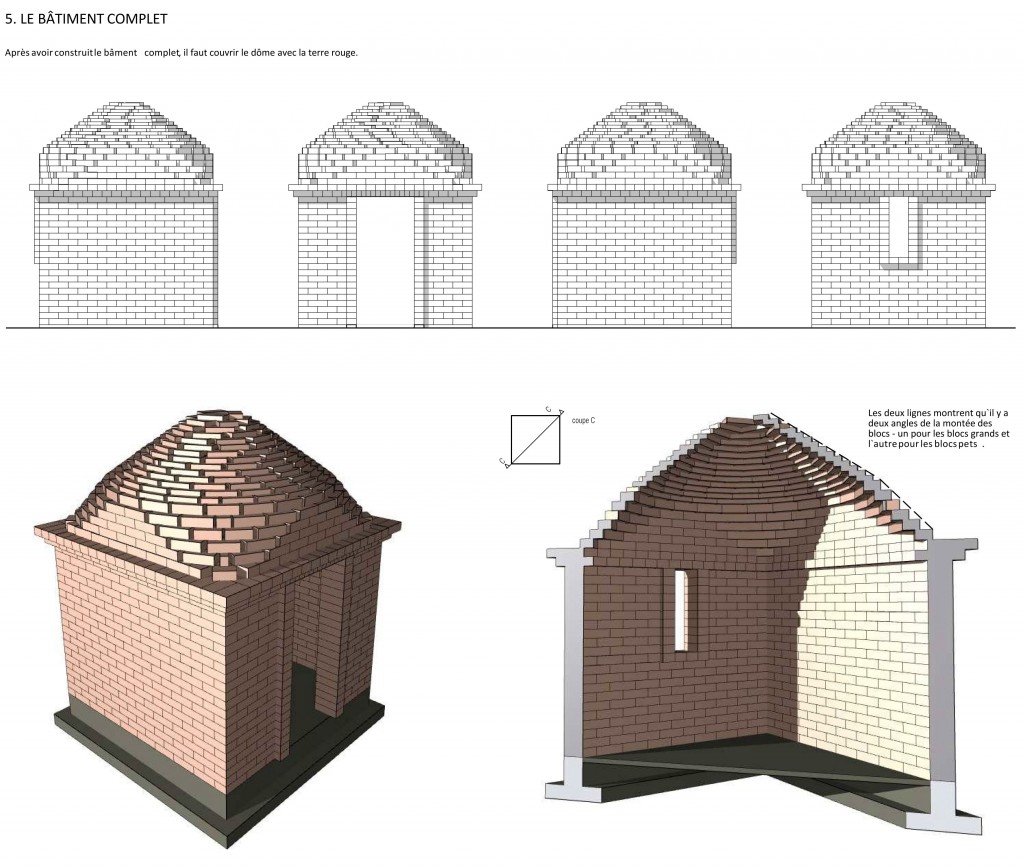 Teamwork and a proper division of tasks are essential for interns. Each can make their own wall, but the buinding as a whole only comes through cooperation.
Teamwork and a proper division of tasks are essential for interns. Each can make their own wall, but the buinding as a whole only comes through cooperation.
During the second stage of the internship the students will face another equally interesting task. They are going to build a hangar for the brick machine. The roof will have the form of arches and underneath it will be possible to store already made bricks. Hopefully this will solve the problem of the increasing demand for bricks both by the Foundation and the new partners like Toguna Industries..
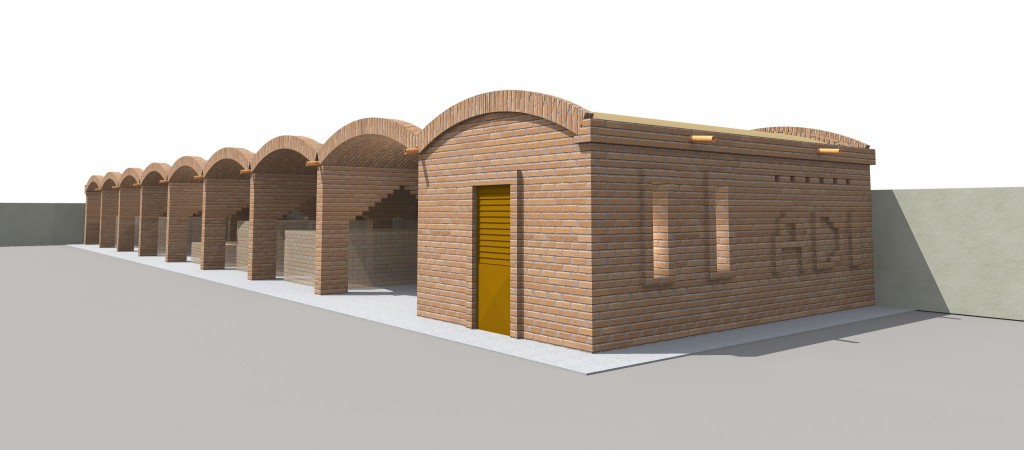 The internship will probably come to end on a short trip to Djenné where Boubacar Kouranse will show the students the traditional construction methods. If all goes well, the interns will acquire a lot of new skills and knowledge that they will be able to use in numerous projects in the future, starting already this year.
The internship will probably come to end on a short trip to Djenné where Boubacar Kouranse will show the students the traditional construction methods. If all goes well, the interns will acquire a lot of new skills and knowledge that they will be able to use in numerous projects in the future, starting already this year.
The compilation of the first two weeks of construction:
Week 1
Week 2
(Nederlands) Prix de Joop 2
Presentation Practical Training College Sangha
We had a formal consultation about the Practical Training College in Sangha with all the major businesses involved in education and cultural heritage. We think it is important that the Ministry, the Mission Culturelle de Bandiagara, and the local community are backing up our plans and the extraordinary curriculum. The Mission Culturelle needs to give us permission to build in the cultural heritage site.
Impression: the new school buildings surrounded by gardens.
The consultation with all parties went very well, which means that we will be able to start the project in January. The major of Sangha, Aly Dolo, is very involved with the development of the curriculum, According to him, it should include agricultural education, as well as training for the tourism, hotel and catering industry.
Amatique Dara (ADI) expounds on the agricultural education.
Through satellite pictures, the villagers have a clear view of all the villages in Sangha for the first time.
Jurriaan explains the design of the school buildings.
The scale model serves as a visual aid to help the village elders understand the thoughts behind the school’s design.
On the 28th of November we presented our plans for the school and the scale model of our design in Sangha’s municipality building. Every village was represented by a village elder. Also present were Sangha’s general secretary and the head of the CAP (National Study Advise board). People jostled around the scale model that Jurriaan was explaining about. For the first time we were using a scale model and realistic impressions to visualize our story, which helped clarify our story.
Scale model in cardboard with school buildings and (experimental) school gardens.
Impression: ‘Agriculture’ school buildings with the workshops adjoining the gardens in the background.
The artist’s impressions that Dennis had made were so realistic that people asked whether the school had already been built. The first draft of the technical drawings have been discussed with Amatique. The area’s borders have been determined with a GPS-system and a map has been made including the existing pathways, trees and soil differences. The first building blocks have been marked with red crosses (see picture) to determine whether their position is correct.
Drawing out the location of school buildings with GPS to determine its position relative to the soil (stone or banco).
In order to realize this project we have received 50% of the necessary funds from the Swedish Af Jochnick Foundation and 25% from Toguna Agro Industries. Financing the rest is still a challenge but the beginning is here!
Klik hier voor een uitgebreide ontwerpomschrijving.
Design Practical Training College Sangha
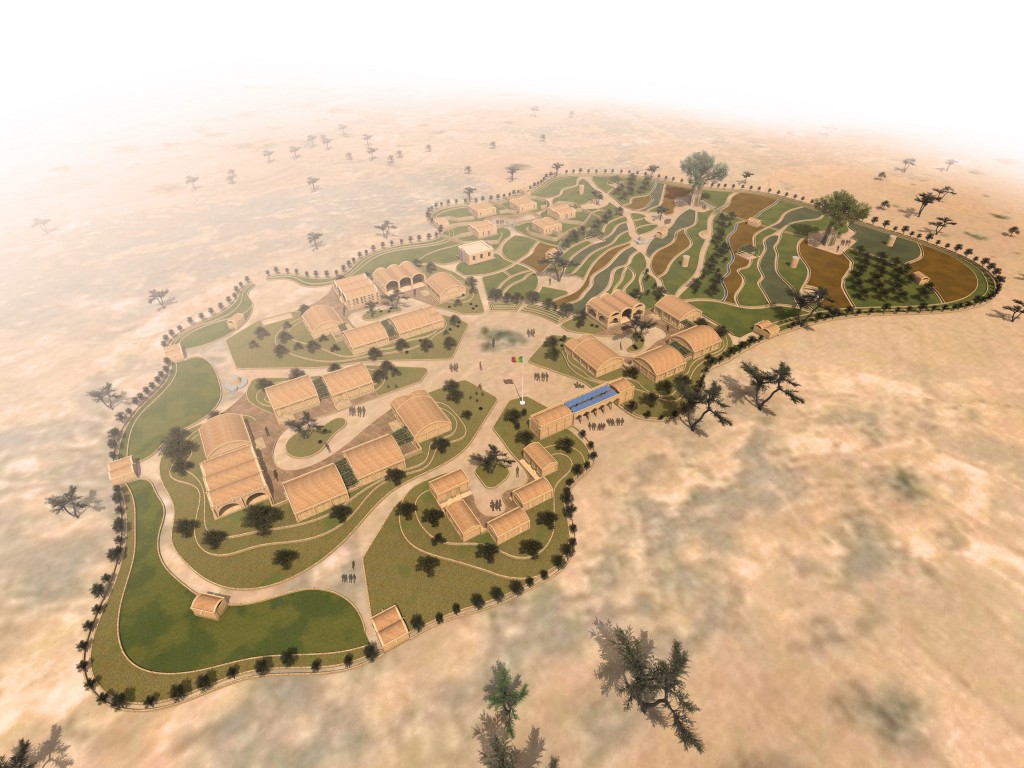 PRACTICAL TRAINING COLLEGE SANGHA
PRACTICAL TRAINING COLLEGE SANGHA
The mayor of Sangha, Aly Inguo Dolo, has asked l’Association Dogon Initiative (ADI) to realize a Practical Training College in Sangha. In the beginning, it will be destined to 600 students, but in the future this college will probably accommodate 900 students. ADI has accepted this mission. At the college training in building techniques and agricultural techniques will be realized. These trainings are further education destined to students in Sangha and its wider environment. In this region live about 40.000 persons. Almost 10.000 students visit primary schools situated in the region. But in the whole region there is hardly any further education. And certainly practical further education is lacking.
This Practical Training College will be realized with the approval and with the collaboration of the ministry of education. It will be a public school for both girls and boys. An important objective of this new college is the fact that it offers practical training linked to the daily environment and living conditions of the students and their parents. The practical training will be adapted to the problems and to the conditions relevant to that region. The establishment of this direct link is a novelty. This way, the initiators aim at making a connection with daily tasks, like the improvement of agriculture, the realization of buildings, dams and roads, and the restoration of cultural heritage.
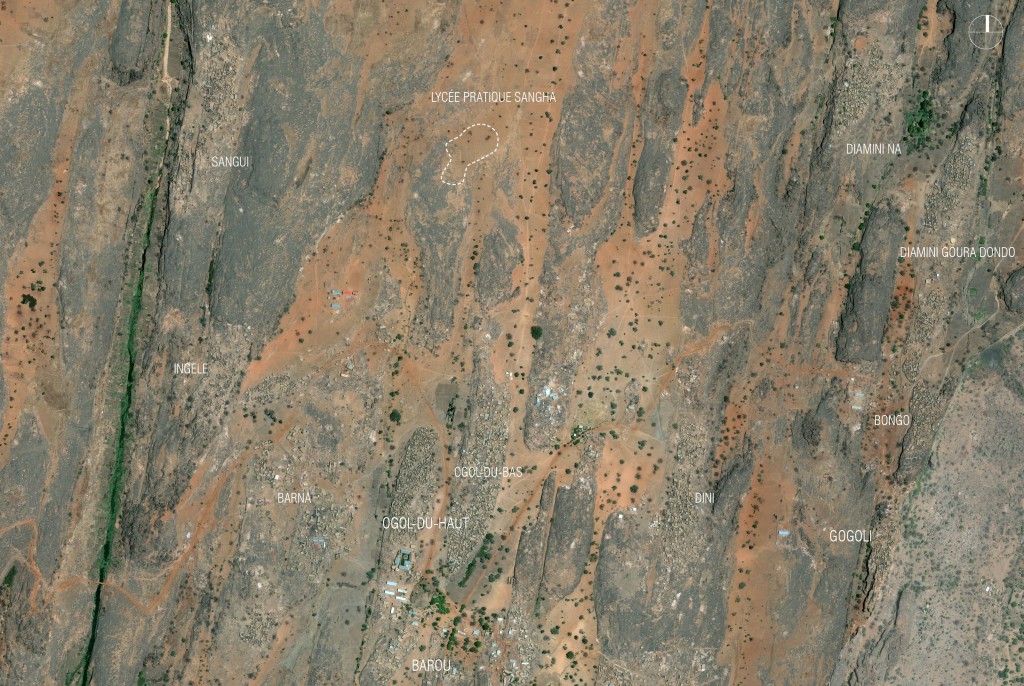 Aerial Sangha, ten main villages and designation schoolterrain
Aerial Sangha, ten main villages and designation schoolterrain
SANGHA
Sangha is one of the most important central villages in the Dogon area. The village is composed of several neighborhoods and communities. In the communities of Ogol Dah and Ogol Leh, which have always been the most ‘central’ villages, one finds already many schools. There also the first school in the whole Dogon area is to be found. This school is now over one hundred years old. Sangha is also the village where many important investigations into the Dogon culture are carried out. Amongst others by the French professor Marcel Griaule and the Dutchman Herman Haan. They did so because the Dogon culture and architecture are very particular. A large part of Dogon country, with Sangha at its centre, has been designated as a UNESCO cultural heritage site.
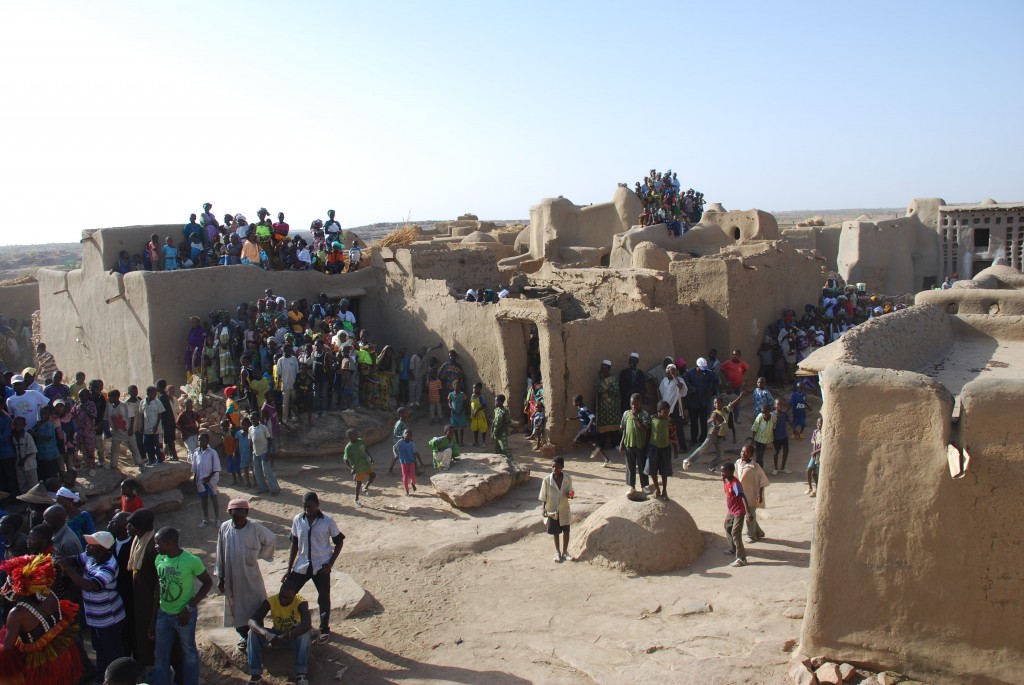 Town meeting on the town square in Ogol
Town meeting on the town square in Ogol
It is a complex task to build a big ensemble like this Practical Training College. This applies in particular considering the context of cultural historical values, and being so close to authentic communities. The challenge is to insert and interconnect the location, the buildings and the program in a logical way, but with respect for the building tradition in Dogon country.
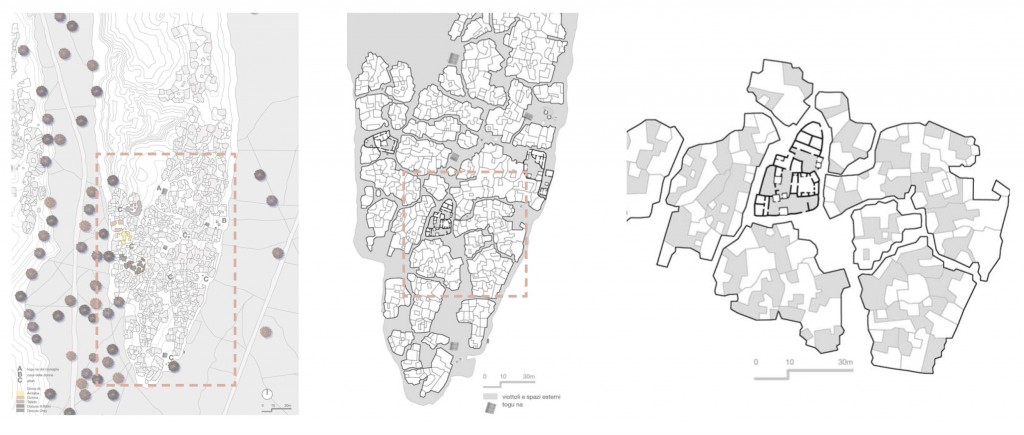 Structure village – structure in detail – living detail
Structure village – structure in detail – living detail
 Section village Ogol on the stone hill
Section village Ogol on the stone hill
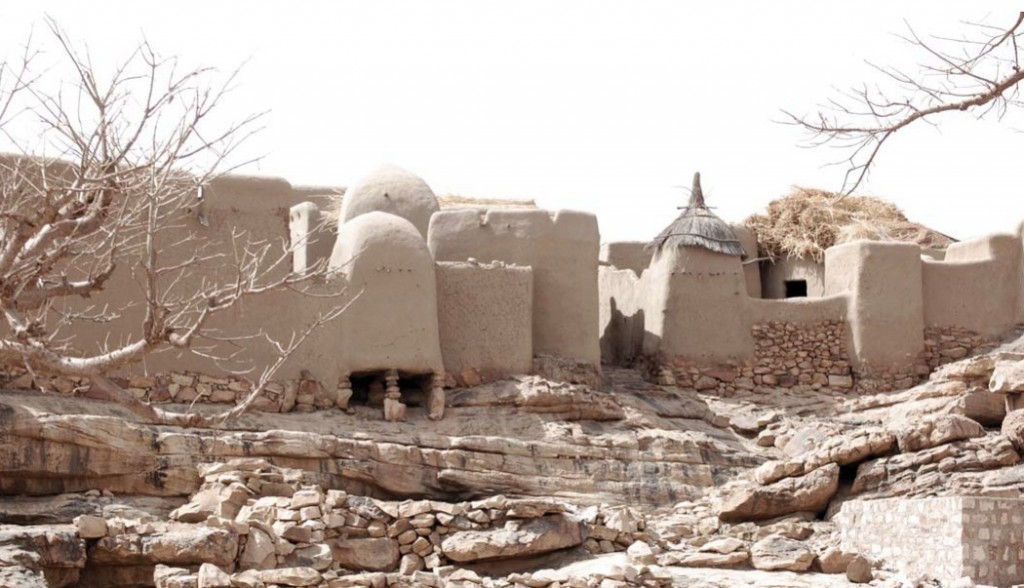 View of the village on the stone hill
View of the village on the stone hill
THE PLAN
The various units of the College, like the school classes, the workshops, the toilettes, the offices, the houses and the storage facilities, have been designed like separate elements. Thus is the tradition in Dogon country. The entrance, the granaries and the women’s house are interconnected like a jewelry necklace by a wall of cut stones. This way, the court space develops almost automatically, and also the difference between public and private space. This way also, the buildings and the landscape of the school have been designed like a coherent grouping of constructions.
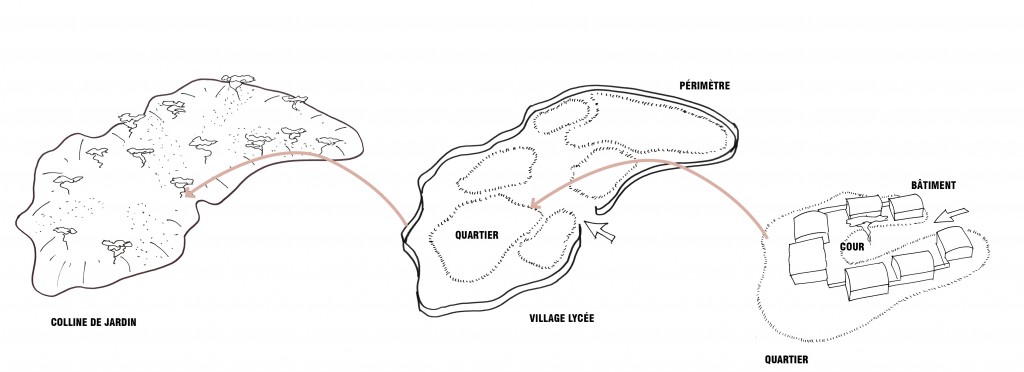 Cut stones are the basis for the terrain and for the enclosure. But they also form the basis of the houses. The upper structure of the buildings is made of stones of compressed earth. The buildings carry barrel vaults, smeared with red earth and with cement. The buildings have differing dimensions, heights and distinguishing details, and thus a diversified image shows up. These differences will be determined together with the newly trained masons. This way, particularities and connectivity will develop and probably a new idiom in masonry.
Cut stones are the basis for the terrain and for the enclosure. But they also form the basis of the houses. The upper structure of the buildings is made of stones of compressed earth. The buildings carry barrel vaults, smeared with red earth and with cement. The buildings have differing dimensions, heights and distinguishing details, and thus a diversified image shows up. These differences will be determined together with the newly trained masons. This way, particularities and connectivity will develop and probably a new idiom in masonry.
The school building consists of school classes and workshops for three groups of activities. Building techniques, agricultural techniques and general knowledge disciplines. Next to this, there is an administrative section with facilities for storage and working space for the teachers. Apart from the really ‘school section’ of the building, houses for teachers will be built. The intent is to offer space to the development and the improvement of practical training. In the future, the school should be able to grow and to adapt itself to developments in education. What these will be? The future should teach us.
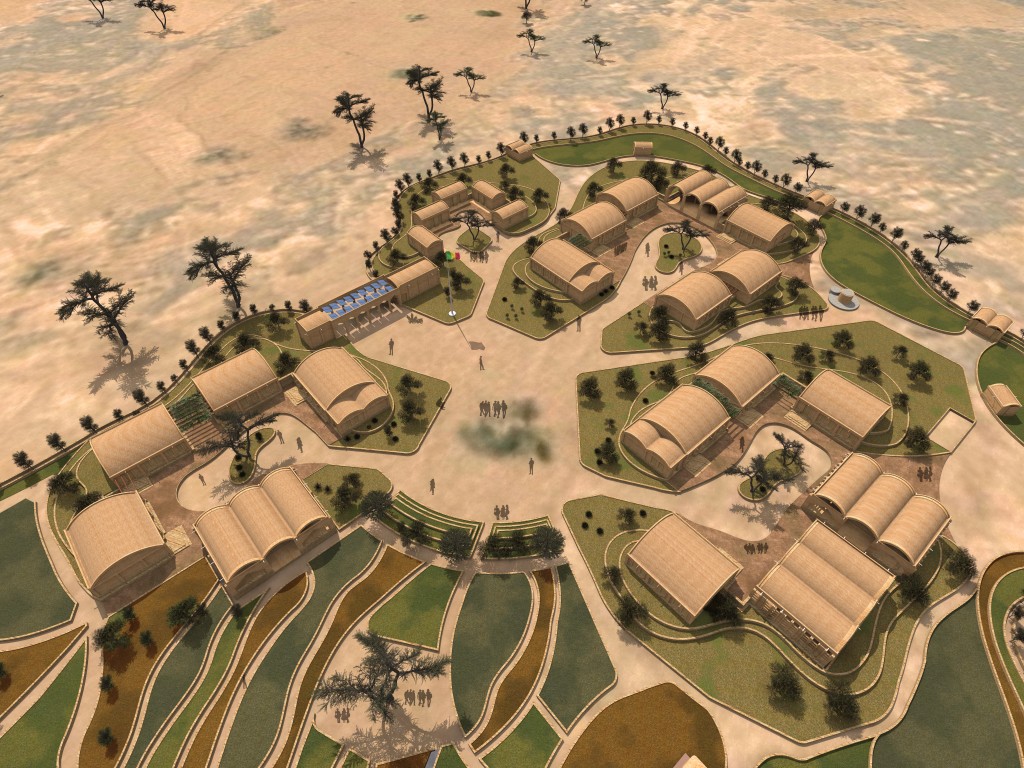 The study clusters (families of premises) open up to the schoolyard
The study clusters (families of premises) open up to the schoolyard
THE STRUCTURE
As far as the structure of the school is concerned, we have been looking not only to the connection with the characteristics and the ‘grain’ of the environment but also to the way of organization of traditional Dogon communities. The Dogon principle stating ‘the village is the home’, should also apply to the school as a whole. Families live in a family house: the ‘Ginna’. And several ‘Ginnas’ are grouped together around a square. These squares are connected to the central village square, where the ‘Taguna’ is to be found, the location of meetings. There, all important meetings take place. All in the village meet here. The structure of the school has been designed in the shape of ‘families’ of school classes. Agricultural education, building techniques education, general knowledge education, the houses and the administrative spaces are assembled around meetings places. These on their turn are connected to the central school square. The ensemble has been inserted into a green landscape with water-wells, gardens and paths. This way, the school community is a new community in the complex of communities in Sangha. The old village sections have been built on stony hills. But contrary to this, the school community will be constructed precisely on fertile soil, thus facilitating the growing of vegetation and the practice of agriculture. The space for the new school community will be defined by natural boundaries of walking paths and by the divisions between rocks and soil.
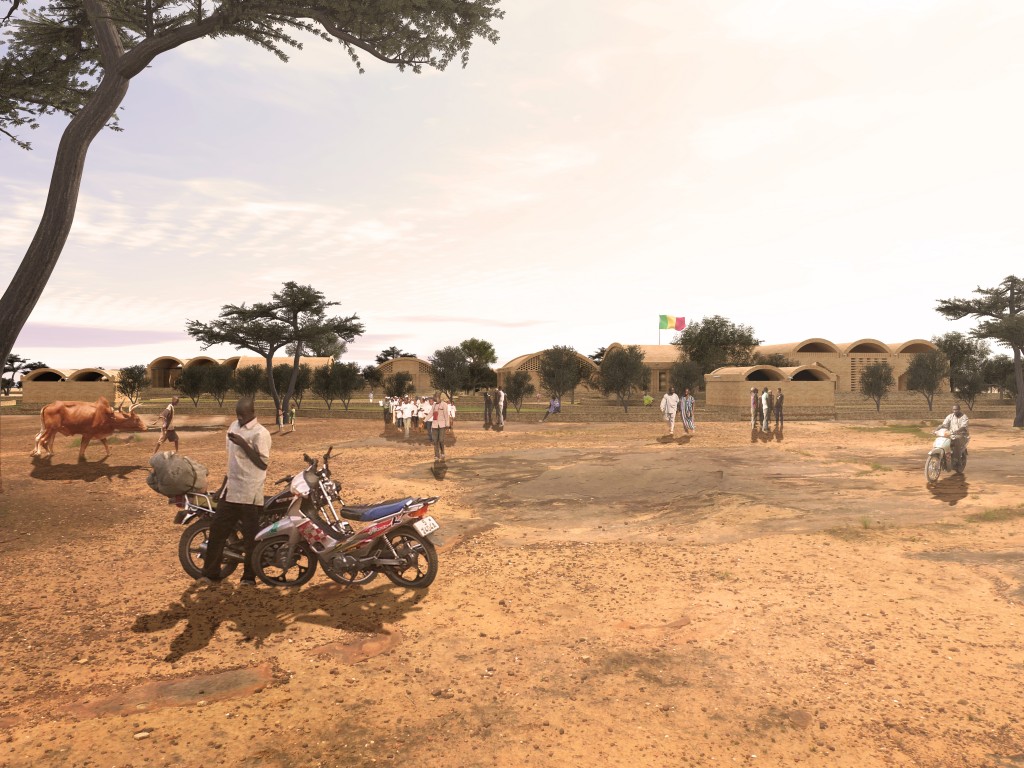 View from outside the schoolterrain
View from outside the schoolterrain
FAMILY 1: AGRICULTURE
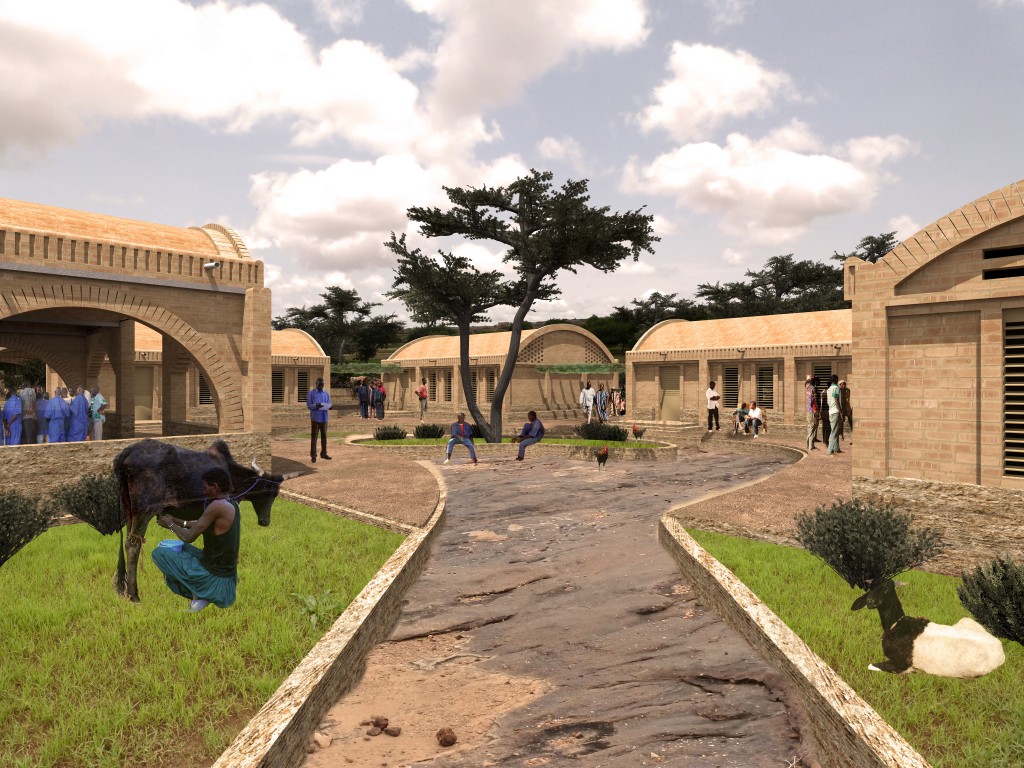 View from the schoolyard to cluster Agriculture
View from the schoolyard to cluster Agriculture
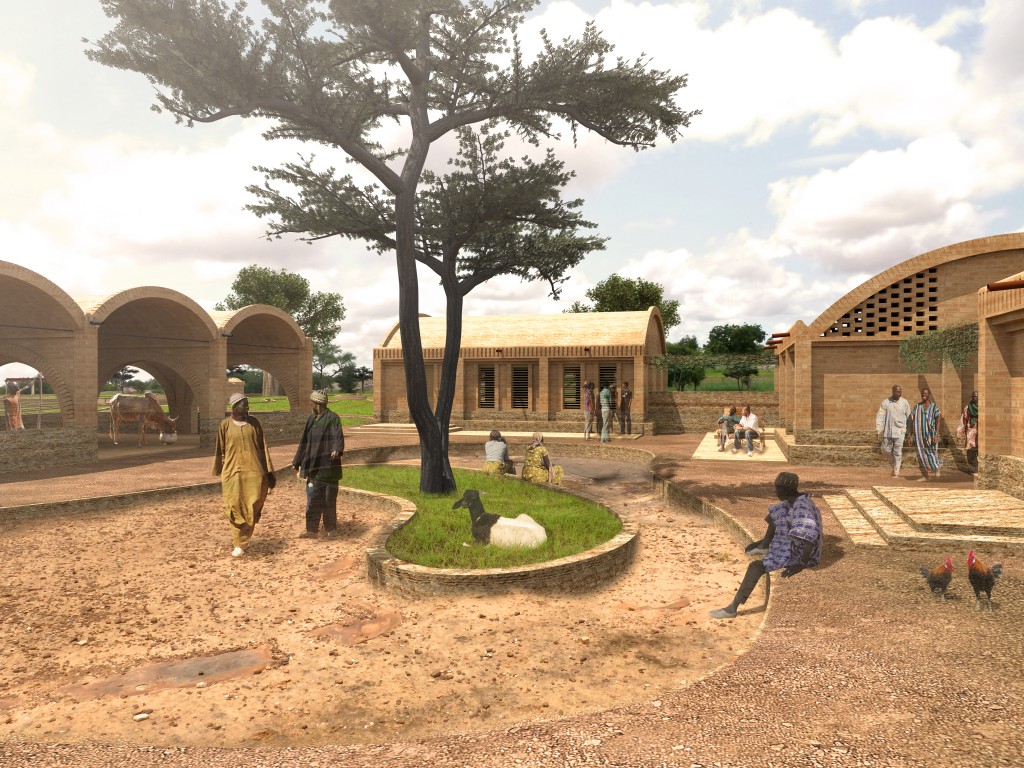 View of the courtyard in the cluster Agriculture
View of the courtyard in the cluster Agriculture
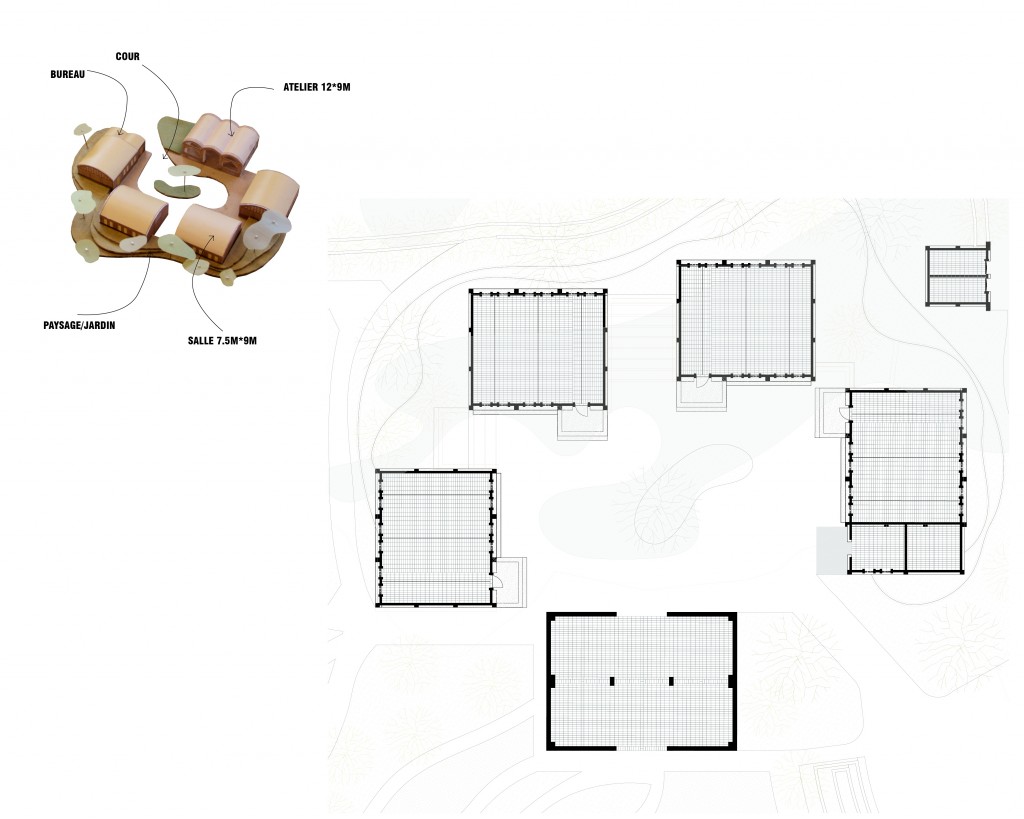 Floorplan cluster Agriculture, 1 studio + 4 classrooms with office
Floorplan cluster Agriculture, 1 studio + 4 classrooms with office
FAMILY 2: TECHNIQUE
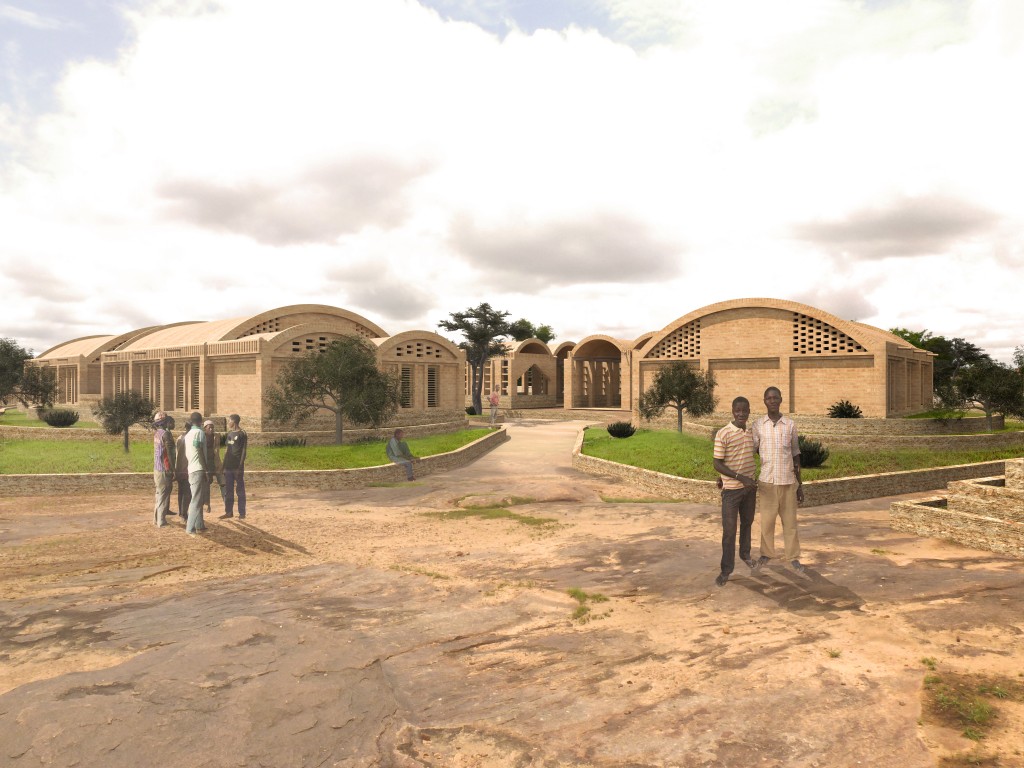 View from the schoolyard to cluster Technique
View from the schoolyard to cluster Technique
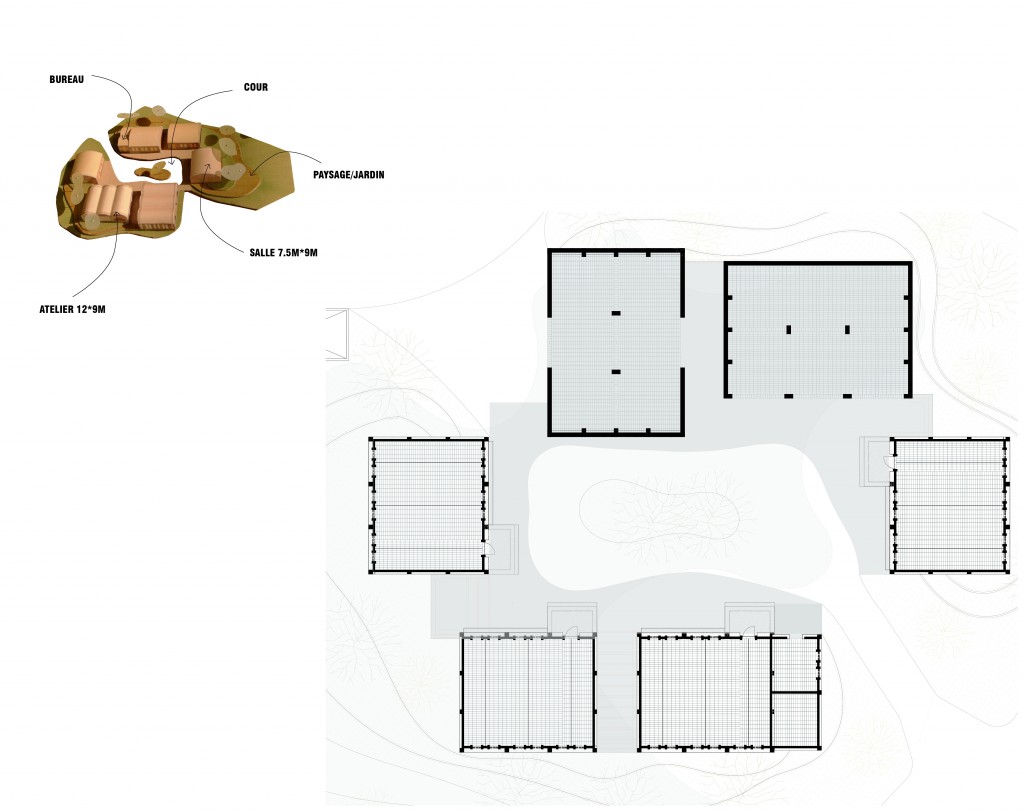 Floorplan cluster Technique, 2 workshop buildings + 4 classrooms with office
Floorplan cluster Technique, 2 workshop buildings + 4 classrooms with office
FAMILY 3: GENERAL KNOWLEDGE
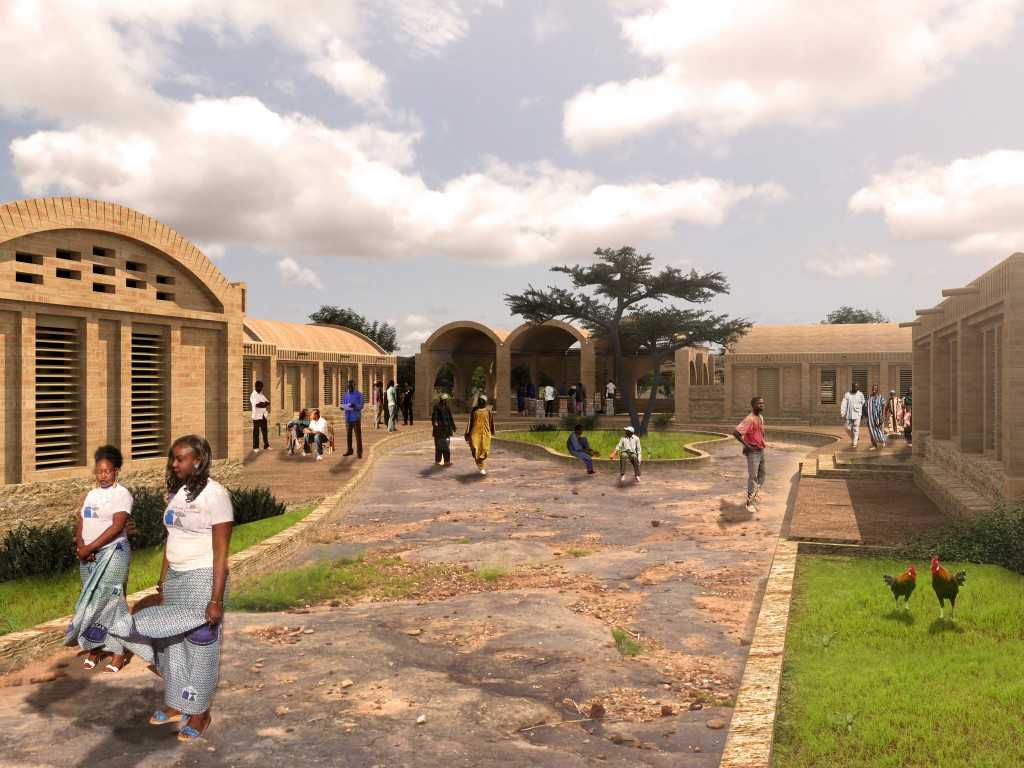 View from the schoolyard to cluster General Knowledge
View from the schoolyard to cluster General Knowledge
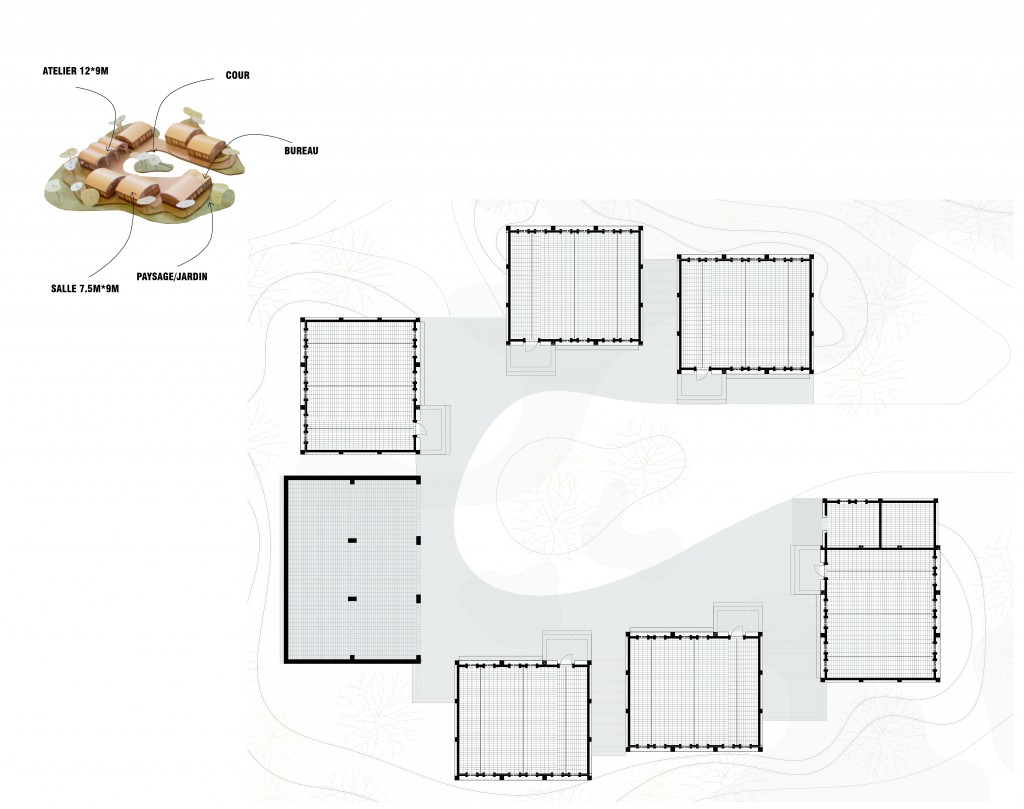 Floorplan General Knowledge cluster, 1 workshop building + 6 classrooms with office
Floorplan General Knowledge cluster, 1 workshop building + 6 classrooms with office
THE BUILDINGS
The school classes
The school classes will be freestanding and each has a basis surface of 7, 5 by 9 square meters. These school classes may be realized in different shapes, but they will always carry barrel vaults with drawbars. Pivot windows will provide light and shade. The head-end facades will carry openings for ventilation. On three sides the school class will fit into the garden. The small walls of stacked stones will provide comfortable sitting next to the building. The school class is positioned on rock bottom. As this bottom is uneven, it is filled up in order to achieve a flat floor in the school class. This also means that the floor level of each school class is different.
The hangar has a surface of 9.00 by 12.00 m², and carries three barrel vaults. There will be two basis models. The implementation of the facades will show variations. In principle, three sides will be half-closed against the sun. But they will also carry openings to allow for wind and ventilation. The differing building techniques are part of the learning process.
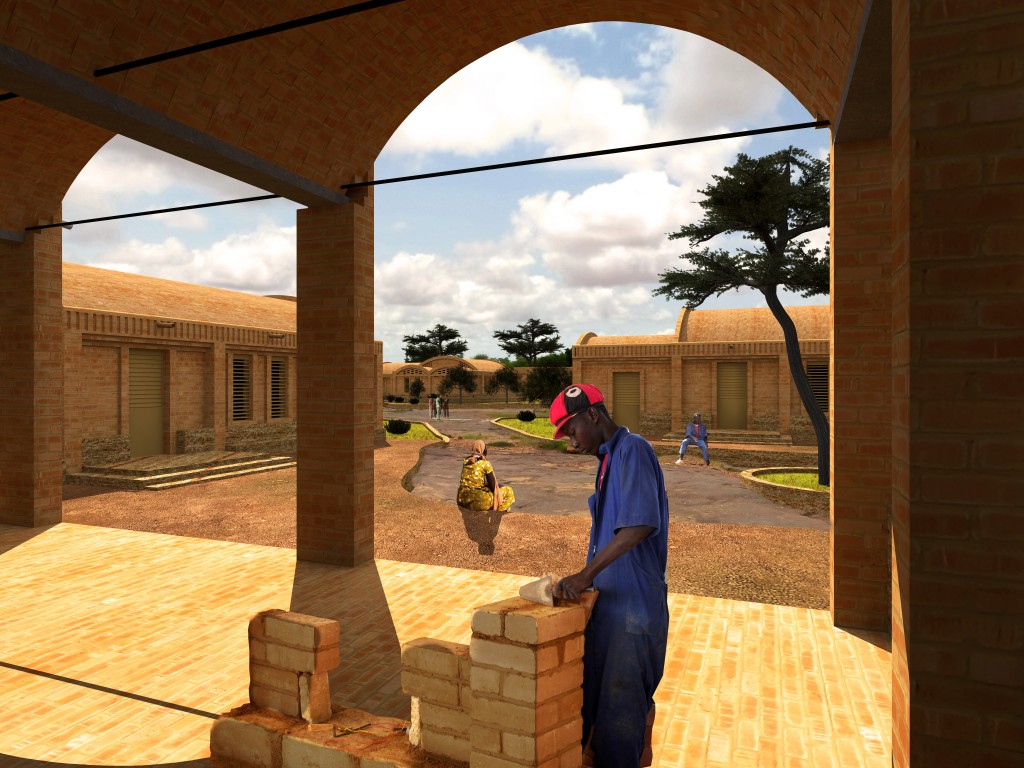 Students receive practical training in the workshops, by building bricklaying walls
Students receive practical training in the workshops, by building bricklaying walls
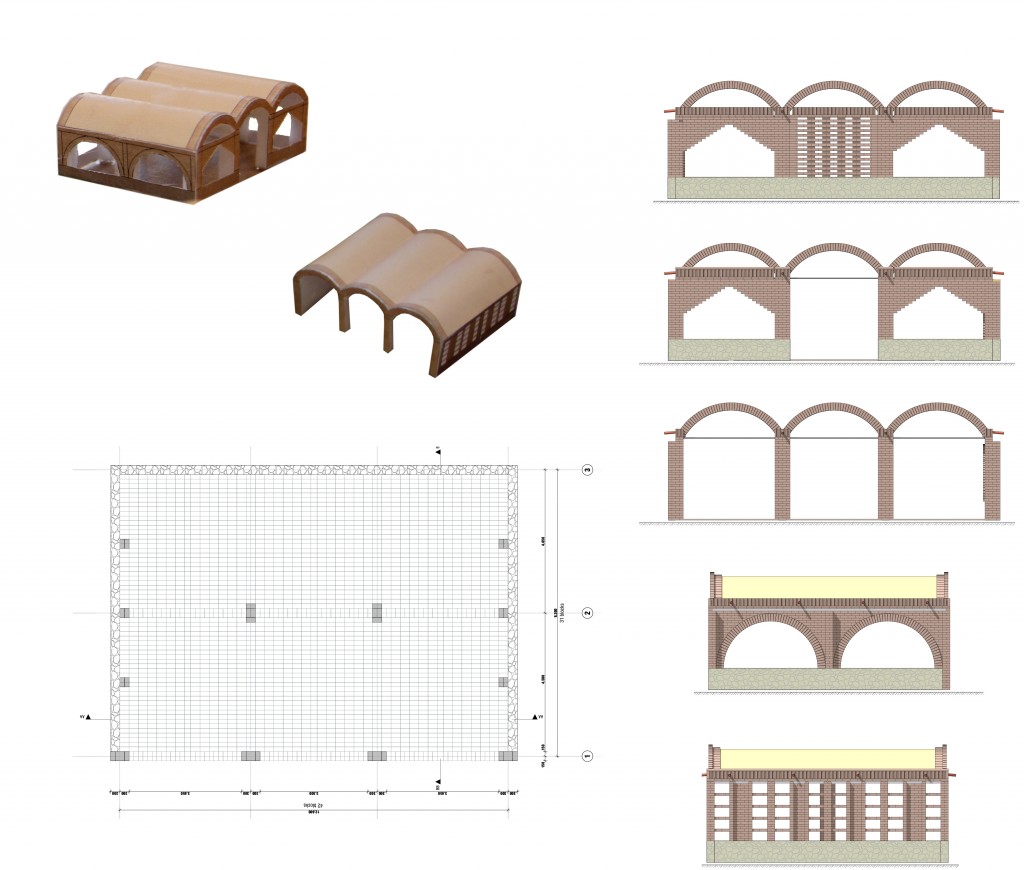 Storage facilities and work spaces
Storage facilities and work spaces
Each cluster has two spaces of about 10 m² which are provided to the cluster head and which serve to store school materials. These storage facilities might be extended upon need, just like the granaries of the Dogon.
The office and administrative space
The administrative program will increase in the course of time. In the beginning, the needs will not be so intense, but in the future they will grow. Also here we start with little space. Time will teach us how much space is really needed.
The program of the library has not yet been defined. It should be investigated whether it is needed or if the existing library in Sangha could respond to demand.
A space for students, traditional Banco
A space for students might probably be combined with other functions. The spaces for students will be constructed in traditional banco (clay), under the supervision of a mason from Djenné with a lot of experience in clay. This building will need regular maintenance, as it is sensitive to the rain. But this will also create the opportunity as a ‘living object’ during the training sessions in the restoration of cultural heritage.
Sanitary installations
Each ‘family’ of buildings will have toilets, taking into account the dominant direction of the wind. The houses will also provide washing rooms.
Houses
Actually ten houses will be built with its own and enclosed terrain. The houses will equipped with cooking facilities economizing energy.
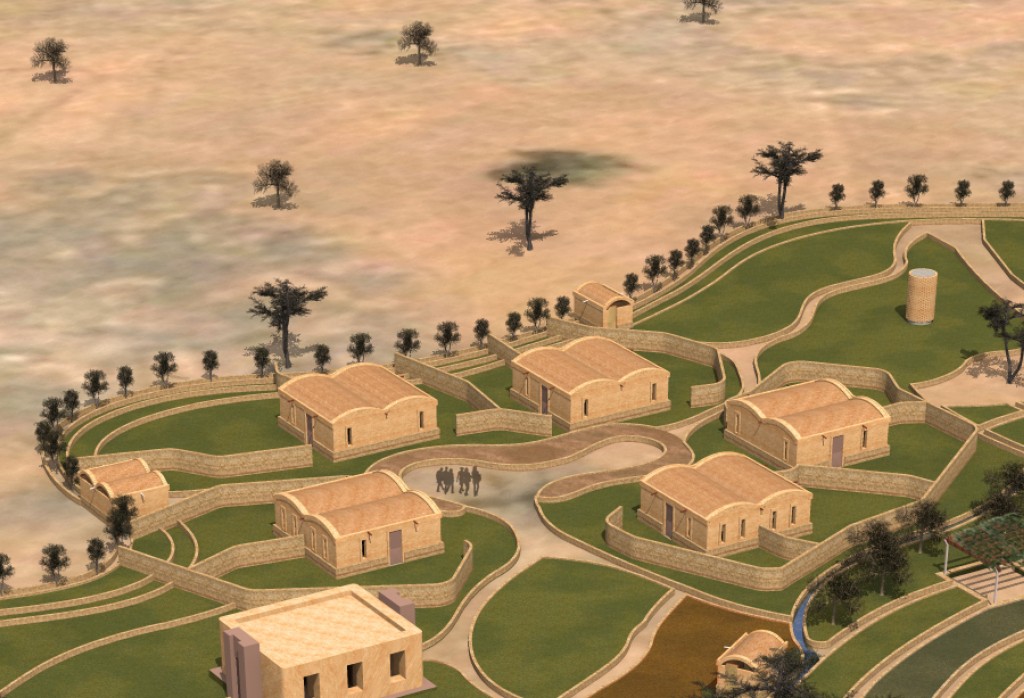
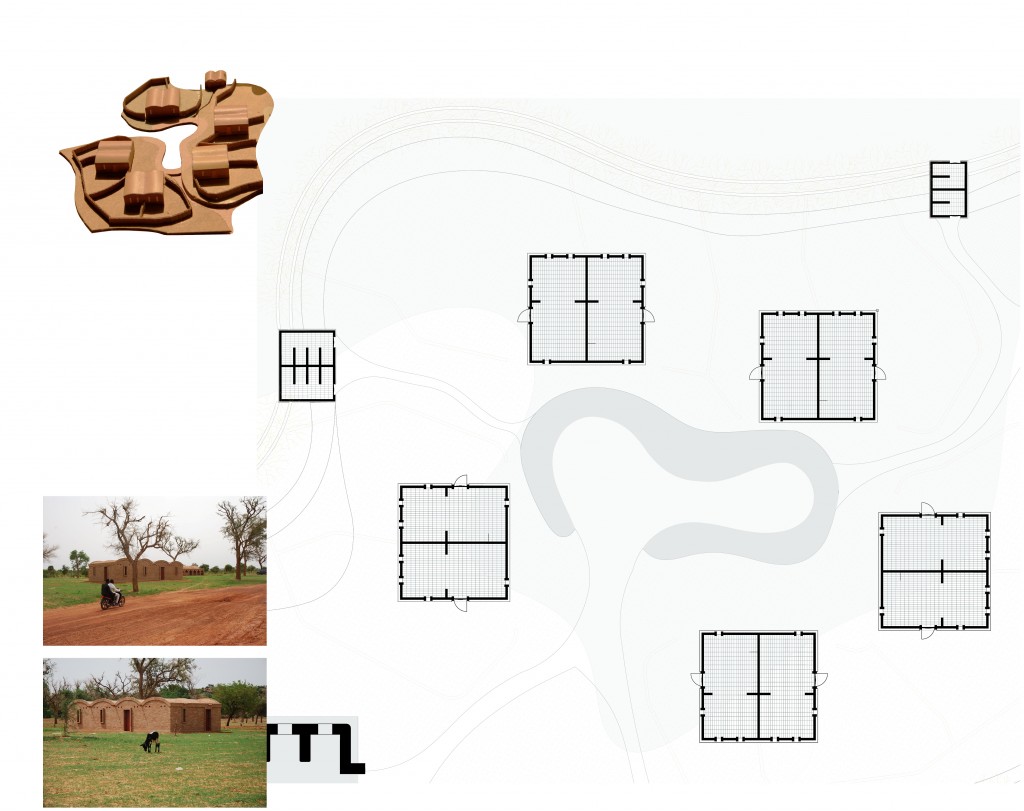 Entrance building and a room for the guard
Entrance building and a room for the guard
A gate will serve as the entrance to the school community. On top of the roof of the gate building solar panels will be installed. Next to the gate building, a room for the guard will constructed.
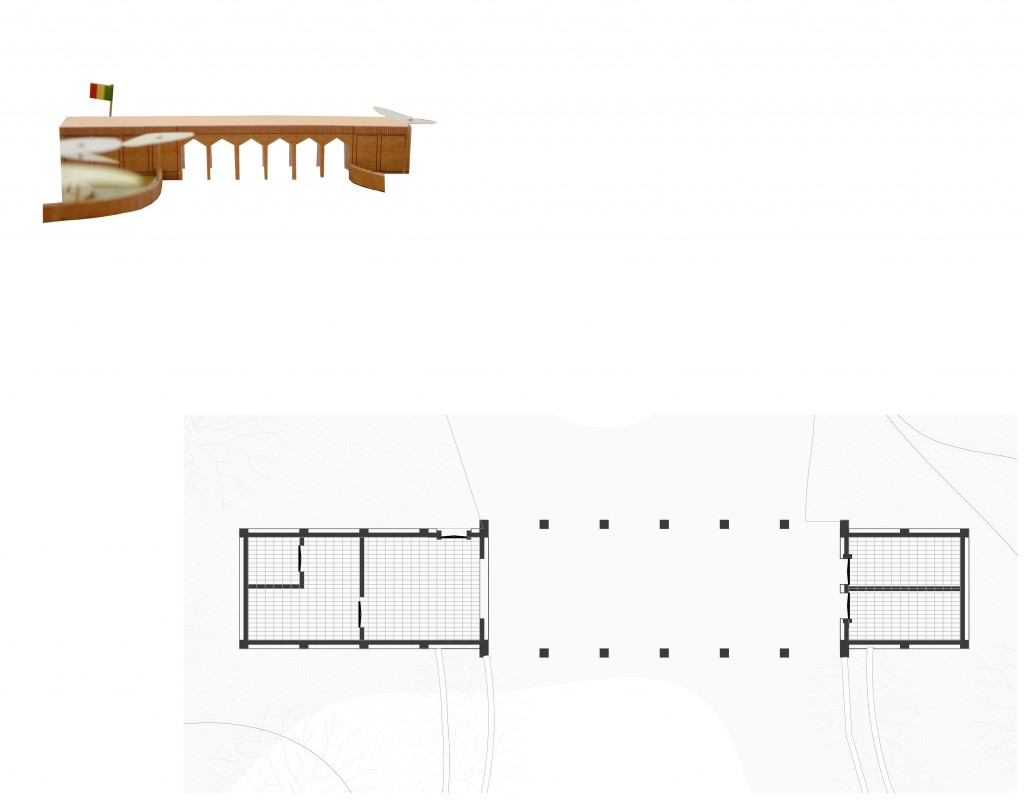 The landscape and the ‘gardens’
The landscape and the ‘gardens’
Just like we are looking in the architecture for a connection between the new and the old cultures, the basic plan will also offer the possibility to subdivide and to distribute the terrain. The existing paths and motifs will be maintained, just like we always do too when creating onion gardens. At the same time the garden should offer room to new techniques and agricultural methods. The basis will be determined, but it should be flexible in order to grow with the changes over time.
It is of very great importance to set up a considerable stock of water in order to really facilitate the functioning of the school and of the terrain. A number of water-wells will be drilled. Pumped up by pumps driven by solar panels, water will be sent to water-towers and to water basins.
THE IMPLEMENTATION
The construction of this Practical Training College will need in total three years. The first and the most important activity is the installation of sufficient water provisions. Hereafter we will begin with the putting in order of the terrain in its totality. Next the clusters of the school classes will be built. The entrance building, the offices and the houses will be built in last instance. In the first year, the cutting of stones, necessary for the putting in order of the terrain, will ask a lot of time and energy. Next to this, fertile soil should be transported on quite an extensive scale. The construction of the first school buildings will take place from half November 2014 on. The placing in service of the first cluster will occur in October 2015.
The students of the Practical Training College will actively contribute to the realization of the school and the school environment.
The Practical Training College and the connected school organization by the way, have already begun from October 2013 on in the neighboring and already existing buildings of the second cycle. This is important because this way the new buildings of the Practical Training College might be used immediately after construction by a selection of meanwhile formed teachers.
The many villages of Sangha, the students association and students from Bamako and the parents association will all contribute to the construction in the coming years.
They can really not pay very much, but they will take care of many practical tasks. Like the transport of stones and soil, the measurement and the arrangement of the terrain and the food supply of the builders.
THIS PROJECT IS POSSIBLE BY THE SUPPORT OF THE FOLLOWING PARTNERS:
Travel report May 2013
From 26 April to 6 May 2013 we have paid a work-visit to various projects, together with our local counterpart organization ADI. Central issue next was the reinforcement of the organization with Gedeon Kassogue, who’s most important tasks are the further organization of the administrative tasks, reporting and the intensification of the discussions with the government about education, the policy towards schools and the support of teachers. Further we had important meetings with the new governor of Mopti, the minister of education in Mali, various mayors and regional governmental institutions.
A new, large project we embarked on is the “Lycée professional” in Sangha. It delivers vocational education for construction and agriculture. In our view, this activity will on its turn attune very well to our ambitions with the green desert and the improvement of agriculture. Thereupon we have been visiting schools under construction, looked into the results of the trainee project with the onions houses and we have made an evaluation with the director of the Technical School, we installed the first water committee and we had discussions with an organization regarding the content of renewals in education and in projects.
Last but not least we are working with a large team in setting the next step for projects in Nando and in Yougo Dogorou. In short there is a lot again to tell and to report on.
Agriculture and technical high-school in Sangha
Three years ago we had the first discussion with Aly Dolo, the mayor of Sangha, about a practical high-school with courses in construction and in agriculture in Sangha. Hopefully it will be possible in 2014 to start with the building. Anyhow a number of important steps has been set that are conditional to the start-up. Two months ago the minister of education has been visiting Sangha and he has given his approval in principle.
He was also convinced by the large number of primary schools already present in the region, amongst which we have been realizing a considerable part. The second condition is that the various villages and sections of Sangha make a terrain available. This has also been arranged and formalized through a contract. As SDO-ADI we also paid a visit to the minister, in order to get the confirmation that a double school might be realized with support of the government that should carry the full financing of the teachers. The starting point is a total of at minimum 600 students. The last condition in our view is always the commitment of the villages to contribute in the coming years.
For this reason a meeting has been organized with the participation of the mayor, the under-prefect of Sangha, CAP Sangha, a community representative (Cercle de Bandiagara) to which Sangha belongs, the most important Village Heads and the representative of the parents (EPU). The community has made available a terrain of 5 hectares, along the road from Sangha to Tiogou, nearby the cluster of schools of the 2-end cycle.
In principle and all over the school will consist of 12 classes, 3 workshops, an administrative block, a meeting hall and still some facilitating rooms. A rather large part of the terrain will be prepared for practical agriculture education. In the coming years we will have to take care that the financing will be arranged and we will prepare a project proposal for this. It is important however that the local Dogon are prepared to co-finance 25 % of the project. If we manage to arrange the financing, then we hope to start the project in 2014. We will keep you posted about the plans and the needed financing.
(Nederlands) Samenwerken met leerlingen werkt perfect!
Best wishes from Mopti
Wat laat in de maand, maar alsnog wenst de nieuwe directeur van de Technische School (ETJS), Domo Hubert Kodio, vanuit Mopti iedereen met betrekking tot Stichting Dogon Onderwijs een gezond en gelukkig nieuwjaar toe.
The new director of the Technical School (ETJS), Domo Hubert Kodio, is wishing everyone connected to Foundation Dogon Education a healthy and happy new year.
On the back of the card he proudly shows what the achievements of last year’s first Prix de Joop were. Also, the Techincal School’s website will shortly be updated but it already shows a lot of the School’s activities unti 2012.
The website (in French) can be visited through the following link:
Fun parts:
– Accueil > Historique (a timeline of the school’s activities)
– Spécialités > Filiere Industrielle (pictures and studen tnumbers)
– Actualité (current affairs and news messages)
Prix de Joop
The first presentation of the ‘Prix de Joop’ was a big feast. Wednesday afternoon 28 November 2012, twelve (12) fourth class students in masonry and bricklaying received their instructions. For the very first time these 8 men and 4 women are about to lay bricks with pressed earth stones. The masonry of these stones forms no part of the ‘curriculum’ of their education. During the competition however, all students will have an opportunity to show what they are up to. A big difference with the concrete stones they normally use for bricklaying is that these pressed earth stones have to be processed like ‘clean masonry’. The small walls will be judged according to their appearance, the height, the selection of stones, the finishing and the width of the joints, and, of course, whether they are “waterlevel”. Basil, head of the section and already from the very beginning involved in bricklaying education, is a patient and inspiring teacher.
Thursday, at 7.00 o’clock, we can really start after a small speech of the schooldirector after yet another encouraging statement of Basil. The foundation, the socle is made of concrete stones, based on which the elegant design of the ‘entrance’ will be constructed. The walls will be considerably smaller than we first thought, and also the idea that every student would make hsi of her own design was too difficult according to Basil. I am glad that he corrects me so directly and that he explains to me how the instruction will produce better results. Also his enthousiasm increases in the following days. At the beginning and at the end of the day I pay a visit to the school and I can see the progress made. Some students start with determination, but on the other hand are a bit careless.
Prix de Joop from stichting dogon onderwijs on Vimeo.
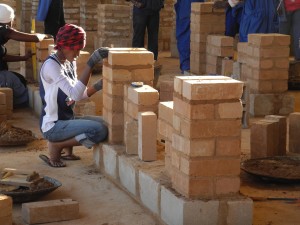 Other students, as if they were real artists, take regularly some distance from their work, have a look at it, and next still make some small adjustments to the ‘just laid bricks’. Bricklaying along a thread with positioning profiles is not yet feasible. Each stone is laid with the water-level. Saturday morning, one student is already completely done, while others are still taking care of the ultimate finishing touch, plastering with positioning profiles from the socle, and inspecting patiently once again the joints with pointing-trowel and brush.
Other students, as if they were real artists, take regularly some distance from their work, have a look at it, and next still make some small adjustments to the ‘just laid bricks’. Bricklaying along a thread with positioning profiles is not yet feasible. Each stone is laid with the water-level. Saturday morning, one student is already completely done, while others are still taking care of the ultimate finishing touch, plastering with positioning profiles from the socle, and inspecting patiently once again the joints with pointing-trowel and brush.
At 11 o’clock, I make a stroll with Idrissa, an architect in Mopti, and with Basil and Amatigue in order to make an appraisal of the constructed walls. About the number 1 we agree, without hesitation, very fastly. Really a very beautiful wall, where we have no comments at all. Judging the numbers 2 and 3 is far more difficult. Honestly speaking, we, and not least Basil, are all amazed about the high quality. It is clearly a small class with go-getters, whom we will surely be able to engage in our projects.
During the presentation of the prices, adapted on request of Basil, all students receive a reward; next to an amount of money, they receive a trowel, a metal skimmer and the necessary working clothing. In my speech I stress again the importance of their education and their work, and I emphasize that they should think themselves now about the future and about entrepreneurship.
C’était une grande fête pour participer à la distribution du premier ‘Prix de Joop’ . Le mercredi, le 28 novembre 2012, dans l’après midi, les 12 étudiant(e)s de la quatrième classe ont reçu leur commission. Pour la première fois, les 8 hommes et 4 femmes vont maçonner avec des pierres en terre comprimée. La maçonnerie des ces pierres ne fait pas part du ‘curriculum’ de leur formation. A cause de cette compétition, tous les étudiant(e)s ont la chance maintenant pour montrer ce qu’ils/elles peuvent. Une grande différence avec les pierres en béton qu’on utilise normalement dans l’éducation c’est qu’il faut qu’on les travaille comme ‘maçonnerie propre’.

